There’s nothing quite like the kitchen at full tilt — dinner bubbling on the hob, the sticky remains of a baking session clinging to little hands, and someone inevitably calling out, “Put the kettle on!” But if your family kitchen runs like a motorway at rush hour, anything that pares back risks (and time wasted waiting for appliances) is worth serious consideration. Enter the child-safe 4-in-1 tap: instant boiling water, no kettle clutter, and supposedly, safety at its core. But when you’ve got kids around, the question isn’t just “Is it quicker?”—it’s “Is it truly safe?”
This post is for families weighing up a boiling water tap upgrade, especially those wary of little explorers with grabby hands and anyone tired of hovering nervously every time the kettle’s on the boil.
The Kettle Conundrum: More Peril Than You Think
Let’s be blunt: kettles weren’t designed with children in mind. They’re heavy, they splash, and the flex can dangle like a dare for curious toddlers. NHS statistics show that 95% of burns happen at home — and scalds from hot drinks and kitchen mishaps are among the biggest culprits in childhood injuries. It’s not just the water – it’s the unpredictability: a knocked-over kettle, a misjudged pour, a split-second distraction.
It’s tempting to park the kettle permanently. But are boiling water taps any better, or do they just swap one danger for another hidden in a tidy tap-shaped package?
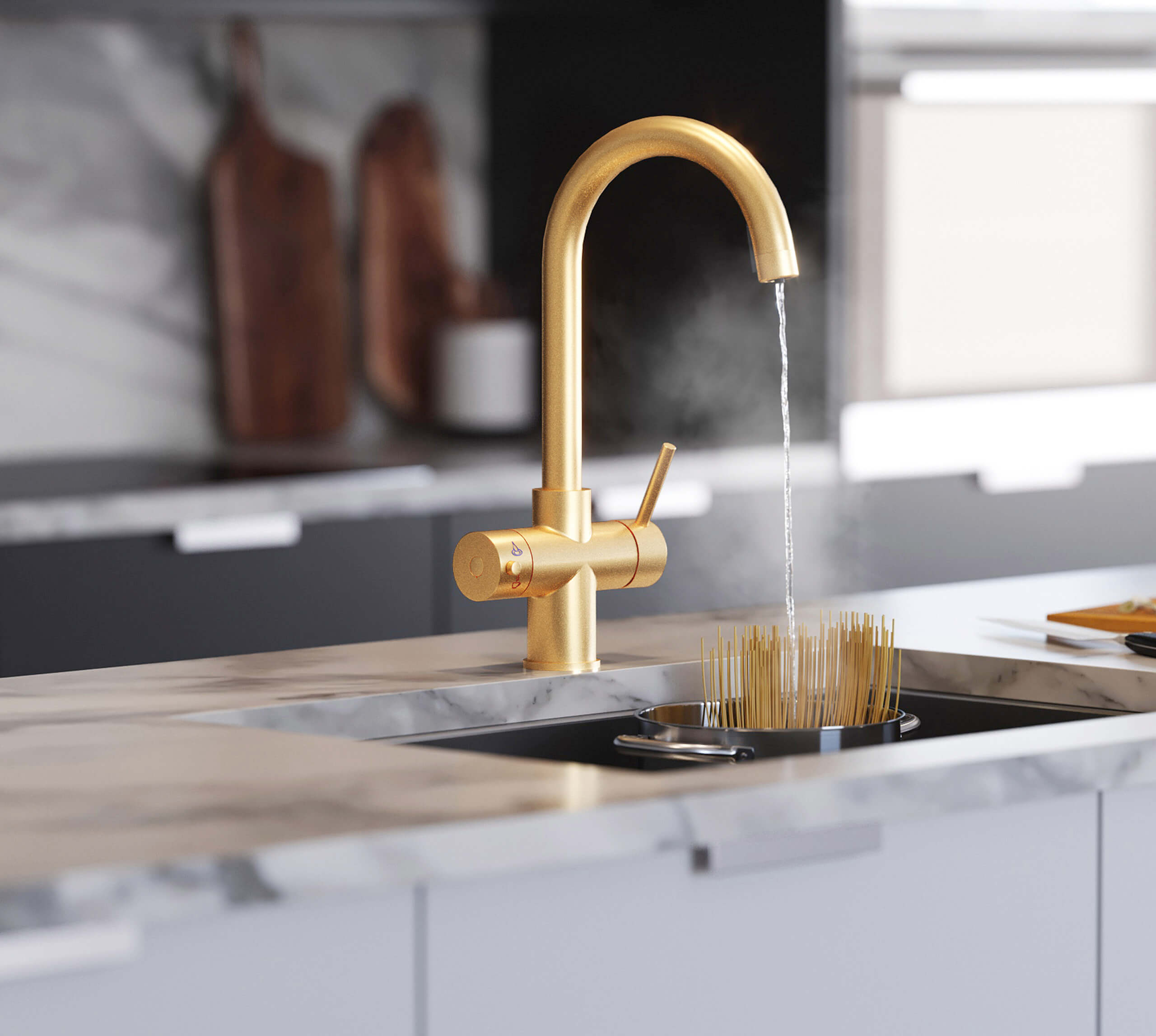
A Smarter Way: Built-in Child Safety (Not Just a Sticker on the Box)
The good news: modern boiling water taps are lightyears ahead of kettles when it comes to built-in safety. This isn’t just about a “keep out of reach” sticker — we’re talking about hardware-level childproofing that requires intention and dexterity, not just luck.
Instead of a wobbly kettle that goes wherever a toddler can reach, a child-safe boiling tap is installed out of the way, anchored over the sink, and packed with mechanisms specifically to stop accidental (or mischievous) operation. Even if you’ve got a little Houdini in the house, modern designs make boiling water hard to get — unless you’re a grown-up who knows what you’re doing.
So, what exactly goes on behind the scenes? Here’s how safety is hardwired in.
What Makes a 4-in-1 Boiling Water Tap Safer for Children?
1. Child-Proof Locks and Spring Mechanisms
The first line of defence is a physical child-safe lock — usually a two-stage action that requires pressing and turning, or holding down a safety switch while moving the handle. It’s fiddly on purpose: deliberate enough to confuse the average toddler but intuitive for competent adults.
On top of that, most quality boiling water taps (including all of ours) use a spring-loaded handle. That means as soon as you let go, the flow stops. No risk of boiling water continuing to run if someone walks away or gets distracted by a runaway chip on the floor.
2. Insulated, Cool-to-Touch Spouts
Boiling water taps get around the common kettle hazard by insulating the spout — it stays cool, even as boiling water flows through. So clumsy hands and accidental bumps won’t result in burns.
3. Stable, Controlled Water Flow
These taps dispense a steady, direct stream of hot water into the sink or your cup—no carrying, spilling or spluttering like an overfilled kettle. This dramatically cuts the chance of dangerous spills.
4. Automatic Shut-off and System Monitoring
If you’re the type to start a job and wander off (who isn’t, sometimes?), these taps are designed with forgetfulness in mind. Release the handle, and the tap snaps off. Advanced models continually monitor internal temperature, ensuring the water remains at safe levels.
5. Certification and Independent Testing
Look for WRAS approval: it’s the Water Regulations Approval Scheme stamp that shows a tap meets stringent UK safety and hygiene standards.
“But I Still Worry About Boiling Water In The Kitchen…” (Let’s Address the Common Concerns)
What if my child figures out the safety lock?
Today’s locks are intentionally tricky—arguably more puzzle box than tap. Still, no gadget replaces supervision. But with spring locks, two-stage activation, and automatic shut-off, the risks drop drastically compared to traditional appliances.
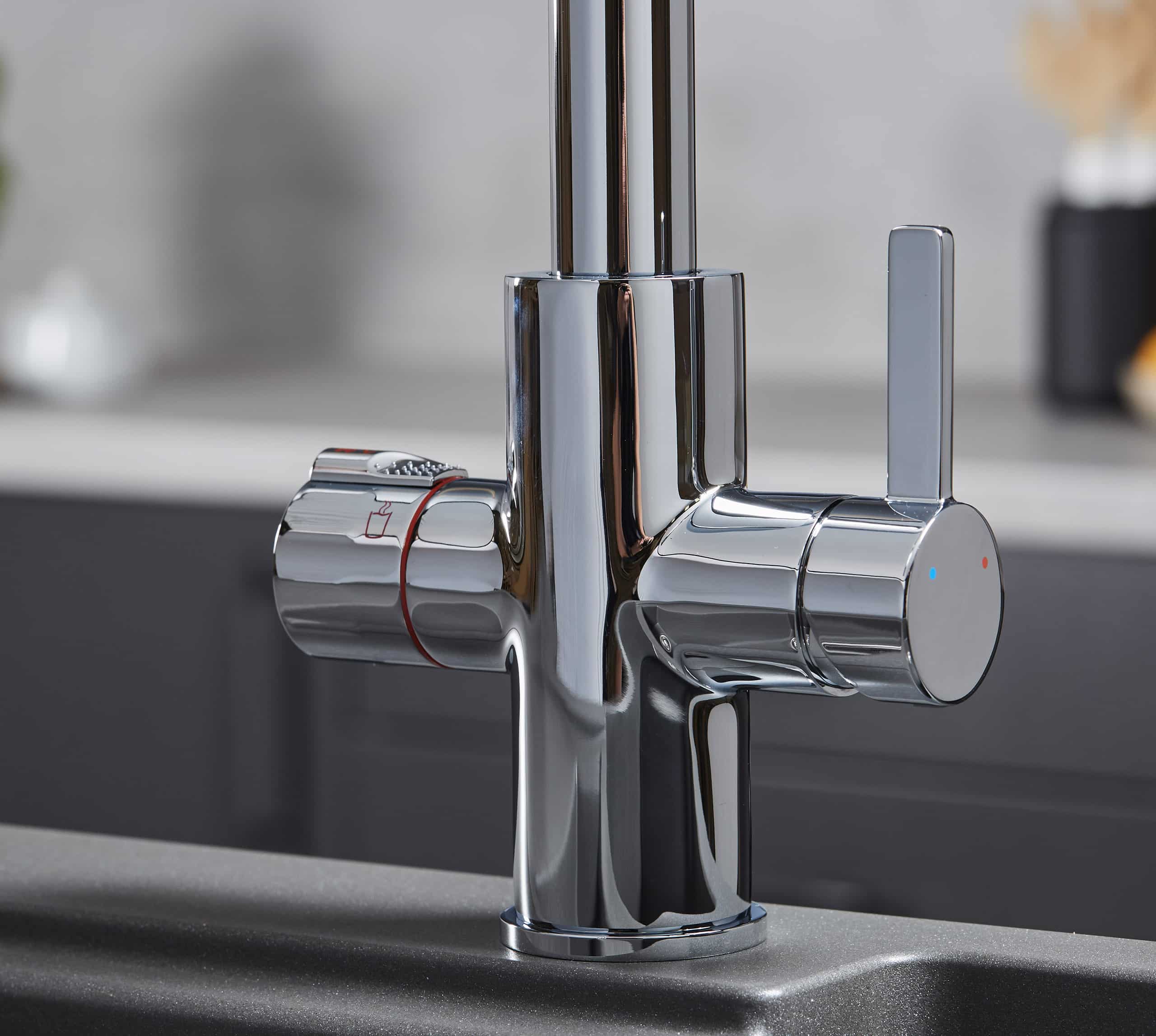
Aren’t these taps more dangerous because boiling water is always available?
Actually, they’re safer. The access is deliberate and controlled — no chance of a child sneakily filling a pan. And because there’s no portable jug, you eliminate the risk of tipping hot water across laps or toes.
What about elderly relatives or confused visitors?
That’s another reason to value features like spring-loaded handles. These taps are made for intuitive but cautious use, which helps everyone, including elderly people, feel safer in a shared kitchen.
The Takeaways: Why 4-in-1 Boiling Water Taps Are a Practical, Family-Safe Bet
Built For Real Kitchens:
Safety mechanisms ensure the boiling function needs conscious, coordinated action. Compare that to a tip-prone kettle, and the tap wins hands down.
Clutter-Free, Accident-Proof:
No more cord snags, kettle dribbles, or panicked shouts. The tap sits out of the way, always ready, but never reckless.
Less Supervision, More Confidence:
You’ll still keep an eye out, but with a child-safe 4-in-1 tap, you replace daily anxiety with genuine peace of mind — without giving up tea breaks, speedy pasta, or sterilising bottles on demand.
If you’re rethinking how your kitchen works for your family, remember: safety and convenience aren’t competing interests. The best kitchen kit (like our premium 5-in-1 tap) manages both, elegantly. After all, saving energy shouldn’t mean sacrificing convenience — and having your instant boiling water, minus the panic, is the kind of upgrade that quickly becomes essential.
Still worried? Reach out and one of our team will be happy to discuss your concerns.
If you’re emptying the kettle for the third time this morning—or chasing stray potato peelings down the sink while juggling Sunday dinner prep—there’s probably a better way. The “kettle shuffle” and wrestling with a traditional spray hose get old fast. Cue the latest multi-tasker making British kitchens smarter: the pull out boiling water tap. Think neat looks, instant boiling water, and a flexible sprayer, all in one clever tap. But does a boiling tap with pull out spray actually deliver on both convenience and good design? And how safely?
This is for the busy family, the dedicated home cook, and anyone tired of their kitchen fighting back.
Fed Up with Fiddly Taps and Kettle Juggling?
Let’s face it: the average kitchen gets a thorough workout. Every splash, scald, and scramble to fill a tall pot highlights how, sometimes, the most “functional” bit of kit is a little too basic. Sure, a regular boiling tap is a step up from a whistling kettle, but the standard spouts don’t always play nicely with awkward cookware, rinsing veggies, or soaking dog bowls.
Meanwhile, the usual pull-out taps miss a trick: fetching a jug of cold, boiling, or filtered water still means shunting pans around or running several appliances. That’s not to mention the classic safety worries if you’ve got kids or guests wandering near the sink.
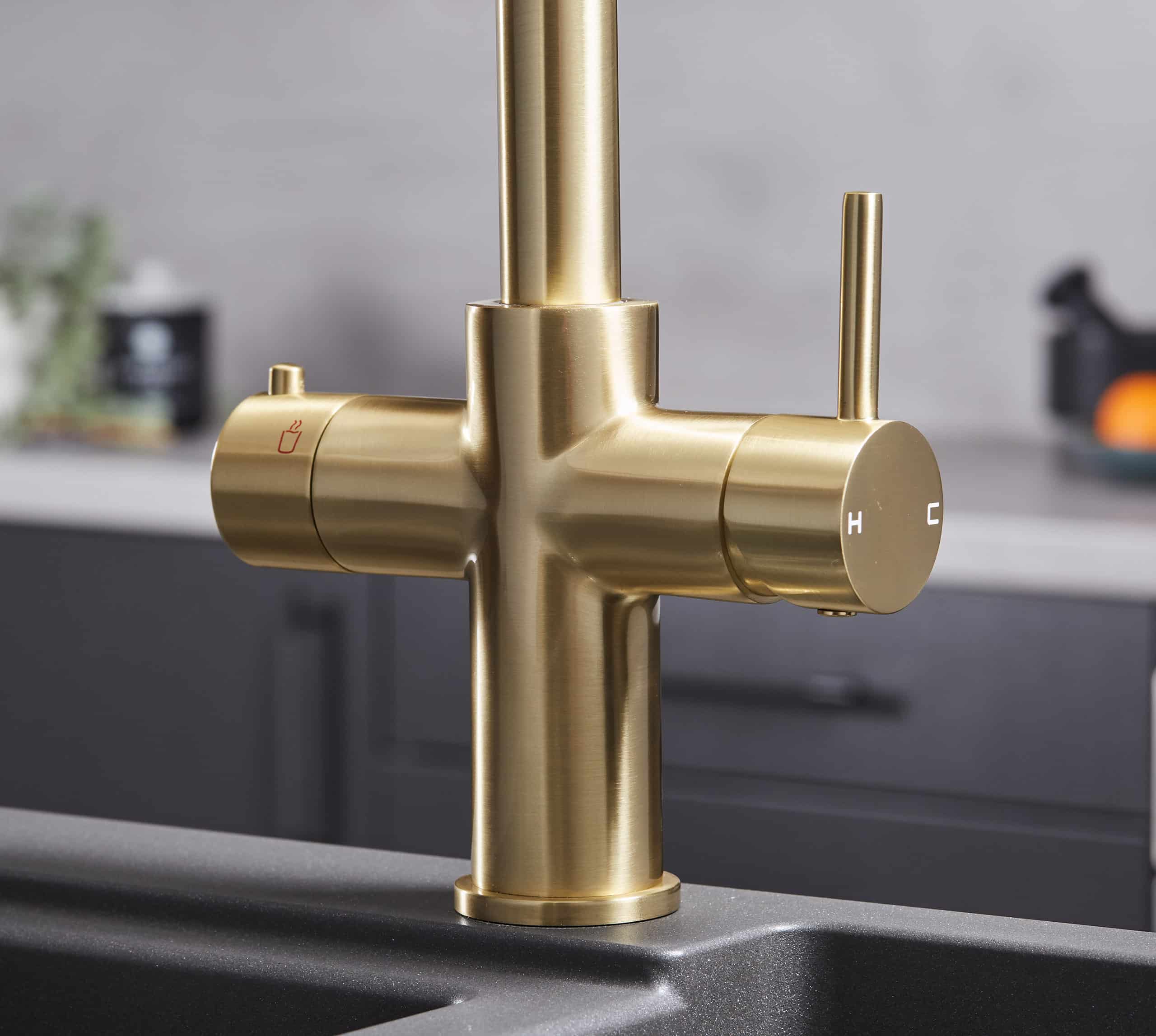
Why Settle for Either/Or When You Could Have Both?
Here’s the rub: most people think you have to pick between a tap that does more or one that looks halfway decent. The pull out boiling water tap is changing that. It combines boiling, hot, cold, and filtered or chilled functions—plus the liberating pull-out spray feature—without cramming your worktop or making the kitchen look like a science lab.
Instead of waiting ages for the kettle, faffing with hot water in a fiddly spout, or watching kitchen tools gather limescale, you just turn, pull, and pour—boiling pasta one minute, rinsing leaves or filling a coffee pot the next. It’s the everyday kitchen workhorse reimagined, designed for real family life.
How Do You Make the Most of a Pull Out Boiling Water Tap?
1. Choose the Right Model for Your Needs
Look for a tap that genuinely delivers all four functions—hot, cold, filtered/chilled, and boiling—in a single, smartly designed unit. Want flexibility? A tap with a pull out spray keeps your worktop clear while letting you reach every corner of the sink. Models like the Platinum 4-in-1 Pull-Out or the compact Astra 3-in-1 Pull-Out offer both style and substance.
2. Install It Where It’ll Shine (and Fit)
These taps are designed for under-sink boiler tanks and typically just swap in where your old tap sat. If you’re handy, it’s often a straightforward job, but if you’d rather not get acquainted with your u-bend, a plumber can handle installation in under an hour. Make sure there’s a mains water connection and a regular plug socket nearby. Need a visual? There are plenty of walk-through videos online, or talk to the installer for tips tailored to your kitchen layout.
3. Learn How to Safely Use the Boiling and Pull-Out Features Together
Worried about whizzy sprayers and boiling water mixing? Don’t be. These taps include multiple common-sense safety systems:
- Child locks and spring mechanisms require a firm, deliberate action—nearly impossible for little hands.
- Safety stops mean you can’t dispense boiling water when the spray hose is extended.
- Insulated spouts keep outer surfaces safe to touch.
- Clear visual indicators let you check if child-lock is on with just a glance.
If you're still unsure about safety in a busy home, our guide ‘Are 4-in-1 Boiling Water Taps Safe for Families?’ breaks down the key protections.
4. Don’t Forget Maintenance
While these taps are built to last, swap out filters as advised (usually every six months) and occasionally descale the spray hose if you’re in a hard water area. Quick tip: if your tap’s losing water pressure or tasting odd, check the filter before phoning anyone. It’s usually a two-minute fix.
Isn’t a Boiling Water Tap with Pull Out Spray Just Overkill?
You might wonder, “Do I really need all these features in one tap, or is this just another step toward a kitchen full of gadgets?” Here’s the practical answer:
If you value convenience, space, and not queuing at the kettle, combining these features means you get more done, more safely, with less fuss.
Design-wise, combining the pull-out function with boiling and chilled/filtered water options actually reduces clutter—one tap, one hole, tidy worktop.
Still worried about safety? The layered locks and auto shut-off mechanisms in quality instant 4-in-1 tap models set a far higher safety bar than any ordinary kettle or basic pull-out spout.
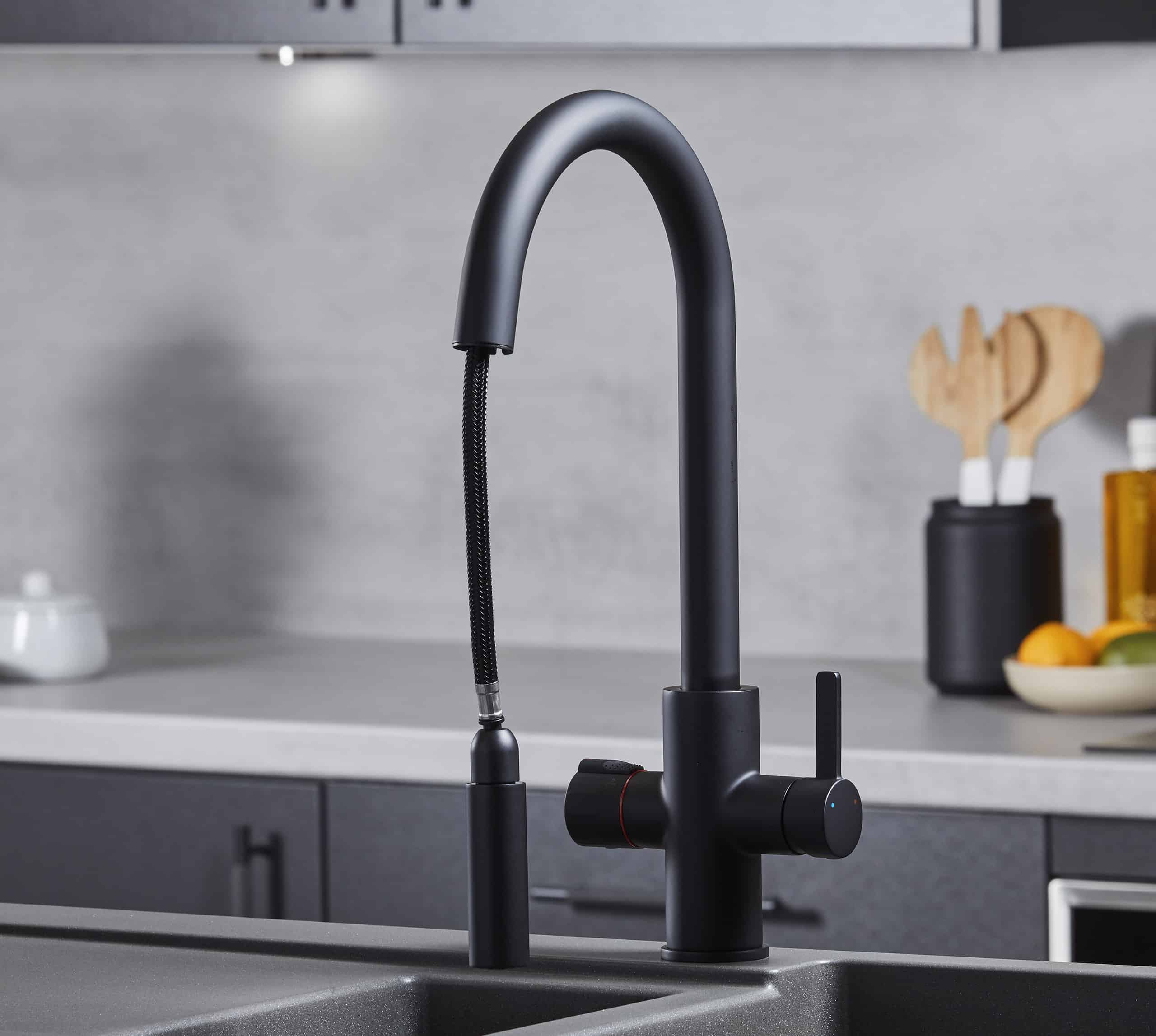
A Smarter Kitchen Starts with Practical Upgrades
Don’t waste years squeezing pots under a fixed spout or waiting for a tired kettle to boil. Do your research, look up brands with clear safety credentials, and insist on those dual-action locks if you’ve got kids at home (or the hands of a sleep-deprived parent). Check out our Ultimate Guide for help choosing the right model.
Explore what’s possible with our full pull out taps range, and give your kitchen the kind of upgrade that earns its keep—every single day.
There’s nothing like the British tea round for exposing the limits of a kitchen kettle. Too slow, too small, too many boil-it-again moments—especially when every mug gets a different “just right.” If you’ve ever found yourself peering into the kettle, wondering if there’s enough for one more, or refilling it mid-dinner prep while the pasta waits, you’re in good company.
Cutting out these faffs is why boiling water taps have become the quiet revolution of busy homes—delivering instant hot water, better kitchen rhythm, and, yes, a lot fewer arguments about whose turn it is to wait for the kettle.
Why Tank Size Isn’t Just a Numbers Game
Most people think bigger is always better, but in a kitchen, too much “more” means a tank eating up space, higher running costs, or boiling water you never use. Too small? You’ll be staring at a reheating light, waiting for the next cuppa.
As kitchen tech gets smarter, tank choices go from a “one-size-fits-all” affair to something that should match your actual life. When we designed our 2.4-litre standard tank—the one included with every tap we sell—we aimed for the sweet spot: enough hot water for real homes, in a shape that actually fits British under-sink cupboards.
As one of our customers put it: “Since switching to a 2.4-litre tap, I haven’t used the kettle once. Even on a busy Sunday!”
Let’s break down what you actually need to know—no maths degree required.
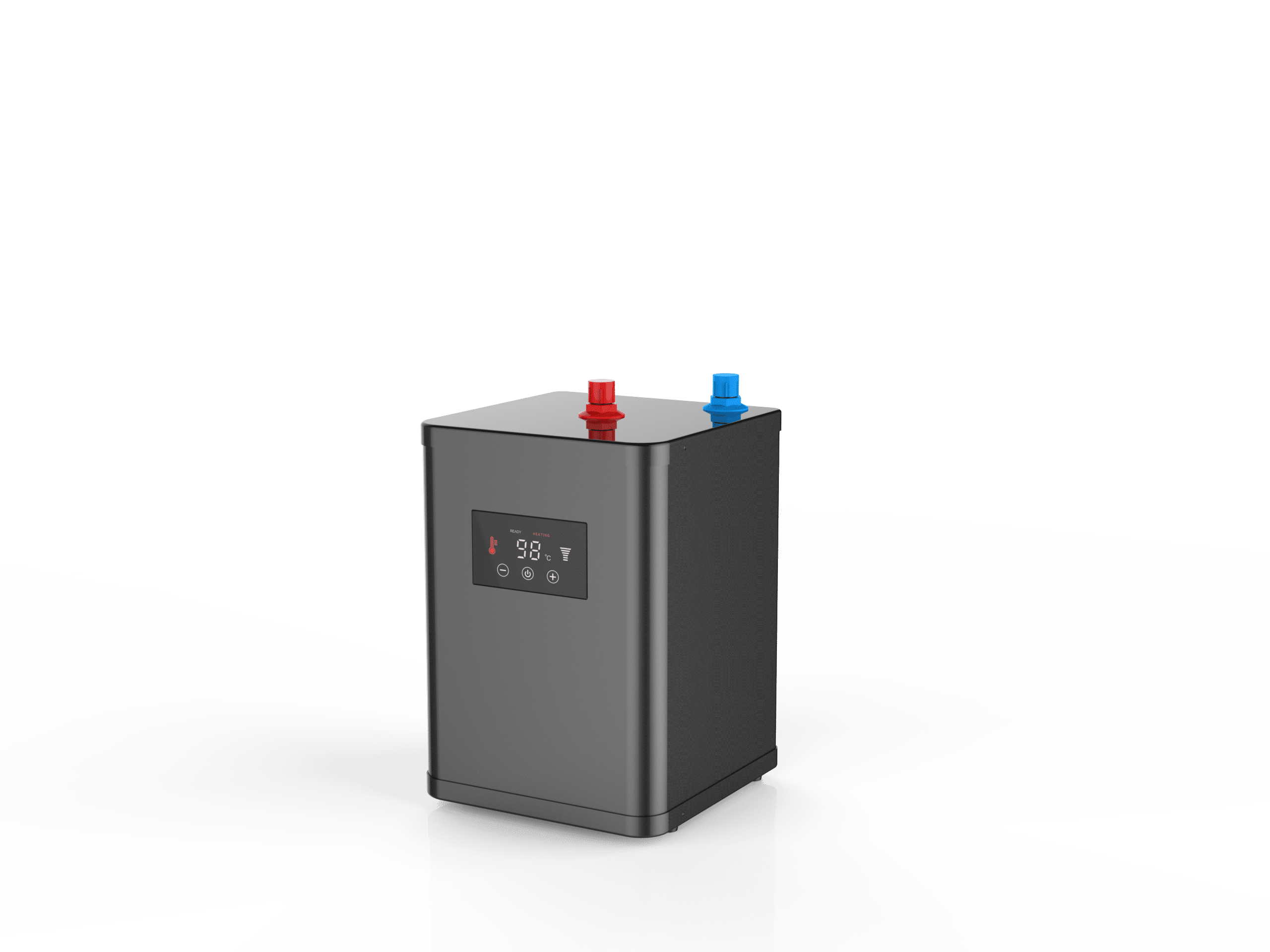
The Practical Solution: Match Your Tank to Your Routine
2.4-litre tank (our standard)
- Capacity: Roughly 5–6 large mugs or pans filled with boiling water at a time.
- Reheat time: Around 4 minutes.
Dimensions: Height 295mm x Width 184mm x Depth 184mm. - Best for: Day-to-day use, small families, home cooks, and anyone who wants hot drinks and a full kettle’s worth of boiling water on demand.
4-litre tank (the easy upgrade, £99 extra)
- Capacity: Up to 10 mugs’ worth—perfect for a full tea round or big family brunches.
- Reheat time: About 4 minutes.
- Dimensions: H: 272.5mm, W: 197mm, D: 299.5mm.
- Best for: Big families, offices, or homes where “another cup?” is always on the cards.
Read more about our boiler tanks here.
Bonus Feature: Touchscreen Temperature Control
All our tanks (except the Avista) include a touchscreen to adjust between 75°C and 98°C—because, contrary to legend, the “perfect” cuppa is brewed at 98°C, not 100°C.
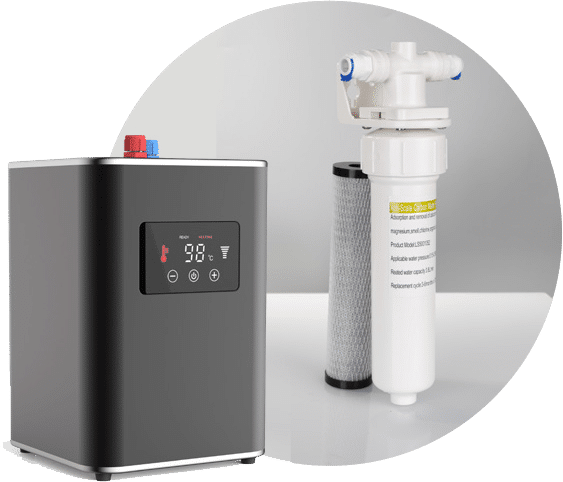
Getting Specific: Your Step-by-Step Tank Sizing Checklist
1. Count your cups—honestly.
If it’s rarely more than 6, the standard 2.4-litre tank should handle all your regular action with zero drama.
2. Think about kitchen space.
Our 2.4-litre tank’s footprint is genuinely tiny, purposely designed to fit the typical British sink cupboard without a wrestle.
3. Consider downtime tolerance.
Both sizes reheat in under 5 minutes—perfect for most routines.
4. Factor in filter swaps for hassle-free hygiene.
Every Hot Water Taps tank includes a built-in filter. Our 4-in-1 tap range even filters your cold line for cleaner water.
5. Installation confidence counts.
Clear instructions, YouTube tutorials, and friendly fittings.
Common Questions About Tank Size
“Is a 2.4-litre Tank Really Enough?”
Unless you regularly host a small army, the standard tank covers most scenarios and reheats fast.
“Will it cost the earth to run?”
Not at all—running costs compare favourably to traditional kettles, especially since you only heat what you use.
“Do I need to rejig my plumbing?”
Most homes can install a boiling water tank without major adjustments.
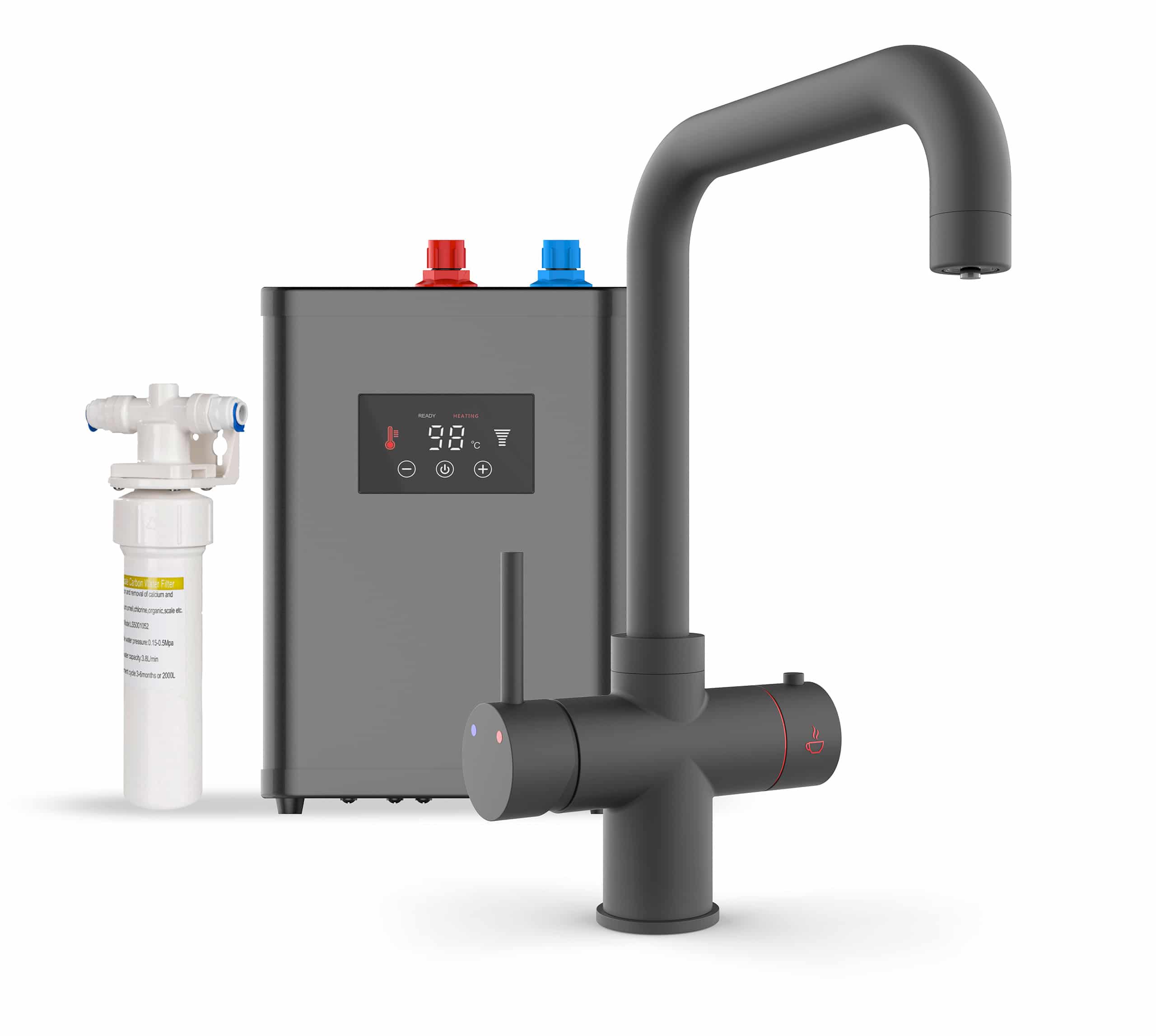
Smarter Choices, Quicker Brews: What To Do Next
- Measure first, decide second.
- Be honest about your needs.
- Prioritise hygiene and maintenance.
When you choose a hot water tap (and the tank that powers it), you’re not just ticking a box—you’re future-proofing every brew and reclaiming space and time. Still deciding? Check out our ultimate guide to instant boiling taps and find out more about the nation’s favourite kitchen upgrade.
For many people, a piping hot cup of tea or coffee is an essential part of their daily routine. But did you know that water at a full 100°C boil isn’t necessarily the best choice for brewing your favourite hot drinks? While it’s easy to assume that the hotter the water, the better the brew, the reality is more nuanced. In fact, having a boiling water tap set to 98°C could enhance your hot drinks while also offering energy-saving benefits.
The Perfect Temperature for Coffee and Tea
Water temperature plays a crucial role in extracting flavours from coffee and tea. If the water is too hot, it can burn the coffee grounds or scald delicate tea leaves, leading to a bitter or overly astringent taste. Conversely, if it’s too cool, you may end up with a weak and underwhelming drink. Understanding the role of temperature in brewing helps ensure every cup is as delicious as possible.
Coffee: Why 100°C is Too Hot
The Specialty Coffee Association (SCA) recommends a brewing temperature range of 92°C to 96°C for optimal coffee extraction. Water at a full rolling boil (100°C) can over-extract compounds from the coffee, leading to a bitter and unpleasant flavour. With a 98°C boiling water tap, you have greater control over temperature, ensuring that your coffee retains its rich, nuanced taste without being burnt or overly bitter.
Additionally, brewing methods such as pour-over, French press, and espresso all benefit from slightly different temperature ranges, meaning a tap that allows for fine-tuned control is a superior option. A high-quality boiling water tap enables you to experiment with different techniques, giving you the best possible coffee experience at home.
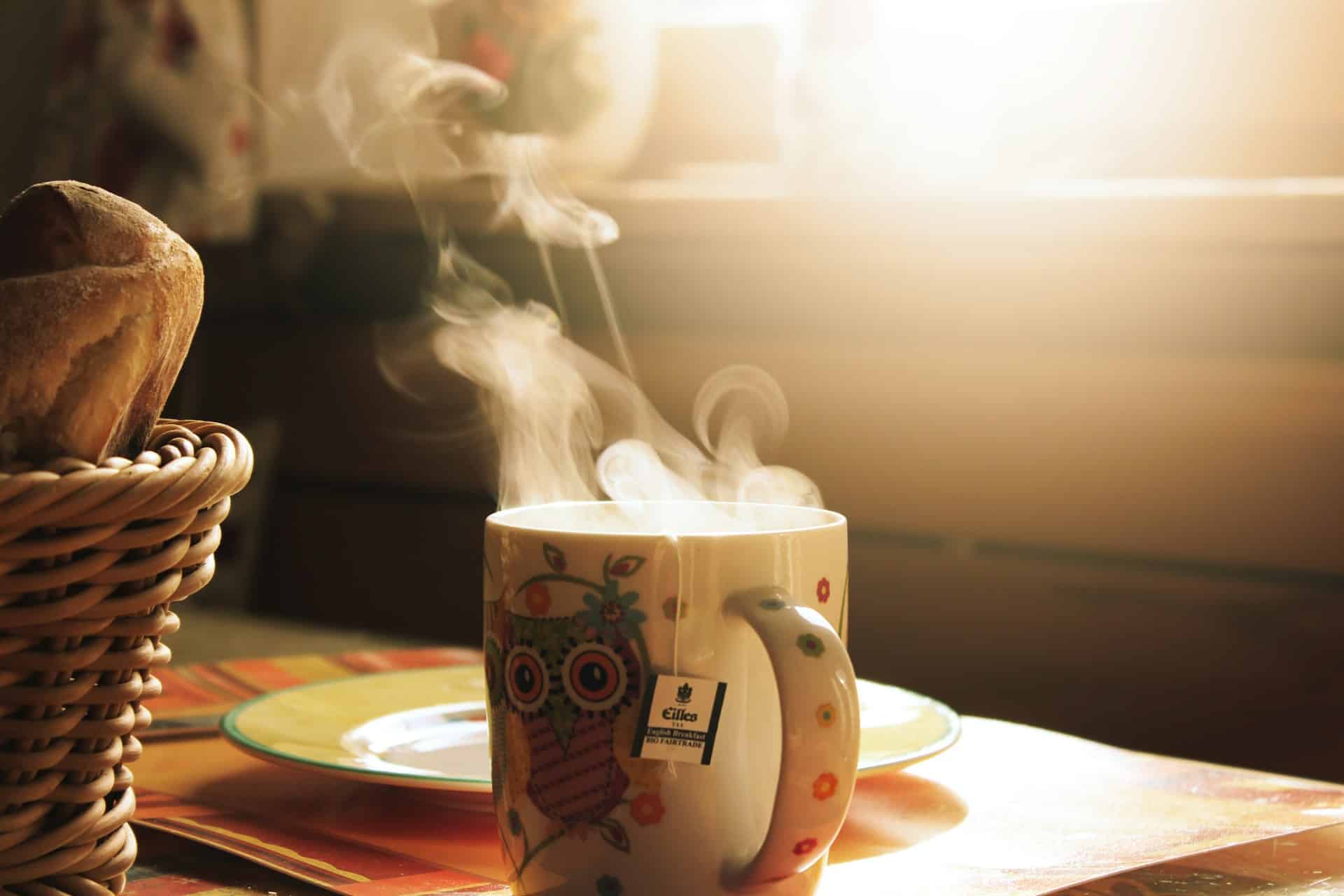
Tea: Different Brews, Different Temperatures
Unlike coffee, different types of tea require varying water temperatures to bring out their best qualities:
- Green tea: Typically best brewed at 70°C to 80°C to prevent a harsh, bitter flavour.
- White tea: Benefits from 80°C to 85°C, bringing out its subtle sweetness.
- Oolong tea: Usually brewed between 85°C and 90°C to balance flavour extraction.
- Black tea: Prefers 90°C to 98°C, ensuring full-bodied flavour without over-brewing.
- Herbal teas: Can handle 98°C as they require high temperatures to extract their full depth of flavour.
With a standard kettle, achieving the ideal temperature for each type of tea requires either guesswork or a separate thermometer. A temperature-adjustable boiling water tap removes this hassle, making it easy to achieve precision brewing for every variety.
Energy Efficiency: Why 98°C Saves More Than Just Time
Many boiling water taps on the market maintain water at a constant 100°C, which requires more energy than you might think. Keeping water at a full boil means the heating element is working harder, increasing electricity consumption. By setting your tap to 98°C instead of 100°C, you can reduce overall energy usage without sacrificing performance.
How a 98°C Tap Saves Energy
- Lower maintenance heating: Maintaining water at 100°C demands continuous heating. At 98°C, the energy required to sustain that temperature is slightly lower, leading to reduced electricity consumption over time.
- Less heat loss: Every degree above the necessary temperature increases heat dissipation into the surroundings, meaning more energy is wasted.
- More efficient daily use: For the vast majority of hot drinks and cooking needs, 98°C is entirely sufficient—avoiding unnecessary overheating cuts down your household’s energy footprint.
Considering the environmental impact of excessive energy consumption, even small temperature adjustments can make a meaningful difference over time. By reducing the temperature slightly, you contribute to a more sustainable lifestyle while also saving money on energy bills.
Convenience and Flexibility with Temperature-Controlled Taps
The best boiling water taps (like ours!) come with adjustable temperature settings. This means you can fine-tune the water temperature based on your needs, whether it’s making a delicate green tea, brewing the perfect coffee, or even preparing instant noodles or baby formula.
A boiling water tap also eliminates the need for a kettle, saving both time and counter space. With a near-instant supply of hot water, you won’t need to wait for a kettle to boil, making it a highly convenient option for busy households and workplaces alike. The added precision of an adjustable boiling water tap allows for greater versatility in the kitchen, whether for cooking, sterilising utensils, or making perfect hot drinks.
Beyond personal use, temperature-adjustable boiling water taps are an excellent investment for workplaces, coffee shops, and hospitality settings. The ability to control water temperature ensures consistent results, streamlining operations while delivering top-quality beverages to customers.
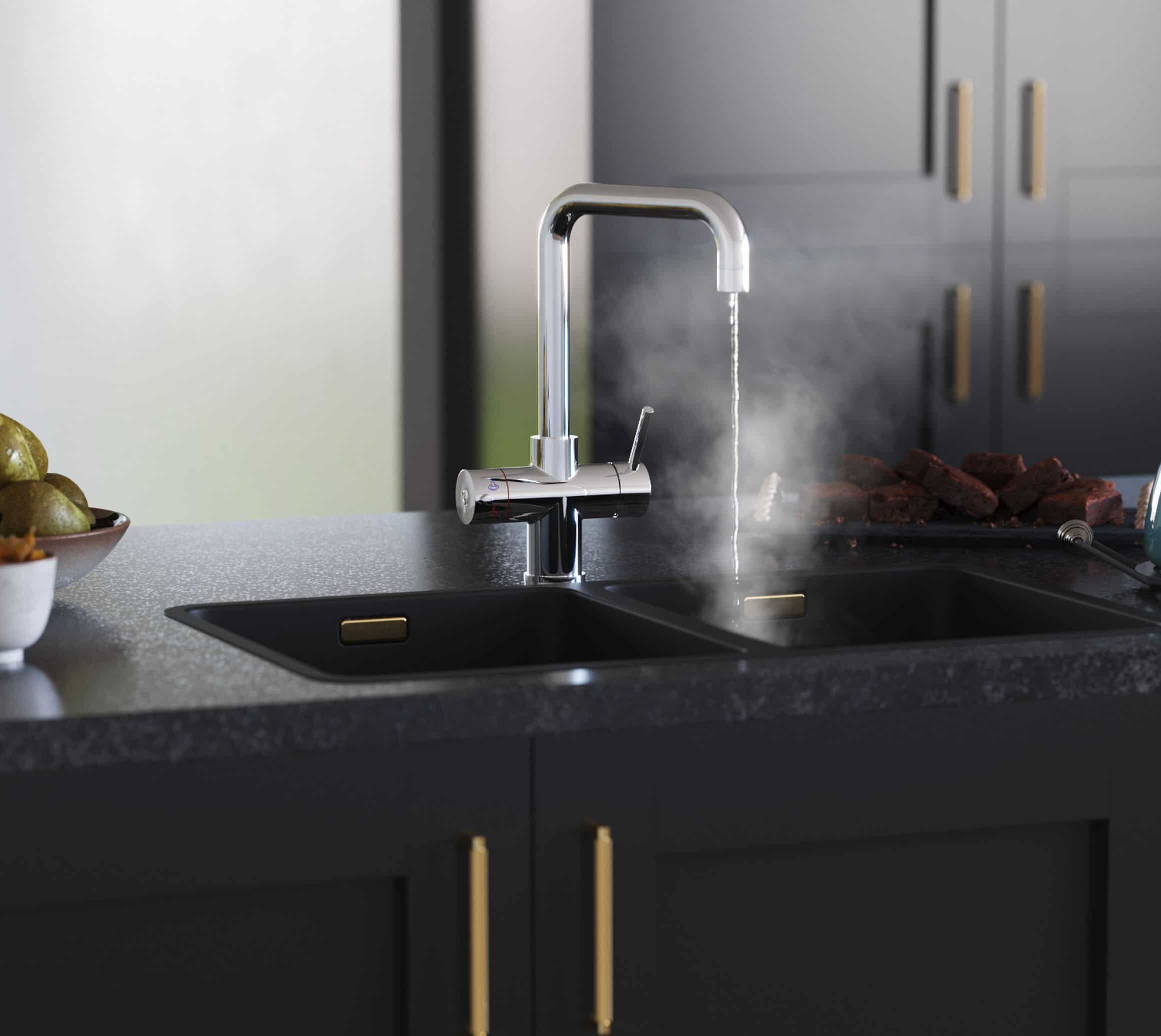
Final Thoughts: The Smart Choice for Hot Drinks
A 98°C boiling water tap is not just an excellent choice for coffee and tea lovers, it’s also a practical and energy-efficient upgrade for any kitchen. By ensuring your water is hot enough for brewing without reaching unnecessary temperatures, you can enhance flavour, reduce energy waste, and enjoy a more convenient hot drinks experience.
If you’re considering a boiling water tap, we offer a range of temperature-adjustable models to suit every need. Whether you’re a coffee connoisseur, a tea enthusiast, or simply someone who values efficiency, a 98°C tap could be the perfect addition to your kitchen.
- Avista - our most affordable 3-in-1 tap
- Athena - our premium 3-in-1 tap
- Astra - our 3-in-1 tap with a pull-out spout
- Quantum - our best-selling 4-in-1 tap
- Quantum Chilled - our highest-spec 4-in-1 tap featuring chilled water down to 4°C.
- Platinum - our 4-in-1 tap with a pull-spout
Alternatively, keep on reading about boiling water taps in our ultimate guide.
In today’s busy world, convenience is everything - and the Quantum Chilled 4-in-1 tap is here to revolutionise your kitchen. With 4 functions in 1, it offers the ultimate convenience, value and performance. Whether you’re a busy family or a foodie, the Quantum Chilled tap has got you covered – at a fraction of the price of the competition.
What is the Quantum Chilled 4-in-1 Tap?
The Quantum Chilled 4-in-1 tap has everything you need in one sleek unit:
- Hot and cold water – Uses your mains water supply for hot and cold water you use every day.
- 98°C filtered water – Perfect for making tea, coffee or any hot cooking.
- 4°C filtered water – For cold drinks, no more bottles or extra fridge space needed.
With all functions in one tap, you save space, reduce clutter and have an all-in-one solution for your kitchen. And the best bit? It’s significantly cheaper than many others, without compromising on quality or performance.
The Technology Behind Quantum Chilled
Quantum Chilled taps are designed to perform high in a small space. Here’s how it works:
- Mains Water Supply – Like any standard tap, Quantum Chilled has cold water from your mains supply, with the added convenience of hot water.
- 98°C Filtered Boiling Water – Filtered, near-boiling water at the touch of a button. Whether you’re making a cup of tea, blanching vegetables or cooking a hot meal, Quantum Chilled has you covered. Temperature adjustable between 75°C and 98°C for different tasks.
- 4°C Filtered Chilled Water – No more water coolers or constantly refilling bottles from your fridge. Quantum Chilled keeps your chilled water at 4°C, perfect for hot days.This is achieved with a compact, integrated boiler tank, chiller unit and filter system – all working together to deliver clean, safe and instant water.
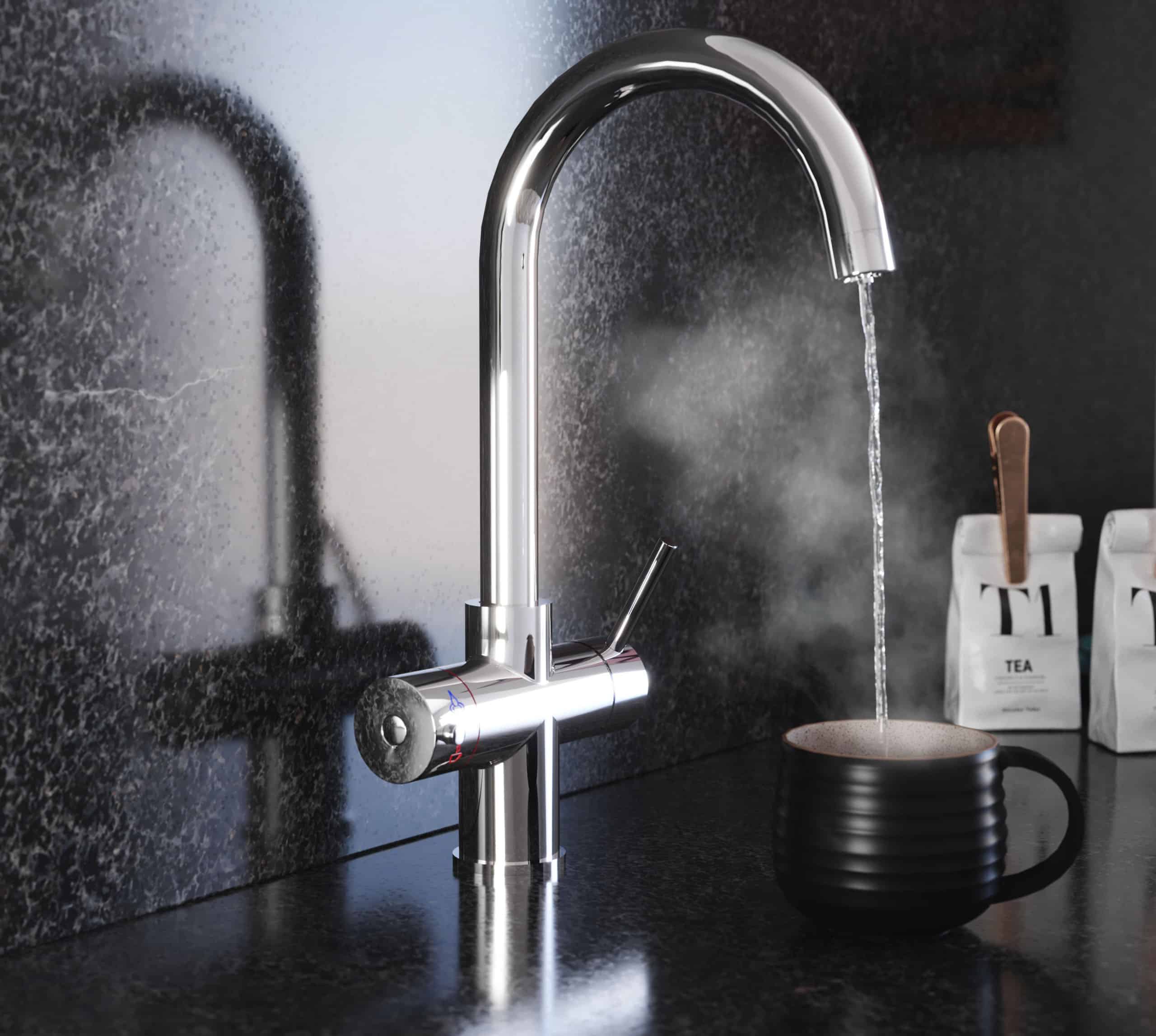
Design, Safety and Finishes
Quantum Chilled doesn’t just perform – it looks good doing it. The tap comes in two styles: D-Shape and Swan Neck. What’s more, each model is available in 6 finishes: Chrome, Brushed Nickel, Brushed Gold, Copper, Gunmetal Grey and Matt Black so you can choose a tap to match your kitchen’s decor.
Safety is also a top priority. With a child-safe locking mechanism and insulated spout you can rest assured your little ones are protected from scalding.
Practical Benefits and Value Proposition
What sets the Quantum Chilled 4-in-1 tap apart from others on the market is its value. Not only is it cheaper than similar products but it doesn’t compromise on quality. With solid brass construction, easy to use functions and energy efficient operation it’s a great investment for your home or small business.
Some of the benefits include:
- Cost-effective: At between £759-£799, Quantum Chilled is cheaper than many other taps with similar features.
- Space-saving: No more bulky kettles or worktop water filters. All 4 water types from one tap so you save counter space.
- Energy efficient: Insulated system means low running costs (approx 10-15p per day) so your energy bills are low.
Installation, Compatibility and Add-ons
Quantum Chilled taps are easy to install and all components – boiler tank, chiller unit and filter system – are included with the product. The tap is also compatible with high pressure water systems so suitable for most households. For installation we recommend consulting a qualified plumber to ensure everything is set up correctly - however, DIY enthusiasts can do this themself if they prefer and have some experience.
We offer free delivery within 48 hours and 0% interest payment plans (via Klarna) so you can unlock the unbeatable convenience of a Quantum in no time at all.
Shop Quantum Chilled today or get in touch with us if you have any lingering questions.
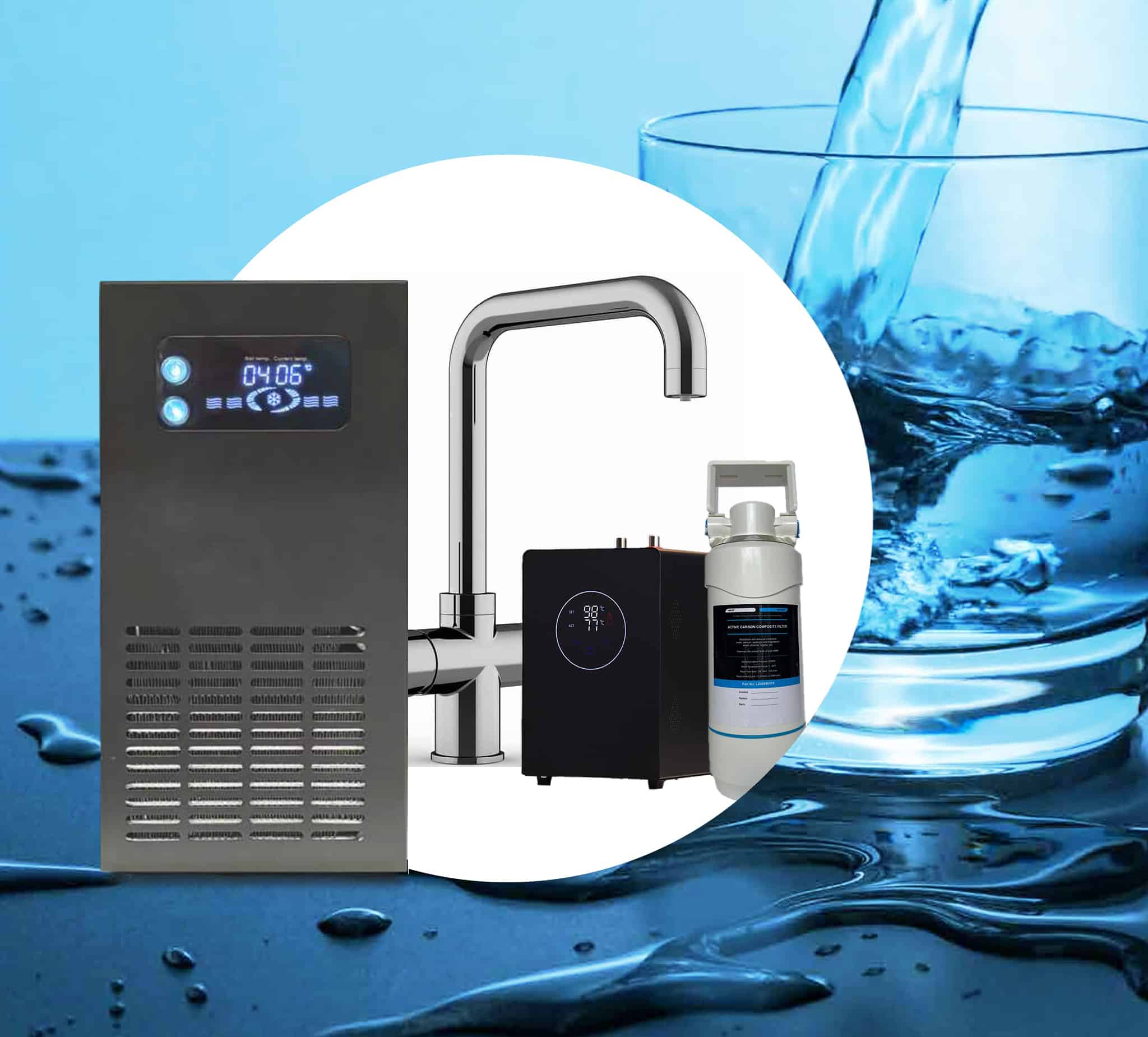
FAQs
1. What is a 4-in-1 tap and how is it different from a 3-in-1 tap?
A 4-in-1 tap has 4 water functions: standard hot and cold water, filtered boiling water at 98°C and filtered chilled water at 4°C. A 3-in-1 tap has 3 functions: standard hot and cold water and filtered boiling water. The additional chilled water function in the 4-in-1 tap means no more separate appliances like kettles or water coolers.
2. How does a boiling water tap work?
Boiling water taps work through a compact boiler tank installed under the sink. The tank heats the water to near-boiling temperature and maintains it at the exact level. When you turn on the tap, the heated water is delivered instantly, no more waiting for kettles. The Quantum Chilled tap also has a chiller unit to provide chilled water at 4°C.
3. Are boiling water taps safe to use?
Yes, boiling water taps are designed with safety in mind. Many models, including the Quantum Chilled, have child-safe locks to prevent accidental activation of boiling water. The insulated spout means the exterior stays cool to the touch so no scalding.
4. How much electricity do boiling water taps use?
Boiling water taps are energy efficient. The Quantum Chilled tap uses 10 watts of electricity to maintain the water temperature, much less than traditional kettles which use 2-3 kilowatts per use. That’s lower energy bills and a smaller carbon footprint.
5. What are the benefits of a 4-in-1 tap like Quantum Chilled?
A 4-in-1 tap offers a variety of benefits:
- Convenience: Hot, cold, boiling and chilled water instantly, streamlines kitchen tasks.
- Energy Efficiency: Lower energy consumption than traditional kettles.* Space Saving: No need for separate appliances, freeing up counter space.
- Safety: Child-safe locks and insulated spouts.
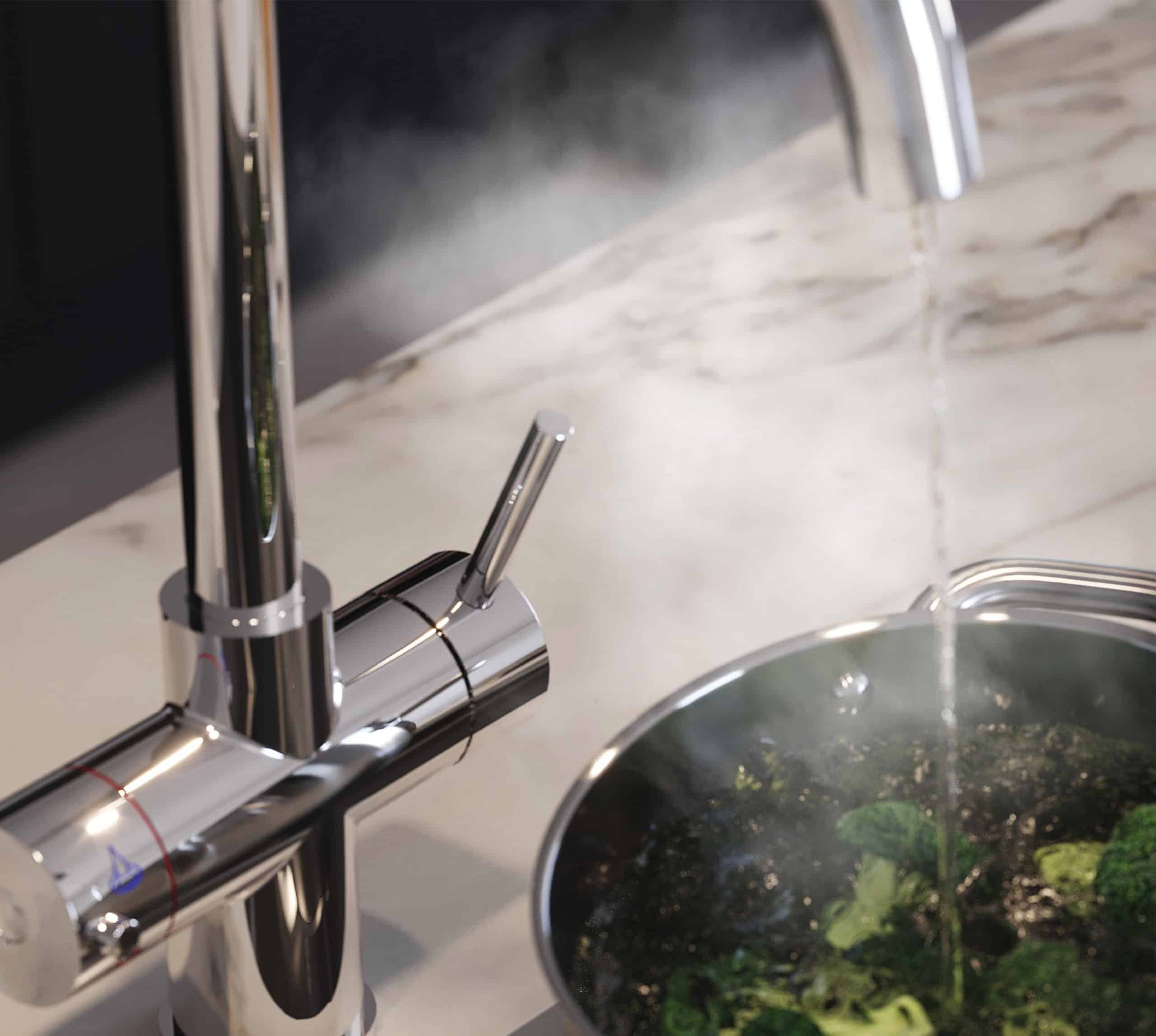
6. How is the Quantum Chilled tap installed?
The Quantum Chilled tap is installed by connecting the boiler tank and chiller unit to your water supply. We recommend a qualified plumber to install for safety and optimal performance. The system is designed to be easy to fit into most kitchen layouts.
7. What maintenance is required for Quantum Chilled?
Regular maintenance comes down to replacing the water filters to retain the water quality. The boiler tank and chiller unit will need descaling periodically depending on water hardness. Full maintenance guidelines are supplied with the product.
8. Is Quantum Chilled suitable for all kitchen styles?
Yes, the Quantum Chilled tap is available in multiple designs and finishes: Chrome, Brushed Nickel, Brushed Gold, Copper, Gunmetal Grey, Matt Black. So it fits most kitchen styles.
For more info, check out our articles:
- Boiling Water Taps Safety
- 3-in-1 vs 4-in-1 Taps: What's the Difference?
- How Do Boiling Water Taps Work?
- How Much Electricity Do Boiling Water Taps Use?
We are thrilled to share an exclusive interview with our Managing Director, Darren Cooper, published by online luxury magazine, Luxuria Lifestyle. This conversation offers a deep dive into Hot Water Taps and our products.
In this interview, Darren shares his personal and professional journey, detailing his vision for our company and the industry at large. Read on to uncover the full interview.
Interview
Can you tell us about the journey and inspiration behind founding Hot Water Taps?
With our main business focused on B2B channels, it was a logical step to create a brand that we could use to offer our products directly to the consumer. The domain was a key factor in this, which has from day one given a real positive identity.
What distinguishes Hot Water Taps from other brands in the market?
We are a small but growing family-owned business, and the ranges that we offer are, in our opinion, market-leading in the variety available at affordable prices. As a small business, every order matters to us and we try to ensure that each customer is well looked after.
How does your company ensure the quality and reliability of your products?
We work very closely with our two manufacturing partners, frequently spending time with the production and technical teams to ensure we are continuously improving quality. Any technical issues are dealt with speedily and problems are logged so that these improvements are made promptly.
Can you explain the technology behind your boiling water taps?
We use the unpressurised tank system as opposed to the pressurised system used by some of our competitors. This gives us a product that is straightforward to install and maintain. Our system comes in two parts: the boiler tank and the tap. The electric boiler tank is typically fitted below the kitchen sink and takes in water from the mains water supply that is filtered to remove minerals (and ensure the longevity of the system and its components). The tank then heats up the water, keeps it at this high temperature, and then releases it through the tap when the boiling water handle is turned.
The boiling tank operates up to 98°C, with the perfect temperature for tea and coffee being 90-98°C (according to the experts). What’s more, the temperature can be adjusted to suit a variety of needs at home.
What are some of the key challenges you’ve faced in the industry, and how did you overcome them?
We are still in a sector that is rapidly growing. A big challenge is to show consumers that you do not have to spend £1000+ for an instant hot water tap system. We are trying to demonstrate that it is more affordable than people may realise and that it is often more economical to run than a kettle. In our busy world, the convenience of being able to access boiling water at exactly the right temperature instantly is a big incentive for people.
How do you see the future of kitchen tap technology evolving, and where do Hot Water Taps fit in?
Styles are always changing and we like to think we are one step ahead in many areas. With advancements in technology, we will see more digitally controlled taps with touch functions rather than mechanical movements. We have a full digital range set to be launched later this year. Chilled filtered water and chilled sparkling water are also becoming popular. We have a chilled 4 in 1 available now and are running final tests on a chilled sparkling system which we think will be the best out there!
What sustainability practices does Hot Water Taps implement in its manufacturing process?
We are working closely with our two factories in this area, both have installed solar panel areas to push towards self-sufficiency in power use. All of our boxing is now from fully recycled sources. Our focus recently has been on 4-in-1 taps (which deliver filtered chilled water) to promote reusable bottles and encourage customers to move away from single-use plastic bottles (35 million are used every day in the UK).
How do you approach customer feedback and integrate it into product development?
Our customer service team records every query and question we get along with any faults. As a priority, we want to get the customer satisfied in the first instance. Faults are then reviewed monthly and any related to products are solved in partnership with the technical team to avoid long-term repeat problems. Any faulty product is always tested back here at our warehouse so we can sense-check the customer’s feedback and then accurately report our findings.
Can you share any upcoming product launches or innovations that Hot Water Taps is working on?
As previously stated, we have just launched the Quantum Chilled 4 in 1, and the Digital 4 in 1 with Pull Out Spray will launch in November at the same time as our 5 in 1 Sparkling/Chilled system. Two new tap designs are also planned for April 2025. Never a dull moment!
What advice would you give to aspiring entrepreneurs looking to enter the home appliance market?
Choose your market carefully and work with products that you technically understand; if you are confident in what you sell, everything becomes much easier. It is always important to give your customers a good reason to choose you over your competitors, so try to have a point of differentiation. Be patient as new business is not as easy as just turning a tap on.
You can read the interview at Luxuria Lifestyle, or shop our full range of boiling water taps here.
In today's health-conscious world, hydration is a pillar of a healthy lifestyle, closely tied to our overall well-being and physical performance. Yet, with a myriad of myths surrounding the topic, understanding the right amount of water to drink can seem like navigating through a foggy mist.
Today's guide aims to clear the air, offering valuable insights into the essence of hydration for health enthusiasts, the general public, and the fitness community alike.
Water: The Lifeblood of Your Well-Being?
Water, the most abundant compound in the human body, plays a pivotal role in our survival. From facilitating vital bodily functions to carrying nutrients, regulating body temperature, and acting as a lubricant in joints, water is undeniably the lifeblood of our physiological processes.
The human body is approximately 60% water, and a mere 2% decrease in body weight due to fluid depletion can start to affect physical performance and cognitive function. Fluid loss through processes like urine production, sweating, and normal bodily functions must be replaced to prevent dehydration and maintain optimal health.
So, What Should My Daily Water Intake Be?
The golden question persists: How much water should you be drinking? When considering daily water intake, it's important to provide recommendations for hydration needs based on individual factors such as body weight, activity level, and environment. While the widely touted “8x8 rule” — drink eight 8-ounce (or 221ml) glasses of water a day — offers a straightforward guideline, it oversimplifies the complexity of human hydration needs, which can vary significantly based on several factors.
For example, you may need to drink more fluids if you're:
- Pregnant or breastfeeding
- In a hot environment
- Physically active for long periods
- Ill or recovering from illness
- Sweating more, for example, through heavy work, exercise, or in hot weather
However, it's also crucial to be aware of the risks associated with drinking too much water, particularly the rare but serious condition known as hyponatremia, which occurs when sodium levels in the blood become dangerously low. Excessive water intake is just one of many factors that can cause hyponatremia, and it is usually not a risk for most healthy people. Read more about hyponatremia on the Mayo Clinic site.
For Adults
The UK’s Eatwell Guide suggests that adults should aim to consume 6 to 8 cups or glasses of fluid a day. This includes water, lower-fat milk, juice, and sugar-free drinks, though water is the healthiest choice as it contains no calories or sugar. Other beverages like tea, coffee, and certain foods also contribute significantly to overall fluid intake. However, as already mentioned, your daily activity, gender, age and even pregnancy can greatly influence how much H2O your body needs.
For Children
Children’s hydration needs can be met with water and milk. From the age of 1, children may consume whole, semi-skimmed, or plant-based milk as a main drink, steering clear of sugary sodas and juice drinks to lower the risk of becoming overweight or experiencing dental issues.
While fruit juice can contribute to hydration and count towards daily fruit and vegetable intake, it is important to limit its consumption due to its sugar content. Additionally, selecting beverages labelled as containing no added sugar or low-calorie options can help reduce overall sugar intake.
For Elderly
Elderly people (aged 65+) are more likely to lose their sense of thirst, making it crucial to increase their fluid intake as they may not feel thirsty despite being dehydrated. Ensuring access to water throughout the day, providing easy-to-open containers and mindful reminders can help promote hydration among older adults. Our boiling water taps are ideal for older people.
For Athletes
For athletes and heavy exercisers, daily water needs can go well beyond the standard 8 cups a day. Strenuous exercise leads to significant fluid loss through sweating. To maintain optimal hydration levels, athletes should aim to drink water before, during, and after workouts or strenuous activities. A general rule of thumb is:
- Before: Drink about 0.5 litres (approximately 500 ml) of water 2 hours before exercising.
- During: Drink about 150 ml (around 5 ounces) of water every 15 to 20 minutes during exercise.
- After: Drink about 1.5 litres (approximately 1,500 ml) of water for every 0.45 kg (1 pound) of weight lost during exercise.

Recognising Mild Dehydration
The peril of dehydration looms when the balance tips and our body loses more water than it receives. Even mild dehydration—around 1-2%—can negatively impact mood, energy levels, and cognitive functioning, highlighting the importance of hydration for maintaining optimal health and performance. Early signs such as dry mouth, fatigue, and dizziness signal the need to replenish lost fluids. Understanding these warnings is crucial to prevent severe dehydration, which can have detrimental consequences if not corrected.
In certain situations like heat or exercise, the need to drink more water becomes even more critical. Individual fluid requirements vary based on factors such as age, activity level, and environmental conditions, making it essential to understand personal hydration needs.
What Does Your Urine Say?
The colour of your urine can be a valuable indicator of your hydration status. Ideally, healthy urine ranges from pale straw to amber, reflecting a well-hydrated state. A transparent, light yellow hue typically suggests sufficient fluid intake, while darker shades may indicate dehydration. When your urine appears pale, it suggests that you are adequately hydrating, while darker colours suggest that your body may be conserving water due to insufficient intake.
To assess your hydration levels more accurately, consider the following guidelines:
- Clear to pale yellow: Well-hydrated.
- Light yellow: Generally hydrated, but you might consider drinking a bit more water.
- Dark yellow to amber: This is a clear sign of dehydration; increase fluid intake immediately.
- Brown or tea-coloured: This could indicate severe dehydration or a possible medical issue, and you should consult a healthcare professional.
By monitoring urine colour throughout the day, you can better understand your hydration levels and make informed decisions to maintain optimal health.
A Brief Look at Electrolytes
Electrolytes refer to minerals found in your blood and other body fluids that carry an electric charge. They are critical for a multitude of bodily functions, including maintaining fluid balance, supporting nerve function, and assisting in muscle contraction. The primary electrolytes include sodium, potassium, calcium, magnesium, and chloride.
Your body needs electrolytes in various situations, especially when it loses fluids. This can occur through exercise, in high temperatures, or when you're sick with symptoms like vomiting or diarrhoea. Electrolyte levels can also be affected by chronic health conditions, or through a diet lacking in essential nutrients.
To ensure a balanced electrolyte level, incorporating a diet rich in fruits, vegetables, nuts, and dairy products is key. For those who are highly active or experiencing rapid electrolyte loss, electrolyte-replenished drinks can be beneficial, though it's crucial to choose them in moderation. In essence, staying well-hydrated and maintaining a balanced diet are fundamental to keeping electrolyte levels in check.
Getting Creative to Increase Fluid Intake
Staying hydrated doesn’t have to be a mundane task. Here are some innovative ways to ensure you’re meeting your daily water goals:
- Infuse Your Water: Add slices of fruits like lemon, lime, cucumber, or even mint leaves to your water. This not only enhances the taste but also adds a refreshing twist, making it more enjoyable to drink throughout the day.
- Set a Reminder: In our busy lives, it’s easy to forget to hydrate. Setting reminders on your phone or computer can prompt you to take a water break, ensuring you stay on track with your hydration goals.
- Eat Your Water: Incorporate water-rich foods into your diet. Fruits and vegetables such as watermelon, cucumbers, oranges, and strawberries are not only nutritious but also hydrating, adding to your daily liquid intake.
- Carry a Reusable Water Bottle: Having a water bottle within arm’s reach serves as a visual reminder to drink more water. Choose a bottle that you love; this can motivate you to use it more.
- Track Your Intake: There are many apps available that can help you track how much water you drink each day. Seeing your progress can encourage you to reach your daily goals and make adjustments as needed.
- Alternate Beverages: While water is the best source of hydration, unsweetened herbal teas or sparkling water can also contribute to your fluid intake. Moderation with caffeinated and sugary drinks is crucial as they can lead to dehydration.

Make Hydration More Enjoyable Without Sugary Drinks
Investing in a tap with a chilled water function can make staying hydrated easy. Some of our instant boiling water taps also deliver filtered cold water, offering unbeatable convenience when it comes to making cold and hot drinks.
For tea and coffee lovers, the instant availability of boiling water eliminates the wait and allows you to prepare your favourite brew in no time at all. You'll be pleased to hear that even caffeinated drinks, like coffee and tea, contribute to overall fluid intake (according to the NHS).
The chilled water function is a boon for staying cool and hydrated, especially during warmer months, providing an immediate source of cold water for your water bottle, without the need to refrigerate or add ice.
Shop the range
We currently boast three product ranges that offer filtered cold/chilled water.
Platinum 4-in-1
The Platinum 4-in-1 is a premium tap at an affordable price point. Boasting hot, cold, boiling and filtered cold water, plus a pull-out spout, Platinum is one of our leading taps.
Shop the Platinum 4-in-1 Tap with a Pull-Out Spout
Quantum 4-in-1
Quantum is one of our best-selling taps, combining a high-quality brass construction and 4-way functionality. Quantum can deliver hot, cold, boiling and filtered cold water all from one tap.
Quantum Chilled
The Quantum Chilled is our latest luxury offering. Dispensing standard hot and cold water, instant 98°C water and ice-cold 4°C filtered water, Quantum Chilled is a tap designed to revolutionise your kitchen.
Can't Decide?
Read our comparison guide to look at the differences between our taps in more detail.
In Conclusion
Understanding and meeting your unique hydration needs is crucial for maintaining your health and wellbeing. By recognising the signs of dehydration and employing creative strategies to increase your fluid intake, you can ensure that you stay sufficiently hydrated throughout the day.
Remember, there's no one-size-fits-all answer to how much water you should drink. It's essential to listen to your body and adjust according to your activity level, climate, and health conditions. Whether it's through drinking water, consuming hydrating foods, or investing in tools that make hydration more enjoyable, the key is to find what works best for you and make it a part of your daily routine. Stay hydrated, stay healthy.
When it comes to ensuring your home is functioning properly, one factor that can go overlooked is water pressure. However, understanding and maintaining the optimal water pressure in your home is integral to various appliances and fixtures, such as hot water taps, showers, and water-based heating systems. This guide will walk you through the process of checking your water pressure.
Ideal Water Pressure Levels
An optimal flow rate is around 15 litres per minute, which is considered excellent for various household needs. A flow rate between 10 to 15 litres per minute is still acceptable and should provide sufficient pressure for most tasks. However, anything below 10 litres per minute is regarded as low and may result in weak flow from showers or taps.
Properly gauging your water pressure against these benchmarks is essential for diagnosing potential issues and determining if adjustments are needed.
There are two methods for checking water pressure. One is basic (the 1-litre jug test) and the other is a more accurate, though slightly longer test. We'll go through the basic test first, and then follow up with the more complicated one.
The 1-Litre Jug Test
This straightforward test requires a 1-litre measuring jug, which most kitchens will have. It's an easy way to get an immediate sense of your water pressure. Here's how to conduct the test:
- Place a 1-litre measuring jug under the tap or shower that you suspect may be experiencing low water pressure.
- Turn the tap or shower on to full capacity. Ensure that it is running at its maximum to get an accurate reading of its performance.
- Use a stopwatch to time how long it takes to fill the jug. Accuracy is key, so be sure to start timing as soon as the water begins to flow and stop the moment it reaches the 1-litre mark.
- Check your results against the standard. If it takes more than 6 seconds to fill the jug, your water pressure is considered low. This simple diagnostic tool can help you identify areas in your home that may need attention from a plumbing professional.
After doing this test, you'll have a preliminary gauge of your water pressure. If you need something more precise, you can use the pressure gauge test.
The Pressure Gauge Test
To get a precise assessment of your home's water pressure, follow these detailed steps using a standard water pressure gauge. This method provides a more accurate reading than the 1-litre jug test and can help you make informed decisions about any necessary adjustments.
Step 1: Gather the Necessary Tools
Before beginning, ensure you have the following items:
- A standard water pressure gauge that can be connected directly to a tap, ideally an outside bib tap, for the most accurate measurement.
- An adjustable spanner to secure the gauge if it doesn't fit snugly by hand.
- PTFE tape (also known as plumber's tape) creates a watertight seal between the gauge and the tap connection, preventing any leaks during testing.
- A notebook and pen for recording the pressure readings at different locations around your home to identify any variations.
Step 2: Locate the Main Water Supply and Turn It Off
Safety first! Locate the main water supply, which is typically near your water meter or where the main line enters your home. Turning it off will help prevent accidental leaks or bursts while checking the water pressure. This valve is often found near the water meter on the side of your property.
Step 3: Find a Suitable Water Source for the Gauge
Identify a convenient water source for attaching your pressure gauge, such as an outdoor faucet or the water heater's drain valve. Ensure the connection point is compatible with your pressure gauge.
Step 4: Connect the Pressure Gauge
Using your adjustable spanner, securely connect the pressure gauge to the chosen water source. Apply the thread seal tape to the gauge's threads for a watertight connection. Avoid overtightening to prevent damage.
Step 5: Turn On the Water Supply
Gradually turn on the water supply, allowing the pressure to build up without sudden surges. Careful control can prevent potential damage to both the gauge and your home's water pipes.
Step 6: Read and Interpret the Pressure Gauge
After the pressure stabilises (usually a few minutes), take a reading. An ideal water pressure level lies between 40-60 psi (pounds per square inch). Significant deviations from this range may indicate underlying issues that require attention.
Step 7: Adjust the Water Pressure, If Necessary
If the water pressure falls outside the recommended range, further investigation and adjustment may be needed. Low pressure can suggest problems such as a blockage or leaks in your water supply system. Conversely, high-pressure risks damage to appliances and plumbing infrastructure over time.
Common Problems
Low Water Pressure
- Check for Leaks: Inspect your home for any visible leaks — plumbing fixtures, toilets or taps.
- Clogged Pipes or Filters: Clean out any debris in your faucets, showerheads, or filter systems.
- Regulator Issues: Your water pressure regulator might need repair or replacement. Consider calling a professional.
High Water Pressure
- Pressure Regulator: If the water pressure is consistently too high, it might be an issue with the regulator. Consult a professional to service or replace it.
- Sudden Spikes in Pressure: Install water hammer arrestors to absorb the shock of water flow.
- Damage to Appliances or Pipes: If you're already seeing damage from high water pressure, you should consult with a professional to repair or replace these systems.
In conclusion, maintaining the correct water pressure in your home is crucial for the efficiency of your water system and the longevity of appliances like boiling water taps. Whether you're dealing with low water pressure that affects daily activities or high water pressure that risks damage to your home's infrastructure, understanding how to measure and adjust water pressure is an essential skill for any homeowner.
As the colder months cling on, the joy of instant hot drinks at your fingertips from a boiling water tap is unmatched. However, limescale build-up can make this experience less appealing – affecting not only the quality and taste of the water but also the longevity of your beloved new tap. In this guide, we'll walk you through the ins and outs of limescale management for your boiling water tap, helping you keep your home's heart and soul, the kitchen, as sparkling as possible.
Understanding Limescale and Its Impact
The Culprit Explained
Limescale, which is comprised mostly of calcium carbonate (CaCO3), is a byproduct of hard water i.e. water with a high mineral content. It can manifest as a white, crusty deposit and can be particularly stubborn to remove if not addressed promptly.
Why It Matters
In terms of your boiling water tap, limescale can:
- Decrease water flow by clogging tap aerators and filters
- Impair heating elements, leading to increased energy consumption and potentially shortening the lifespan of the appliance
- Affect the taste and quality of your hot drinks
General Maintenance
All of our boiling water taps come with a limescale filter, which should prevent the accumulation of limescale in your system and ensure it's running effectively. You should check the limescale filter regularly and replace it at least every six months. Our 4-in-1 taps also come with an additional WF200 filter, which filters bacteria, chlorine and other impurities for the perfect taste every time.
Spotting signs of limescale early can prevent it from accumulating and becoming a bigger problem. If you see any on your tap or its fixings, the first thing to do is to check the limescale filter is working properly. The screen on your boiler tank should indicate if it needs to be replaced. Secondly, you should follow the steps below to gently remove it. We recommend you avoid using bleach or harsh chemicals and stick to natural ingredients like vinegar or lemon juice.
DIY Limescale Removal Methods
Vinegar
- Mix equal parts white vinegar and water.
- Spray the solution onto the tap with a spray bottle and allow it to sit for half an hour or so.
- Rinse thoroughly, using a soft-bristled toothbrush or a non-abrasive sponge to tackle difficult spots.
Lemon Power
- Boil a mixture of water and lemon juice and allow it to cool.
- Spray the solution onto the tap with a spray bottle and allow it to sit for a few hours.
- Rinse thoroughly, using a soft-bristled toothbrush or a non-abrasive sponge to tackle difficult spots.
Baking Soda
- Create a paste with baking soda and water.
- Apply to deposits on the tap.
- After a few minutes, scrub with a soft brush.
We recommend you never use bleach or harsh chemicals on your tap. They will often ruin the finish and leave you with an unsightly result.
Conclusion
In conclusion, by adopting a proactive approach towards limescale management, you can ensure that your boiling water tap remains a convenient and efficient feature in your kitchen. Regular cleaning with gentle, natural methods can significantly prolong the life of your tap. Remember, prevention is always better than cure, so make use of the limescale filters provided and replace them as necessary to keep hard water deposits at bay.
Learn more about maintaining a boiling water tap here or head to our ultimate guide for more information about our taps.
The kitchen, AKA the heart of a home, is a place where the elderly can encounter challenges when it comes to using traditional kitchen appliances. Boiling water taps have emerged as an innovative, and seemingly convenient, solution to a mundane kitchen task. But are they really suitable for the elderly? In this post, we explore the benefits, safety features, and considerations of integrating boiling water taps into the homes of older adults.
Boiling Water Taps: Your Best Friend in the Kitchen
A Bridge to Effortless Kitchen Experience
The greatest benefit that boiling water taps bring is the ability to bypass the need to manually lift, fill, and wait for traditional kettles to reach a boil. They are a modern solution that not only minimises physical effort but also declutters the kitchen worktops to make meal preparation easier – a coveted ally for those with limited mobility.
Instant Warmth Without the Waiting
A comforting cup of tea can be priceless for seniors, and a boiling water tap can deliver one with minimal effort. With the turn of its handle, a stream of piping-hot water flows into the cup, eliminating waiting time and the need to hover by a kettle. This amenity is particularly beneficial for those with arthritic conditions, who can now prepare their drinks without the need to lift and pour from a heavy, hot vessel.
Safety First: Protecting the Ones We Love
Safety is paramount in any home, particularly so for the elderly who may be susceptible to falls or scalds. Boiling water taps are equipped with a suite of safety features designed to prevent accidents. Their intuitive design helps to avert potential burns by controlling temperature and the flow of water, often more effectively than traditional appliances.

Delving Into the Safety Features
Insulation for the Inevitable Touch
Older adults may no longer possess the reflexes they once did. Boiling tap spouts are engineered with insulation to stay cool to the touch. This feature is a game-changer, as it mitigates the risk of skin injuries from accidentally brushing a tap in a busy kitchen.
The Vigilant Shut-Off Features
Forgetfulness can come with age, but with boiling water taps, forgetfulness is not a concern. Taps are designed with automatic shut-off features, triggered by either prolonged inactivity or when the hand is removed. These safety mechanisms prevent a potentially hazardous situation from developing and offer peace of mind to both the user and their caretakers.
An Ingenious Response to Temperature Needs
In an era where technology continually adapts to human needs, an advanced boiling water tap with the capability to monitor and react to temperature changes is nothing short of revolutionary. This smart innovation ensures that water is not just hot, but at the perfect temperature for your needs, whether it be for making a delicate green tea or a robust cup of coffee.
By integrating sensors in the boiler tank that precisely measure water temperature and the wider system, this advanced boiler eradicates the risk of a malfunction, making it a sound option for the elderly.

Installation and Integration into the Elderly’s Home
A Guide to Navigating Technical Installations
Boiling water taps require professional installation to ensure they operate correctly and efficiently.
Step 1: Assess and Prepare the Space
Before you start, the space must be evaluated for the tap's placement. This necessitates considering electrical sockets in the below-sink cupboard, the reach from the mains water supply, and the functionality within the kitchen's layout.
Step 2: Professional Installation
The need for professional installation is non-negotiable, ensuring all wiring is safely managed and potential issues don't crop up down the line. Assistance from an expert is also a prime opportunity to customise the installation to cater to the specific needs and reach of the elderly user.
Step 3: Post-Installation Safety Check
Safety doesn’t end with the successful installation. A post-installation safety check is recommended to familiarise the user with the tap's operation and to confirm that all safety features are functioning properly.
Be sure to check out our installation guide for videos and more information.
Easy Maintenance to Keep Your Boiling Water Tap Sparkling
Keeping your boiling water tap in prime condition requires simple, regular care.
Daily, it's advised to wipe the tap dry using the soft side of a sponge, a microfibre cloth, tea towel, or kitchen roll. Weekly, a mild lather made from a drop of washing-up liquid and a soft sponge should be used from the base to the tip of the tap with warm water, avoiding scourers or abrasive sponges that could damage the finish. Rinse with warm water and dry thoroughly. A diluted lemon solution (one part lemon juice to four parts water) in a spray bottle can be used bi-weekly or monthly for extra shine. Just spray, leave to rest, then rinse and dry.

For the 2.4l boiling water tank, a monthly inspection for wear and leaks is recommended, with professional advice sought if any issues arise. Filters for the 3-in-1 and 4-in-1 taps should be replaced every six months to remove impurities and maintain warranty coverage. While servicing is rarely needed, any operational issues such as leaks or pressure problems should be inspected by a professional.
To combat limescale, especially in areas with hard water, regularly change your tap's filter and keep it dry. For stubborn limescale, a diluted lemon juice or vinegar solution can be applied, gently wiping away after a few minutes. Avoid hard scrubbing to protect the tap’s finish.
By following these easy steps, you can ensure your boiling water tap remains a safe, convenient feature in your kitchen, providing instant hot water without compromising on style or functionality.
You can read more about maintenance here.
In Conclusion
As we've explored, boiling water taps can be more than just a modern kitchen addition. For the elderly, they represent a safer way to engage in everyday culinary tasks, offering a level of convenience and control that aligns with their needs and lifestyle.
At Hot Water Taps, we advocate for an inclusive and proactive approach to kitchen design. Shop our full range of boiling water taps right here or speak to a professional for no-obligation advice.
Welcome to the world of Colourful Cookery, where we explore the transformative power of colour in the heart of the home - the kitchen. Colour has a profound psychological impact, influencing both mood and appetite, and with the right palette, your kitchen can be a vibrant, energising space.
In this guide, we'll delve into harmonious colour schemes, the role of kitchen cabinets as bold colour carriers, and the appeal of bright, colourful accessories. We'll also consider the use of wall coverings for a dramatic effect, the sophisticated touch of metallic finishes, and the power of a dominant colour to unify your kitchen. Step into a world where colour and cookery blend seamlessly to create a space that’s not just for cooking, but for living.

Why Colour Matters in Your Kitchen
Colour in the kitchen isn't just about aesthetics; it has a substantial impact on our psychological state. In the realm of colour psychology, it's known that certain colours can influence our mood, emotions, and even our appetite.
Warm hues such as reds, oranges and yellows can stimulate conversation and appetite, making them ideal for spaces where we gather and eat. Cool tones like blues and greens, on the other hand, are calming and soothing, creating a relaxed environment. Therefore, your choice of kitchen colour can set the tone, whether you’re aiming for a lively and inviting atmosphere or a serene and calming haven.
Choosing the Right Colour Palette
Choosing the right colour palette for your kitchen is crucial in creating a harmonious atmosphere that reflects your personal style and complements the rest of your home. To start, consider the basics of colour theory and the colour wheel.
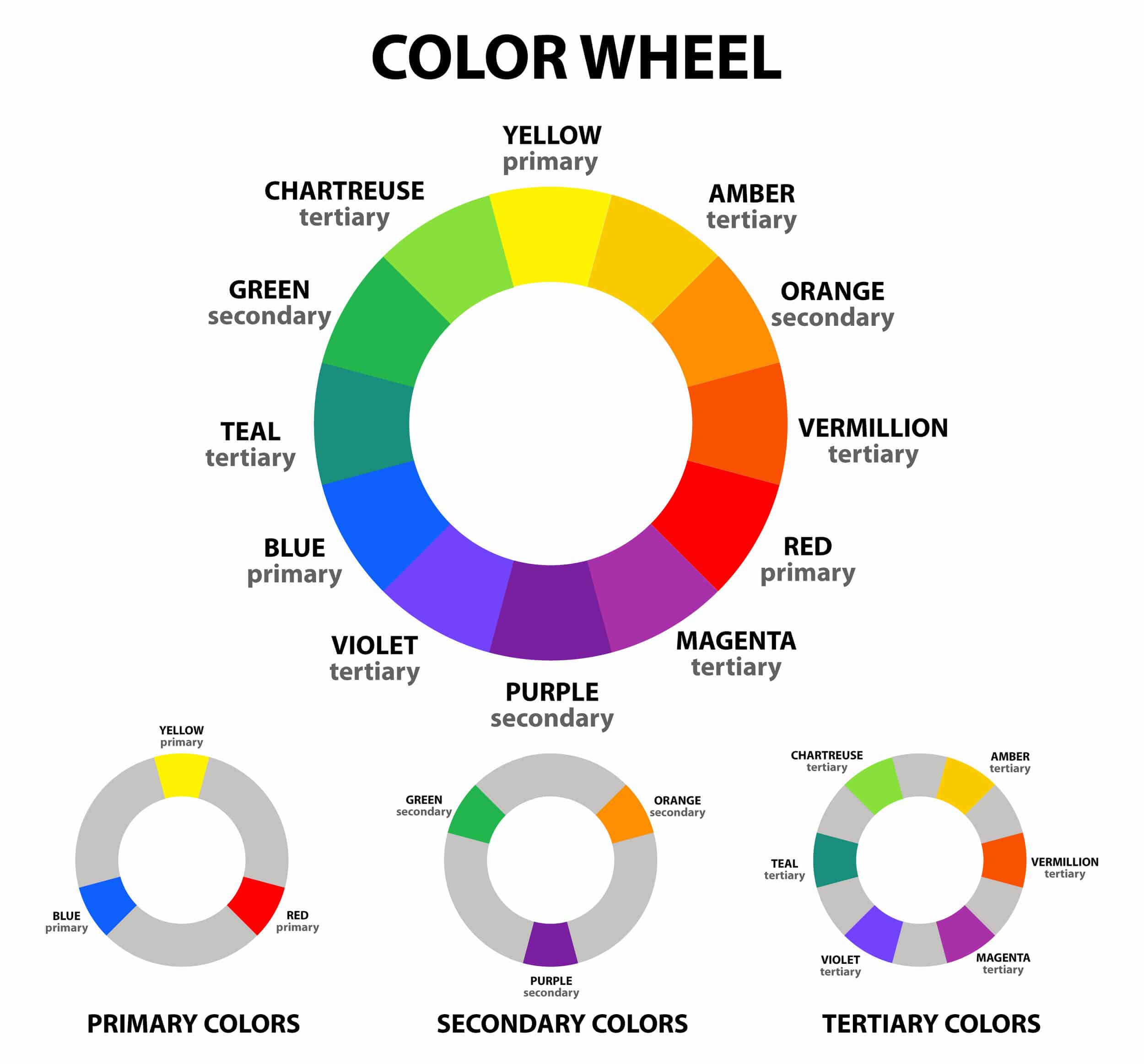
Credit: Gregory - stock.adobe.com
- Complementary Colours: These are colours that are opposite each other on the colour wheel, such as blue and orange, or red and green. Balance is key here; using equal amounts of both colours might create a visually jarring effect, so consider using one colour as the dominant shade and the other for accents.
- Analogous Colours: These are colours that sit next to each other on the colour wheel, such as red, orange and yellow, or blue, indigo and violet. They naturally work well together and can create a soothing effect.
- Monochromatic Colours: This involves using different shades, tints, and tones within the same colour family. This creates a sophisticated and minimalistic look.
When choosing your palette, also think about the size and natural light in your kitchen, your existing appliances and furniture, and the overall vibe you want to achieve. Remember that colour can drastically affect the perception of space - dark shades can make a room feel smaller and cosier, while light shades can make it feel larger and brighter. It's all about what works best for you and your space.
How to Choose Colours that Complement Each Other
Whether you're opting for a complementary, analogous, or monochromatic colour scheme, it's important to choose colours that enhance each other and create a balanced look. A common strategy is to select a primary colour, then choose secondary and accent colours that complement it. For instance, if your primary colour is a cool blue, you might opt for greens or purples as secondary colours (analogous scheme), or use a warm orange as an accent (complementary scheme).
Alternatively, in a monochromatic scheme, you could use lighter and darker shades of blue to add depth and variety. Remember, the key is to create a balance that suits your personal style and the ambiance you want to create in your kitchen. Each hue should serve a purpose, whether it's to stand out, blend in, or provide a striking contrast. Always test your chosen colours together, under different lighting conditions, before making any major decisions. This will ensure that your chosen palette works harmoniously in your kitchen under all conditions.
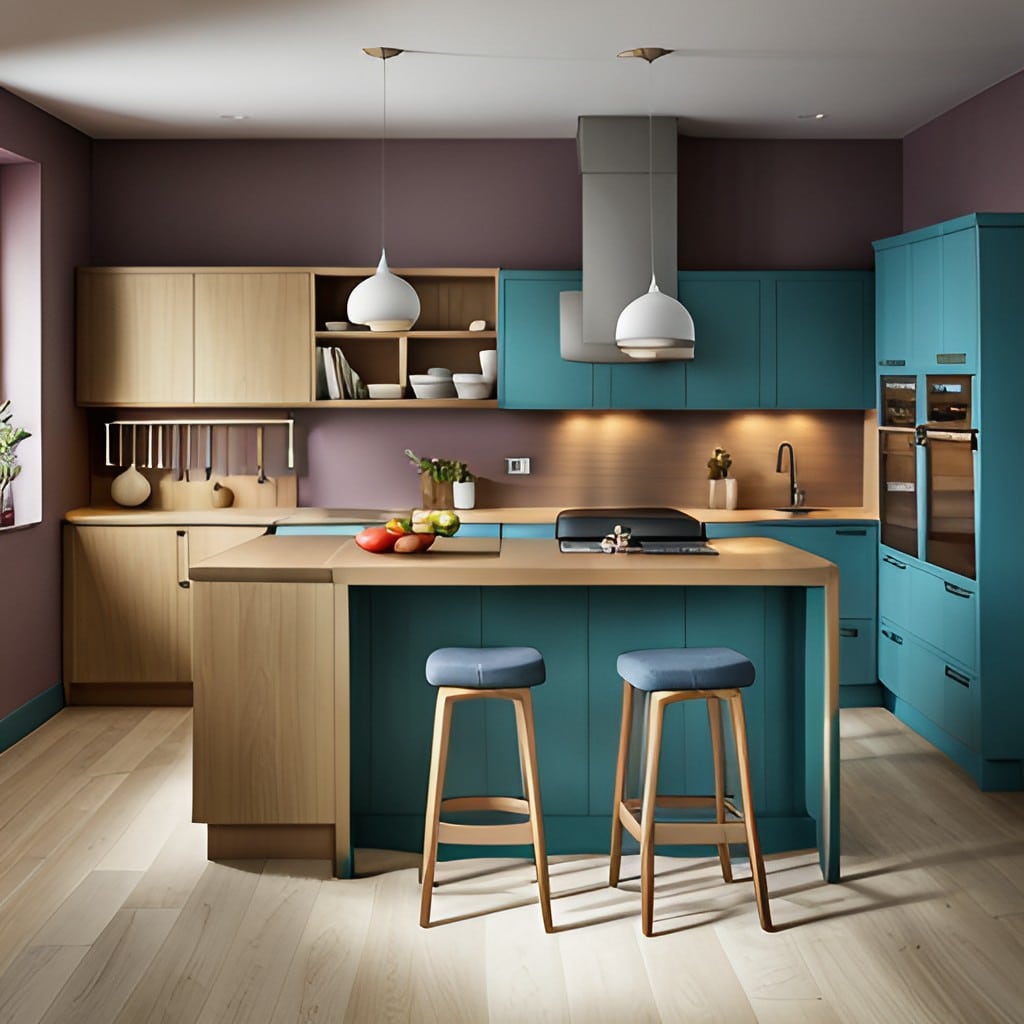
The Impact of Light on Colour Choices
Natural and artificial light can significantly affect the appearance of colours in your kitchen. Sunlight tends to make colours appear brighter and more vivid, while artificial light may alter the look of colours depending on the type of bulb used. For example, incandescent light can lend a warm, yellowish hue, while fluorescent light often casts a cool, bluish tone.
When choosing colours for your kitchen, consider the light sources in the room. Testing paint samples at various times of the day and under different lighting conditions can help you ensure that your chosen hues will look good under all types of light. Remember, colour isn't a standalone consideration; it interacts with other elements of your design, including light, to create the overall look and feel of your kitchen.
Brightening Through Kitchen Cabinets
Kitchen cabinets offer an exceptional opportunity to infuse your kitchen with colour. Whether you opt for a striking, bold hue or a serene, subtle shade, your cabinets can completely transform the look and feel of your kitchen.
View this post on Instagram
Selecting Colourful Kitchen Cabinets
Selecting the right colour for your kitchen cabinets can be a daunting task, especially with the endless palette of colours available. However, there are a few key considerations that can help guide your decision.
- Existing Colour Scheme: If you already have a colour scheme in your kitchen, your cabinets should ideally complement or accentuate this palette. This doesn't mean that they have to exactly match the colour of your walls or flooring, but they should harmonise with the overall look and feel of the space.
- Size of your Kitchen: The size of your kitchen can play a significant role in determining the colour of your cabinets. If you have a small kitchen, light-coloured cabinets can help create the illusion of more space. On the other hand, if you have a large kitchen, you have more leeway to experiment with bold, dark hues.
- Lighting: As mentioned before, light significantly affects how colours appear. Hence, consider the amount of natural and artificial light in your kitchen when choosing cabinet colours. Light cabinets might be a good choice for kitchens with little natural light, while dark cabinets can add depth and richness in well-lit spaces.
Remember, your kitchen cabinets are a prominent feature in your kitchen, so choose a colour that you love and will enjoy for years to come. It might be helpful to get paint samples and test them on a small section of your cabinets to see how they look under different lighting conditions and at different times of the day.
The Impact of Dual-Tone Colour Schemes
Dual-tone colour schemes, or two-tone kitchens, have gained popularity in recent years, offering a dynamic and visually appealing alternative to a single-colour scheme. This trend involves using two different colours on your kitchen cabinets - generally, one colour for the base cabinets and another for the wall cabinets.
This approach not only adds depth and contrast to your kitchen design but also allows more creativity and flexibility in your colour choices. For instance, you might opt for a bold, vibrant colour on your base cabinets and balance it with a lighter, more neutral shade on your wall cabinets. Alternatively, you could use two shades of the same colour to create a cohesive, yet layered look.
Choosing the right colours for a dual-tone scheme is essential, as the two hues need to work together harmoniously. This doesn't necessarily mean they need to be the same intensity or saturation; often, a bold and a muted colour can work together beautifully, as long as they complement each other.
Consider the overall colour palette of your kitchen, including your walls, flooring, and appliances, when selecting your dual-tone scheme - the aim is to create a balanced, unified look. Don't be afraid to experiment and push the boundaries of traditional kitchen design - a dual-tone colour scheme can be a fun and exciting way to breathe new life into your kitchen.
View this post on Instagram
Painting Techniques for Kitchen Cabinets
Choosing the right painting technique can greatly enhance the look of your kitchen cabinets. Here are a few methods you might consider:
- Spray Painting: For a smooth, even finish, spray painting is an excellent option. This technique requires a bit more preparation, as the surrounding areas need to be protected from overspray, but the final look is often worth the extra effort.
- Brush Painting: If you're after a hand-painted, artisan-style finish, using a brush might be the perfect choice. This method allows for more control and is better suited to detailed work.
- Roller Painting: For large, flat surfaces, a roller can provide a quick and efficient way to apply paint. The result may not be as smooth as a spray finish, but it's typically smoother than brush painting.
Whichever method you choose, remember to prep your cabinets properly before painting. This means cleaning them thoroughly, sanding if necessary, and applying a suitable primer. The perfect finish isn't just about the application technique; it's also about the preparation. And don't forget, always apply the paint in thin, even layers, allowing each layer to dry completely before applying the next. This will result in a durable, professional-looking finish that you'll be proud to show off.
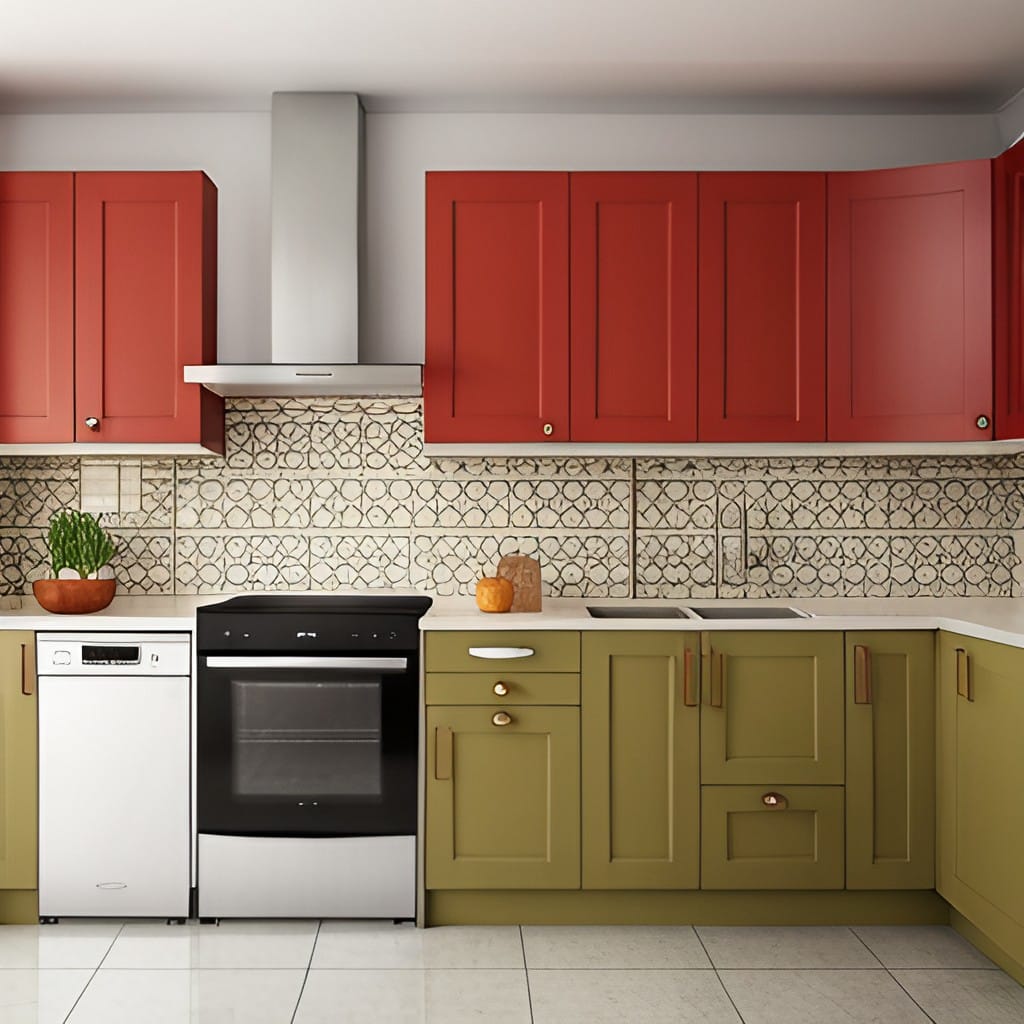
Adding Splashes of Colour
Adding splashes of colour can bring character and vibrancy to your kitchen. This can be achieved through various elements such as backsplashes, countertops, appliances, and even your crockery. Backsplashes, in particular, can act as stunning focal points, showcasing bold, colourful patterns or textures. Opting for colourful appliances or utensils are other great ways of injecting fun and personality into your kitchen.
Consider using floating shelves to display vibrant cookware, or even a wall mounted pot rack where you can hang colourful pots and pans. Alternatively, a bold, colourful countertop can serve as a stunning centrepiece, drawing the eye and setting the tone for the entire kitchen. Remember, these splashes of colour should complement the overall colour scheme of your kitchen to create a harmonious and visually appealing space.
Colourful Kitchen Accessories for a Brighter Space
Colourful kitchen accessories not only add a pop of colour but also bring a sense of fun and vibrancy to your kitchen. Consider adding brightly coloured toasters, kettles, or mixers, or go for vibrant dishcloths, tea towels, or oven mitts. In addition, decorative items such as wall art or colourful canisters can help enhance your kitchen's aesthetic, making it a more enjoyable space to cook and entertain.
Remember to choose accessories that tie in with your chosen colour scheme to ensure a cohesive look. Even small touches, like a colourful fruit bowl or a set of vivid mugs displayed on a shelf, can make a big difference. So don't hesitate to get creative and let your personality shine through in your kitchen decor.
Using Colourful Kitchen Flooring and Rugs
Kitchen flooring and rugs offer another opportunity to introduce colour into your space. When choosing a floor colour, consider the overall colour scheme of your kitchen, as well as practical aspects such as maintenance and durability. For instance, a dark wood or tile floor might be a striking contrast in a kitchen with light cabinets and walls, while a lighter floor can brighten up a kitchen with darker tones.
View this post on Instagram
Rugs, on the other hand, can be easily switched out depending on your mood or season, making them a versatile option for introducing patterns and colours. A vibrant rug can add a burst of colour to a neutral kitchen, instantly changing its look and feel. Whether it's a large area rug under the dining table or smaller rugs placed strategically around the cooking and washing areas, these can be visually appealing additions that also provide comfort underfoot. Just remember to select rugs that are easy to clean and slip-resistant for safety in the kitchen.
The Role of Wall Coverings in Brightening Your Kitchen
Wall coverings can significantly influence the feel and brightness of your kitchen. You can use paint, wallpaper, or even tiles to add colour and texture. Here are several ways to use wall coverings in your kitchen:
- Paint: A fresh coat of paint can dramatically change your kitchen's look without breaking the bank. From bold hues to softer shades, the choices are endless. Lighter colours will reflect more light, making your kitchen feel larger and brighter.
- Wallpaper: Wallpaper offers a myriad of designs, colours, and textures. You could choose a vibrant floral pattern to create a lively atmosphere, or a geometric design for a more modern kitchen. Wallpaper can serve as a striking feature wall, or you could use it throughout the kitchen for a cohesive feel.
- Tiles: Tiles are not only practical for areas prone to splashes, but they can also add a dash of colour and pattern. Whether you opt for bright, colourful tiles or prefer a subdued, neutral tone, they can contribute to the overall design and feel of your kitchen.
By carefully considering your choice of wall coverings, you can create a space that is full of character and warmth, and truly reflects your personal style.
View this post on Instagram
Incorporating Metallic Finishes
Incorporating metallic finishes into your kitchen design can add a touch of glamour and sophistication. Whether it's through cabinet hardware, light fixtures, or appliances, metallics can create an appealing contrast with your chosen colour palette. Here are some ways to introduce metallic elements:
- Cabinet Hardware: Opt for metallic handles or knobs to give your cabinets a stylish edge. From polished chrome to brushed brass, the options are numerous.
- Light Fixtures: Metallic light fixtures can serve as striking focal points. Choose copper pendant lights or a stainless steel chandelier to add a touch of elegance.
- Appliances and Fixtures: Matt black appliances or a gold tap can elevate the overall aesthetic of your kitchen instantly.
Remember, the key to using metallic finishes effectively is balance. Too much metal can make the space feel cold and uninviting, while the right amount can create a chic, modern look. So, choose your metallic elements carefully to complement the other colours in your kitchen and enhance the overall design.
View this post on Instagram
Choosing the Right Metallic Finish for Your Kitchen
Choosing the right metallic finish for your kitchen depends on your personal taste and the overall design scheme of your kitchen. Here are few things to consider:
- Style of your Kitchen: If your kitchen has a traditional design, warmer finishes like brass or copper could be more fitting. For contemporary kitchens, cooler metallics such as stainless steel or chrome might be a better choice.
- Colour Palette: The metallic finish should complement the colour scheme of your kitchen. For example, gold or copper finishes often pair well with darker hues, while silver or chrome can enhance a kitchen with lighter tones.
- Mix and Match: Don't be afraid to mix metallic finishes for a more eclectic look. Just ensure they share a similar finish (matte with matte, shiny with shiny) to keep a cohesive feel.
- Consistency: Keep consistency in mind. If you've chosen brass handles for your cabinets, consider a brass tap or light fixtures with a similar finish.
- Maintenance: Some finishes, like polished brass, require more maintenance as they can easily show fingerprints and water spots.
Remember, there's no hard and fast rule when choosing a metallic finish. It's all about finding a balance that works for your space and reflects your personal style. It might be worthwhile to test out a few different metallics to see which you prefer in your kitchen environment.
Mixing Metallic Finishes for a Unique Look
Mixing metallic finishes can bring depth and interest to your kitchen. This approach adds a unique touch to your decor and can personalise your space. Here are some tips to consider:
- Keep it Balanced: While mixing metals, the key is to maintain balance. Consider using one dominant metal and one or two accent metals to prevent your kitchen from looking cluttered.
- Coordinate Your Metals: Try to create a cohesive look by coordinating your metals with other elements in the room. For example, if you have stainless steel appliances, you might choose a silver-toned handle for your cabinets.
- Consider the Colour Scheme: The colours in your kitchen can guide your choice of metals. Warmer colours like reds, oranges, and browns pair well with copper and brass, while cooler colours like blues and greys compliment silver and chrome.
- Don’t Forget the Details: Even the smallest details count. Think about how your chosen metals will look with your sink tap, light fixtures, and cabinet handles.
Remember, the goal is to create a visually appealing and balanced look. Don’t be afraid to experiment with different metals to see what works best for your kitchen.

Maximising Colour to Unite the Kitchen
Using colour effectively can help to bring unity to your kitchen, creating a cohesive and harmonious design. There are several strategies to achieve this:
- Continuity: To create a sense of continuity, consider using the same colour or shades of the same colour throughout your kitchen. For example, if you've chosen blue for your cabinets, you might use lighter shades of blue for your tiles or wall colour. Alternatively, you could carry through the same colour in your accessories and textiles.
- Complementary Colours: Complementary colours, those diametrically opposite each other on the colour wheel, can create a vibrant, energetic feel. For instance, if you've chosen a blue theme for your kitchen, you could use pops of orange in your accessories for contrast.
- Colour Zoning: Colour zoning involves using different colours or shades to define different zones or areas within your kitchen. This can help to create a sense of order and can be particularly effective in open-plan kitchens.
- Highlight Architectural Details: Use colour to highlight architectural features or interesting aspects of your kitchen. For example, if you have an island or a breakfast bar, painting it in a contrasting colour can make it a focal point.
Remember, too many colours can make a space feel chaotic, so try to limit your palette to two or three main colours. And, of course, always consider the effect of lighting on your chosen colours, as it can significantly alter their appearance.
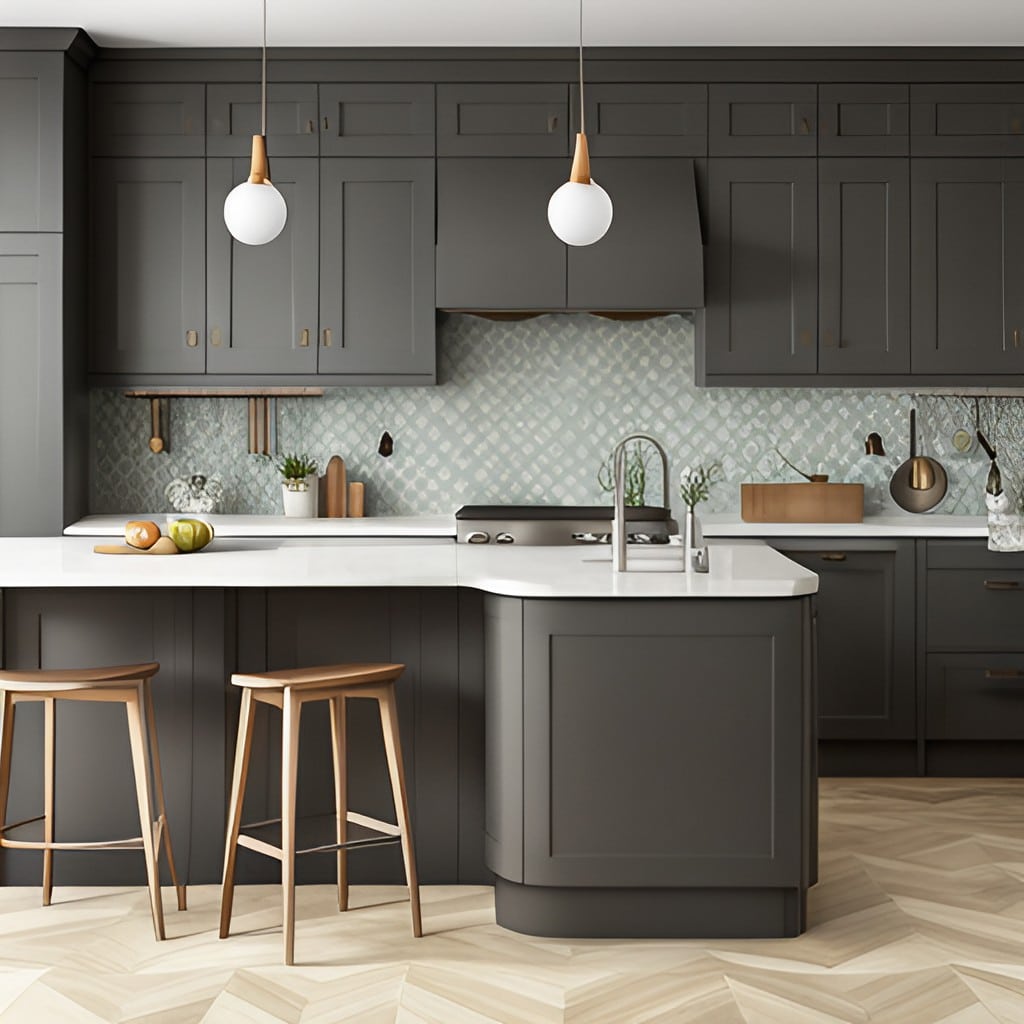
Conclusion: Creating a Bright, Colourful Kitchen
Creating a vibrant and welcoming kitchen is a journey of exploration, experimentation, and personalisation. By understanding the role of colour, choosing a harmonious palette, and experimenting with different elements - be it through cabinetry, wall coverings, or metallic accents – you can truly transform your kitchen.
Don't forget, small splashes of colour can have a big impact, and metallic finishes can add that extra touch of sophistication. Most importantly, remember to unite your kitchen with consistent use of colour, creating a space that not only looks stunning but feels intrinsically 'you'. Ultimately, your kitchen should be a reflection of your personal style and a space where you love to spend time. So, let your creativity flow and transform your kitchen into a place of colour, warmth, and joy.
When it comes to home upgrades, the kitchen often sparkles as the crown jewel. But is the gleam of a new kitchen really a sound investment? Can it significantly hike up the market value of your home? The answer is an emphatic 'yes'. A well-executed kitchen revamp not only gives your home a fresh, inviting appeal but can also boost your property’s worth by as much as 10%.
In this article, we'll delve deep into the cost vs. value equation of kitchen remodelling. We will discuss specific renovations, their impact on your home's value, and share practical tips for budget-friendly kitchen updates. Let's explore the finer details of why the kitchen truly is the heart of the home.
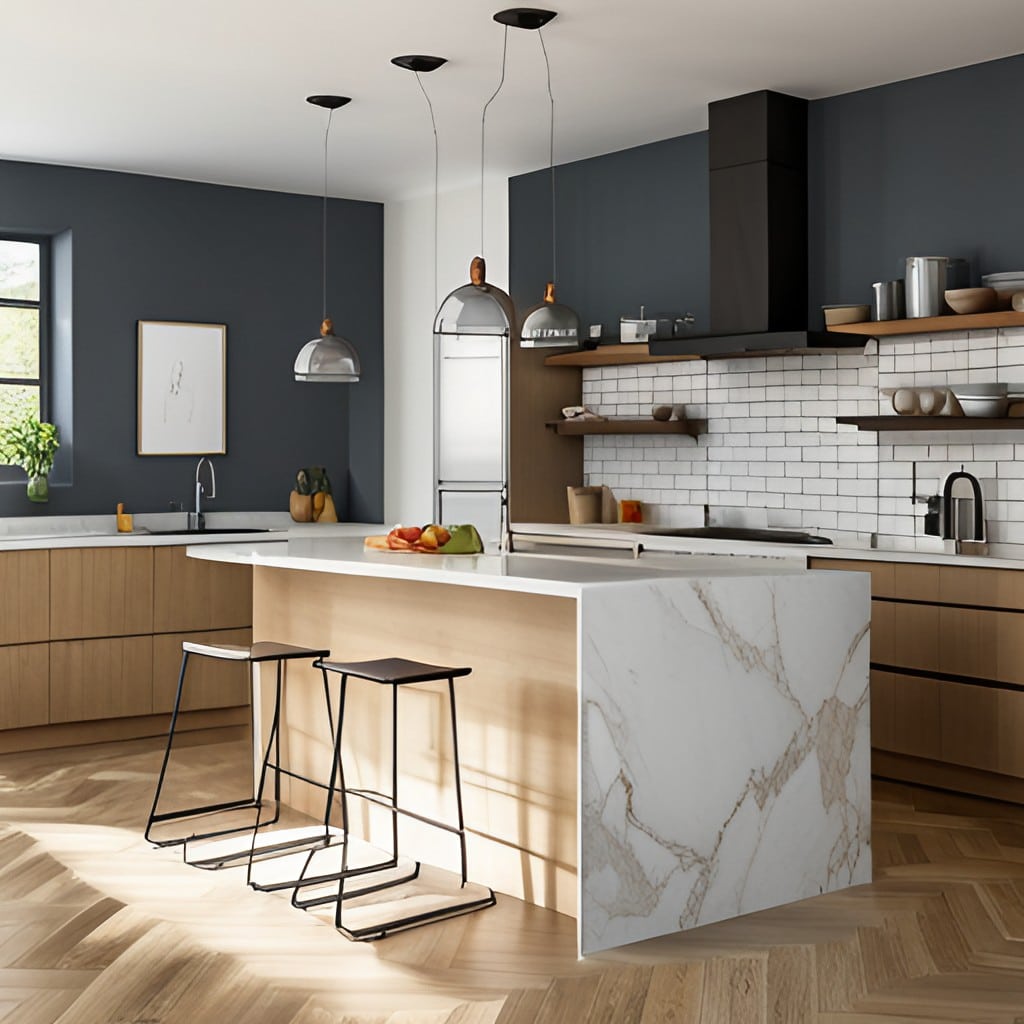
Unpacking the 10% Increase: A Real-World Perspective
Let's focus on that figure: a 10% increase in your property's worth. While this percentage might seem small, when translated into real-world figures, the results are quite substantial. For instance, if your home is currently valued at £200,000, a kitchen remodel could potentially add up to £20,000 to your property's worth. This significant boost in home value doesn't just increase your net worth; it also gives you a competitive edge if you decide to put your home on the market, attracting prospective buyers with a modern, fresh kitchen space.
It's important to remember, however, that this increase isn't guaranteed—it relies on choosing the right upgrades and executing them well. But, as we'll discuss, even small, cost-effective fixes can make a discernible impact. Let's delve into the specifics.
Understanding the Percentage of Remodel Cost Recovered
The percentage of remodel cost recovered is a crucial factor when considering a kitchen renovation. Essentially, it's the ratio of the increase in property value to the cost of the project. Let's imagine you spend £15,000 on a kitchen remodel which adds an estimated £20,000 to your home's value. This equates to a cost recovery of approximately 133%, making the upgrade a financially prudent decision.
It's worth noting, though, that this percentage can vary widely depending on the specifics of the renovation and the local property market. Regardless, even a recovery rate of less than 100% can still be worthwhile, when you consider the added enjoyment and functionality you get from a modern, well-designed kitchen.
The Value of Replacing Old Kitchen Features
The decision to replace old kitchen features is not just about updating the aesthetic appeal; it's also an investment that can yield significant returns. For example, replacing outdated countertops with modern materials like quartz or granite can dramatically enhance the kitchen's functionality and style. This upgrade alone can deliver a return on investment of up to 70%, making it a worthwhile consideration for homeowners looking to increase their property's market value.
Similarly, swapping out old hardware, such as cabinet handles and taps, with sleek, contemporary designs can have a surprisingly profound impact. This relatively simple and cost-effective fix not only refreshes the look of your kitchen but can also contribute to a more efficient and enjoyable cooking space.
It's vital, however, to keep in mind that the value of these upgrades is often influenced by prevailing trends and buyer preferences. Therefore, it's advisable to research current kitchen trends and consult with a real estate professional or interior designer before undertaking significant renovations.
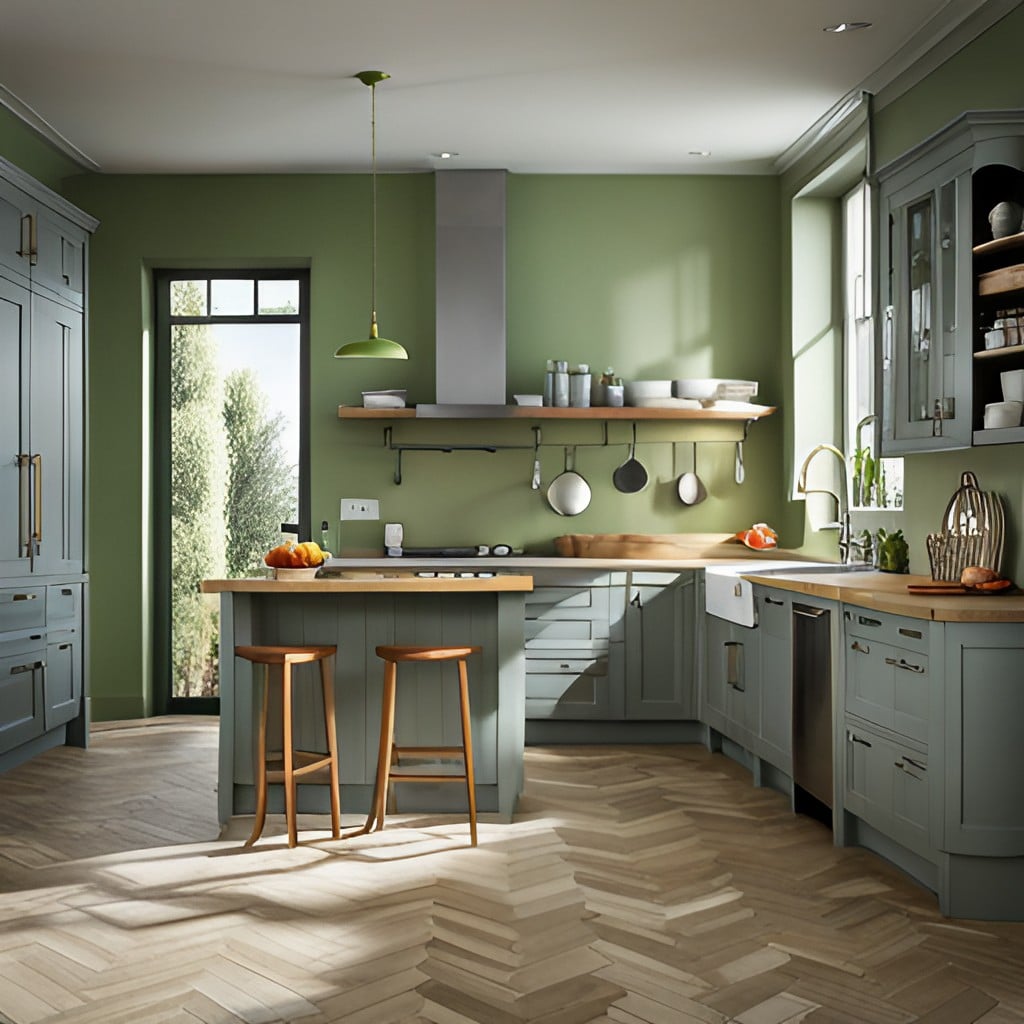
Costs vs. Value: Is Kitchen Remodelling Worth It?
Weighing the costs against the value is a crucial step in deciding whether a kitchen remodelling project is worth pursuing. This section will provide a comprehensive breakdown of the potential costs associated with various kitchen upgrades, juxtaposed against the value they can add to your home. The aim is to equip you with a clearer understanding of the potential return on investment and help guide your decision-making process for kitchen renovations. Let's explore further.
Exploring the Costs of a Kitchen Renovation
Kitchen renovation costs can vary significantly depending on the scale of the project and the types of materials chosen. At the lower end of the spectrum, minor improvements such as repainting cabinets, installing new lighting fixtures, or replacing old handles could cost around £1,000 to £3,000. A more significant remodel, involving new appliances, custom cabinets, and high-end countertops, could set you back anywhere from £25,000 to £50,000.
On the other hand, the value these renovations add to your home can also be substantial. Remember, a sleek and updated kitchen can boost your property's worth by up to 10%. For a house valued at £200,000, that's a potential increase of £20,000. Even minor renovations, if done strategically, can significantly enhance your home's appeal and market value. However, it's key to remember that the actual return you'll see depends on a variety of factors, including the current state of your local property market and the specific upgrades you choose to implement.
How to Save Money on Kitchen Upgrades
Saving money on kitchen upgrades requires strategic planning, wise decision-making, and a dash of creativity. Here are some tips to help you save on your kitchen remodel without compromising on style or functionality:
- Repaint Instead of Replace: If your cabinets are still in good condition, consider repainting them instead of investing in new ones. This can drastically change the look of your kitchen at a fraction of the cost.
- Opt for Open Shelving: Open shelving is not only trendy but is also less expensive than traditional cabinetry. It offers a great opportunity to display your beautiful dishes and adds a spacious feel to your kitchen.
- Keep the Original Layout: Changing the layout of your kitchen involves moving plumbing and electrical systems, which can quickly inflate renovation costs. If possible, try to work with your kitchen's existing layout.
- Choose Cost-Effective Countertops: Opt for affordable countertop materials like laminate or tile. These materials have come a long way in recent years and offer a wide range of colours and patterns.
- Do It Yourself: Where possible and practical, consider doing some work yourself, such as painting, to save on labour costs.
- Recycle and Reuse: Look for opportunities to reuse materials. For instance, you could sand and refinish old wooden doors or worktops.
- Bulk Buying: When buying materials like tiles or fixtures, consider buying in bulk as it often comes with discounts.
- Shop Around: Take time to compare prices from different suppliers or stores. You might find the same items at a lower price elsewhere.
- Plan and Stick to Your Budget: Planning your budget in advance and sticking to it can help prevent overspending.
Remember, the goal of a kitchen remodel isn't to drain your bank account. With a bit of creativity and careful planning, you can achieve a spectacular kitchen makeover without breaking the bank.
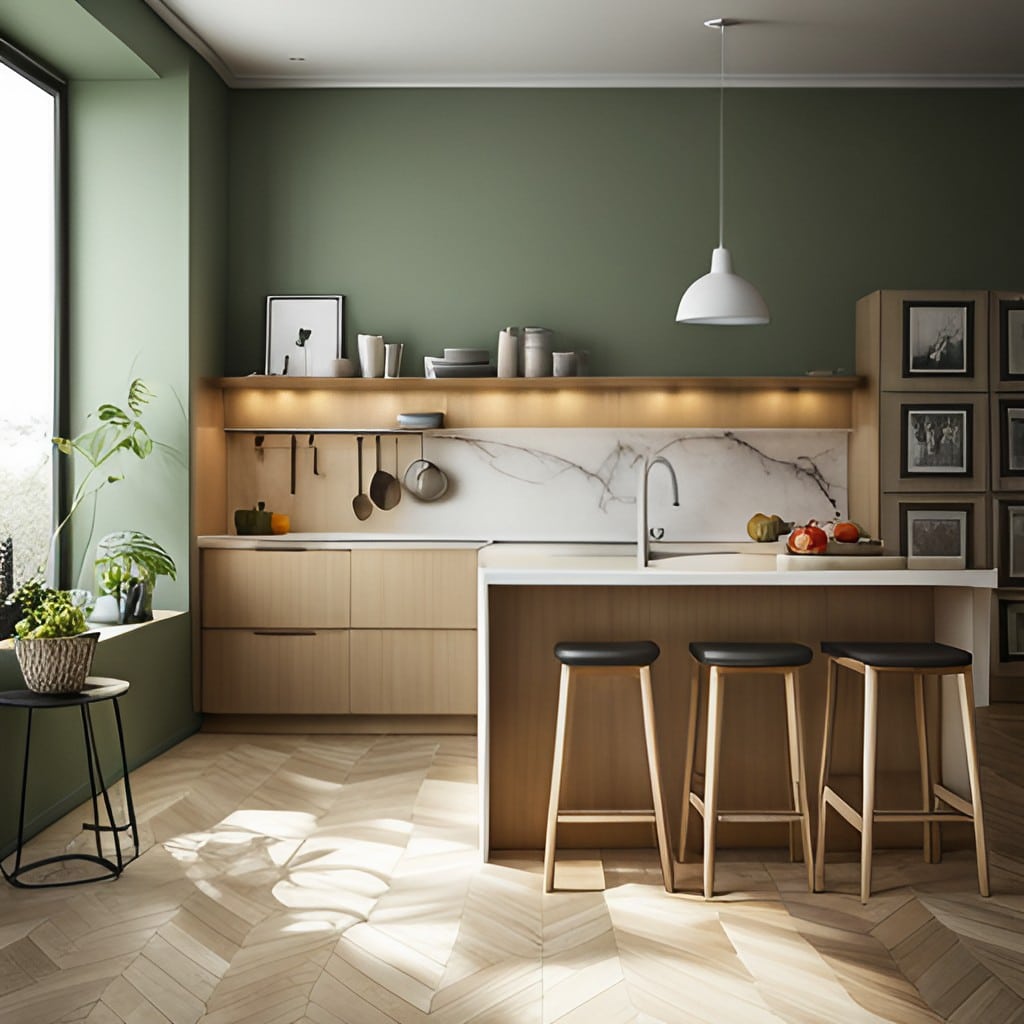
Tips to Increase Home Value Through Kitchen Remodel
As we've explored the cost aspect, let's now turn to understanding the potential value added to your home through a kitchen remodel. This section will delve into different tips and strategies that homeowners can implement to maximise the return on investment from their kitchen renovation.
We'll discuss the importance of choosing the right upgrades that are not only appealing but also boost the functionality and overall value of your home. From utilising energy-efficient appliances to adding a kitchen island, we'll explore a range of remodel options and their potential impact on your property's worth. Let's begin.
Choosing the Right Upgrades
The key to a successful kitchen remodel is to choose upgrades that not only enhance the aesthetic appeal of the space but also improve its functionality. If you're looking to make substantial changes, consider adding a kitchen island. It's a versatile addition that provides extra counter space, storage, and even seating.
On the subject of storage, think about optimising your cabinets with pull-out drawers and built-in dividers that can make cooking and cleaning more efficient. Energy-efficient appliances, while pricier upfront, can save you money in the long run and are a big draw for potential buyers who are conscious about their environmental footprint.
For those looking at more minor upgrades, think about investing in a quality tap. A tap might seem like a small detail, but a stylish, high-functioning one (like a boiling water tap!) can make a huge difference to the look and feel of your kitchen. Similarly, swapping outdated light fixtures for modern, energy-efficient lighting can completely transform your kitchen's ambience while reducing your energy costs.
Remember, the goal of a kitchen remodel is to create a space that you love and that potential buyers will love too. With careful planning and smart choices, you can add substantial value to your home and enjoy a beautiful, functional kitchen for years to come.
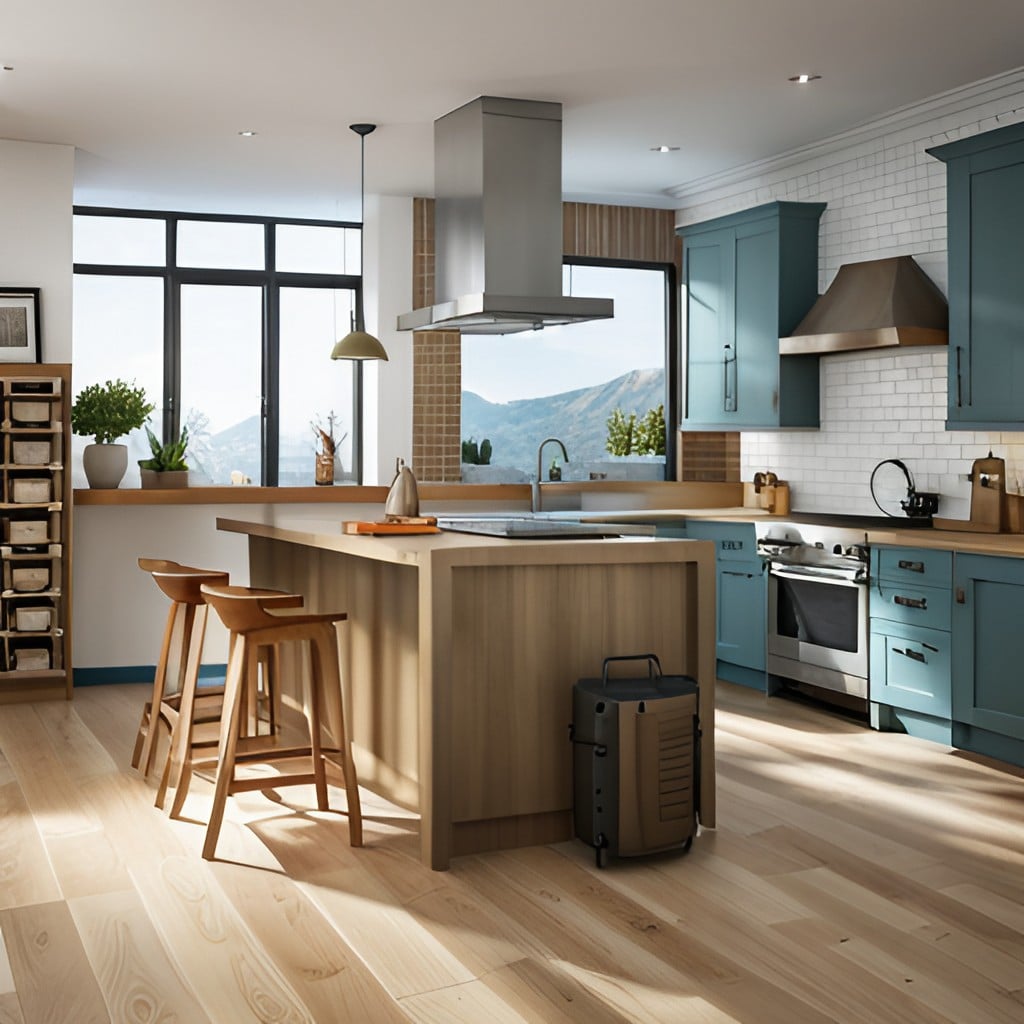
Simple Tricks to Update Your Kitchen on a Budget
Here are some budget-friendly ways to freshen up your kitchen without undertaking a full remodel:
- Fresh Coat of Paint: With the right colour, painting your kitchen can give it a new lease of life. It's an affordable way to transform the look of your space without much effort.
- Update Cabinet Handles: Replacing old, worn-out cabinet handles with modern ones can make a significant difference in your kitchen's appearance.
- Replace Old Fixtures: Consider replacing outdated light fixtures, faucets, or even the sink. These relatively small changes can have a big impact.
- Add a Backsplash: A new backsplash can add a pop of colour and interest to your kitchen. There are many inexpensive, easy-to-install options available.
- Add Some Green: Indoor plants can add a fresh, lively touch to your kitchen. They help improve air quality and can even provide fresh herbs for cooking.
- Decorative Storage: Use open shelves or baskets to store and display your dishes or kitchen tools. It's an affordable way to add character and functionality to your kitchen.
- New Window Treatments: Refreshing your window treatments with new blinds or curtains can dramatically change the look of your kitchen.
Remember, even small changes can make a big difference. With a little bit of creativity and effort, you can update your kitchen without breaking the bank.
In conclusion, investing in a kitchen remodel can significantly increase the value of your home and provide you with a more enjoyable and functional space. While the cost of a remodel can be a substantial investment upfront, the return on investment can be well worth it. Whether you choose to undertake a full renovation or simply update key elements, it's important to make choices that align with your budget, lifestyle, and the potential future sale of your home.
The Benefits of Choosing a Boiling Water Tap for Your Kitchen Remodel
An often overlooked yet impactful upgrade in a kitchen remodel is the inclusion of a boiling water tap. This modern appliance offers numerous benefits that could potentially enhance your kitchen experience whilst potentially boosting your home's value.
A boiling water tap, as the name suggests, delivers boiling water on demand, doing away with the need for a kettle. This offers immediate convenience and time-saving, especially when preparing hot beverages or cooking food that requires boiling water.
Additionally, these taps often come with an integrated water filtration system, providing you with not just boiling water, but also cleaner, purer drinking water. This can significantly improve the taste of your beverages and meals, as well as offer potential health benefits.
For more information on boiling water taps, visit Hot Water Taps to explore the full range and find the perfect fit for your new kitchen.
As we step into 2024, the heart of the home - the kitchen - is set to undergo transformative style shifts that will redefine your culinary space. At Hot Water Taps, we are passionate innovators continually keeping our fingers on the pulse of emerging trends in kitchen design. Our team of seasoned experts has been meticulously analysing the evolving landscape and is thrilled to share our projections with you.
So, whether you're contemplating a fresh kitchen makeover or simply love staying on top of design trends, consider this your exclusive guide, brimming with inspiration. From layered lighting to the renaissance of warm hues, the dramatic embrace of marble and stone to the reshaping of kitchen layouts, we promise to deliver an article that's not just informative, but practically indispensable for envisioning your kitchen in 2024. Let's dive into the future together, creating spaces that are not only stunning but also eco-friendly and functional.
The Dawn of Layered, Understated Lighting
In 2024, lighting takes the centre stage in kitchen design, but with a nuanced, layered approach that breaks away from the traditional. Lighting is no longer just about illuminating a space; it's about crafting an atmosphere, influencing mood, and enhancing functionality. To ensure every slice, dice, and simmer is carried out with precision, kitchens are embracing a tripartite lighting technique—ambient, task, and accent.
Ambient lighting sets the overall tone, task lighting increases efficiency, and accent lighting adds depth and drama, highlighting architectural features or prized collections. This layered lighting trend doesn't just add visual interest and depth to your kitchen; it also increases the kitchen's functionality and energy efficiency. We are also witnessing a turn towards understated lighting fixtures that blend seamlessly with the kitchen aesthetic, providing illumination without stealing the spotlight. So, as you reimagine your kitchen, consider how a touch of light can transform your culinary experience.
View this post on Instagram
The Rising Popularity of Under-Cabinet Lights
Adding to the layered lighting trend, under-cabinet lights are making a grand entry into the realm of kitchen design in 2024. These nifty installations work wonders in enhancing the functionality of your workspace while also contributing significantly to the ambient mood of your kitchen. Utilising this additional layer of light can dramatically improve the visibility of your countertops, making food preparation even more effortless. Not only do these fixtures serve a practical purpose, but they also come in an array of beautiful, sleek designs that complement your kitchen's aesthetic.
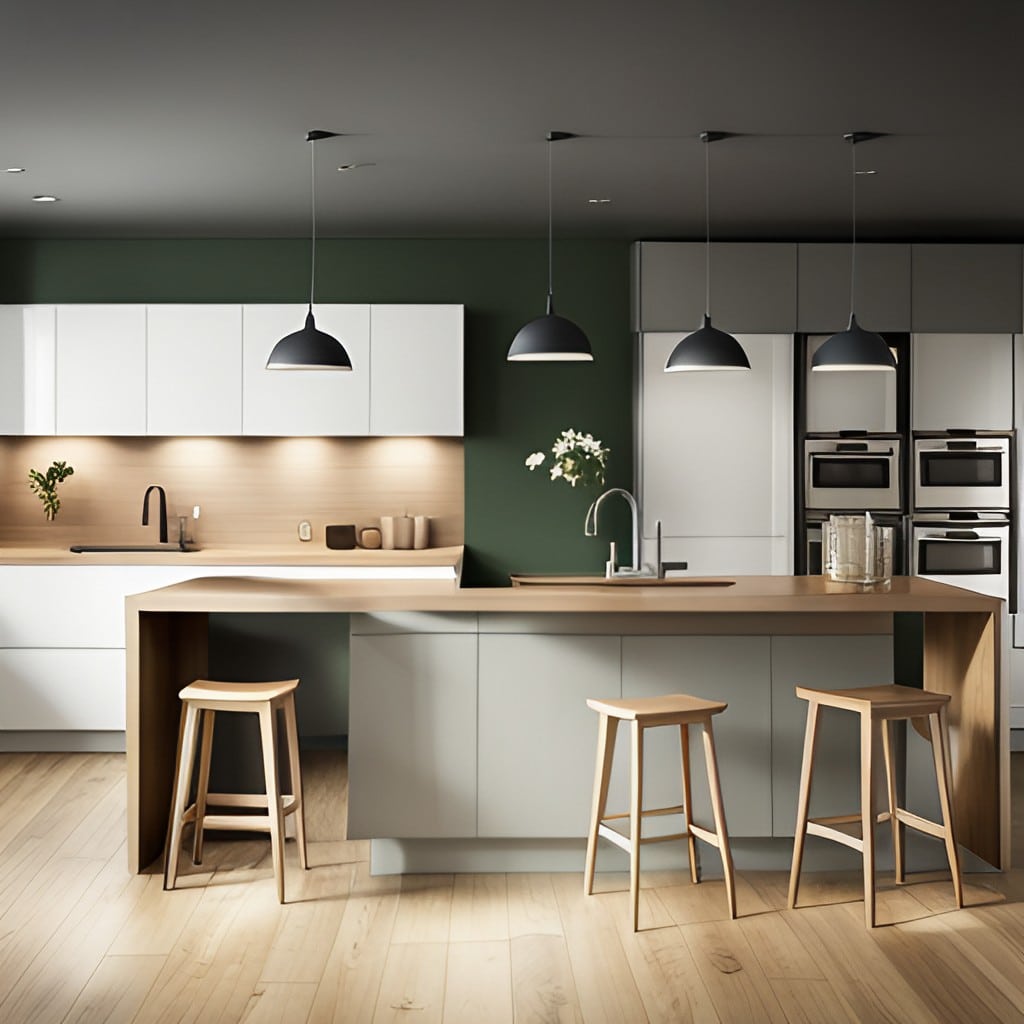
The Return of Pendant Lighting
Making a triumphant return, pendant lighting in 2024 is about subtlety and complementing the overall kitchen aesthetic, rather than taking centre stage. Pendant lights, with their diverse styles and designs, can effortlessly blend with your kitchen's vibe, whether you're aiming for a minimalistic, industrial, or warm rustic look. They offer an elegant way to punctuate your kitchen space, acting like jewellery that adds the final touch to an outfit.
Upgraded with modern, energy-efficient technology, these lights are more than just a design element; they bring a layer of focused light to your kitchen islands or countertops, enhancing both the style and functionality of your cooking space. Pendant lights are a testament to how a quiet and understated design element can beautifully unify and elevate your kitchen's overall look in 2024.
Rich, Warm Colours Making a Comeback
As we journey further into 2024, we're thrilled to announce the resurgence of rich, warm colours in kitchen design. This shift signifies a retreat from the cool, neutral tones that have dominated the scene for years. As the heart of your home, your kitchen deserves the warmth and inviting nature of these hues, creating a space that not only facilitates culinary creativity but also fosters conversation, connection, and togetherness.
The revival of warm hues is more than just a trend; it's a statement. It's about bringing the organic beauty of nature inside, creating a sense of comfort and serenity. From deep terracotta tones to subtle shades of ochre, the warm colour palette of 2024 is all about welcoming warmth, depth, and character into your kitchen. Let's delve in and explore how warm colours can transform your kitchen into a charming, inviting space.
The Allure of Creamy Taupes and Off-Whites
Breaking away from the starkness of pure white kitchens, the allure of creamy taupes and off-whites is capturing the imagination in 2024. These understated, timeless shades bring a sense of cosiness and tranquillity to your kitchen, creating a comforting atmosphere. Creamy taupes merge the warmth of browns with the coolness of greys, providing a balanced, neutral canvas that allows your kitchen's architectural features and design elements to shine.
Meanwhile, off-whites whisper elegance and sophistication, instilling your kitchen with a serene, airy vibe that enhances both its aesthetic and your cooking experience. This trend encourages simplicity and minimalism, promoting a soothing, harmonious ambience that transforms your kitchen into a haven of calm amidst the bustling rhythm of daily life. Embracing these warm neutrals is a testament to your refined taste and understanding of timeless elegance in design.
The Unexpected Charm of Orange and Red Undertones
Daring and dramatic, the return of orange and red undertones in kitchen design is one of the most anticipated trends of 2024. No longer confined to mere accents, these bold hues are making a statement, infusing kitchens with an infectious energy and warmth. Shades like burnt orange and brick red capture the comforting hues of autumn, turning your kitchen into a year-round cosy retreat. Despite their boldness, these colours are surprisingly versatile, pairing beautifully with warm neutrals, natural wood finishes, and metallic accents.
The key to harnessing the charm of these vibrant tones lies in balance. Use them sparingly to create focal points, or go bold and bathe your entire kitchen in a warm orange or red hue for a truly captivating look. Remember, it's your kitchen; you have the freedom to experiment and create a space that not only meets your functional needs but also resonates with your personal style and aesthetic preferences.
High Drama with Marble and Stone
In the realm of kitchen design, 2024 is set to be a year of high drama and stunning aesthetics, with the use of natural materials such as marble and stone taking the spotlight. These elements, known for their durability, elegance, and timeless appeal, are set to become a focal point in the kitchen, heralding a trend towards a grandeur and sophistication that is both practical and visually enticing. Let's delve into how the impressive richness of marble and the rugged charm of stone can transform your kitchen into a piece of art.
View this post on Instagram
Marble Veined Backsplash Slabs – A New Favourite
Marble veined backsplash slabs are quickly becoming the must-have feature of 2024's kitchen design. These stunning pieces instantly elevate the aesthetics of your kitchen by lending an air of elegance and luxury. The unique vein patterns of marble, each piece telling its own natural story, create a visual interest that is simply unmatched in its captivating beauty. Not only are they eye-catching, but these slabs also offer excellent durability and heat resistance, making them a perfect companion for your cooking adventures. So why wait? Give your kitchen a dramatic transformation with the timeless beauty of marble veined backsplash slabs.
The Resurgence of Stone in Kitchen Decor
In 2024, we are witnessing the resurgence of stone in kitchen decor, reinstating its timeless appeal in the heart of our homes. Stone, with its raw, earthy beauty and unparalleled durability, is being embraced in numerous forms, from rugged stone walls to polished countertops and backsplashes. Whether it's the rustic charm of slate or the polished elegance of granite, the use of stone introduces a touch of nature, lending an effortlessly chic and organic feel to the kitchen.
The beauty of stone lies in its versatility. It can be paired with a variety of materials and colours, and is suitable for both traditional and contemporary kitchens, making it a trend that caters to diverse style preferences. Opt for a stone island as a statement piece, or create a feature wall that brings a sense of depth and texture.
In the era of sustainability, stone also stands out as an eco-friendly choice, bringing you one step closer to a green kitchen. In 2024, the stone is more than just a design element - it's a celebration of nature's artistry in our everyday spaces. Embrace the trend and let the charm of stone transform your kitchen into an oasis of style and sophistication.

The Evolution of Kitchen Cabinets
The year 2024 sees kitchen cabinets undergoing a transformation like no other, defying traditional norms and embracing innovation. Cabinets are no longer mere storage units; they are integral elements that define the functionality and aesthetics of your kitchen. This year, we're seeing a shift towards sleek, handleless cabinets, the rising popularity of floor-to-ceiling units, and the return of glass-front cabinets, offering an exciting array of options to personalise your space.
The Sleek Appeal of Handleless Cabinets
Championing minimalism and efficiency, handleless cabinets have emerged as a favourite in 2024 kitchen trends. These cabinets present a clean, uncluttered look that seamlessly merges with modern kitchen aesthetics. Besides their undeniable visual appeal, they also provide practical benefits. With no handles to get in the way, cleaning and maintenance become a breeze. They also offer a sense of continuity as they blend seamlessly with other surfaces in your kitchen.
Wood Grain – The Timeless Classic
Wood grain cabinets are seeing a resurgence in the kitchen design trends of 2024, rekindling our love affair with this timeless classic. There's something incredibly comforting and familiar about the rich, warm hues of natural wood that adds depth and character to any kitchen. Whether it's in the form of sleek, modern cabinets or traditional shaker-style units, the wood grain trend is a testament to the enduring appeal of natural materials in our homes.
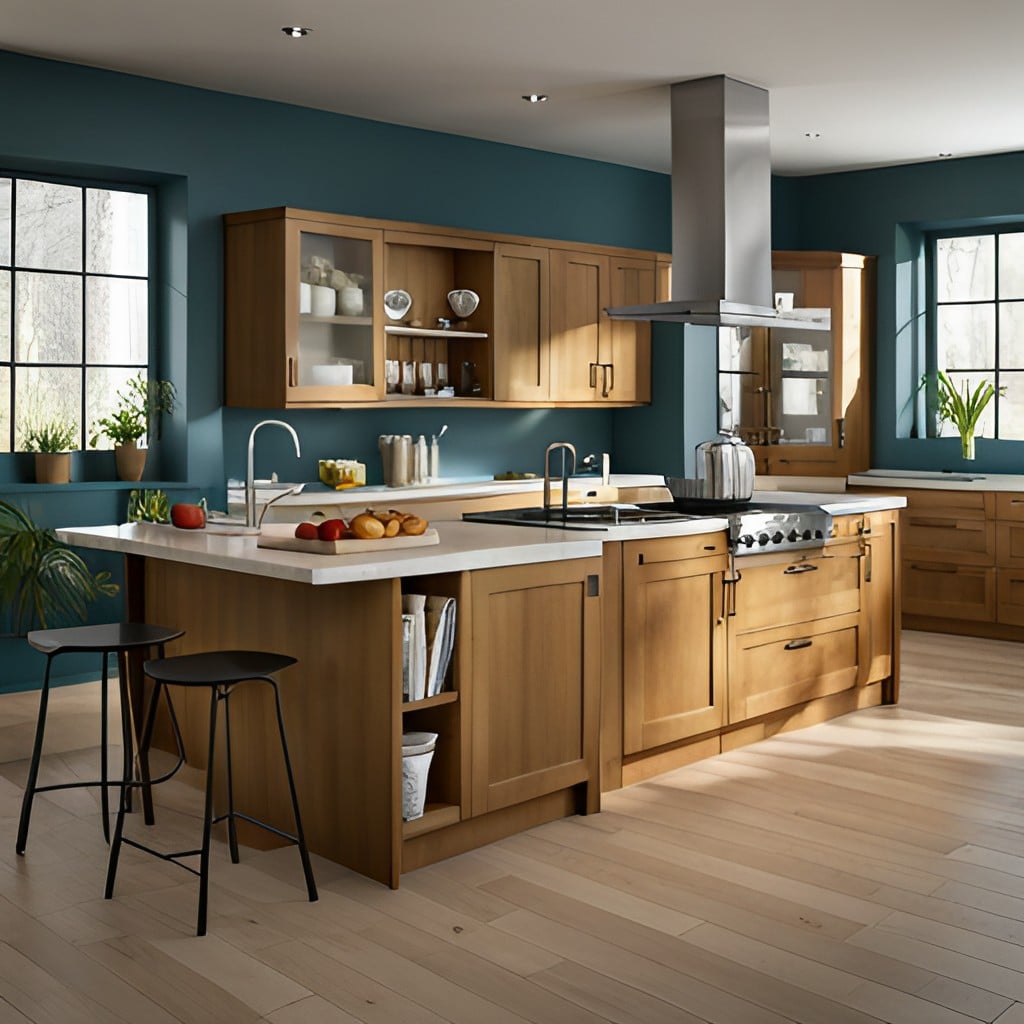
Not only does it offer a visually pleasing aesthetic, but its robust nature ensures longevity, making it a wise investment for your kitchen. In an era where sustainability is increasingly important, opting for wood grain cabinets also speaks to your eco-conscious choices. Explore this trend to bring a touch of nature into your culinary space, offering both style and practicality.
Reimagining Kitchen Layouts
In 2024, the traditional triangular kitchen layout is being challenged as homeowners seek more flexible and personalised options. We're seeing an increasing preference for open-plan designs, which encourage a more social atmosphere and create a seamless flow between the kitchen and other living areas. These layouts provide a more spacious and inviting environment, ideal for entertaining or spending quality time with family.
Key Kitchen Layout Trends
Among the key trends is the rise of the 'working wall', an innovative concept that centralises key kitchen functions - cooking, cleaning, and storage - along a single wall. This frees up the rest of your kitchen space for dining and relaxation, creating a perfect blend of functionality and comfort.
Also emerging is the 'broken-plan' layout. While it retains the openness of an open-plan layout, this design cleverly incorporates different zones within the same space using elements such as partial walls, screens, or changes in level or material. This allows for a degree of separation and privacy while still benefiting from the sense of space and light offered by open-plan designs.
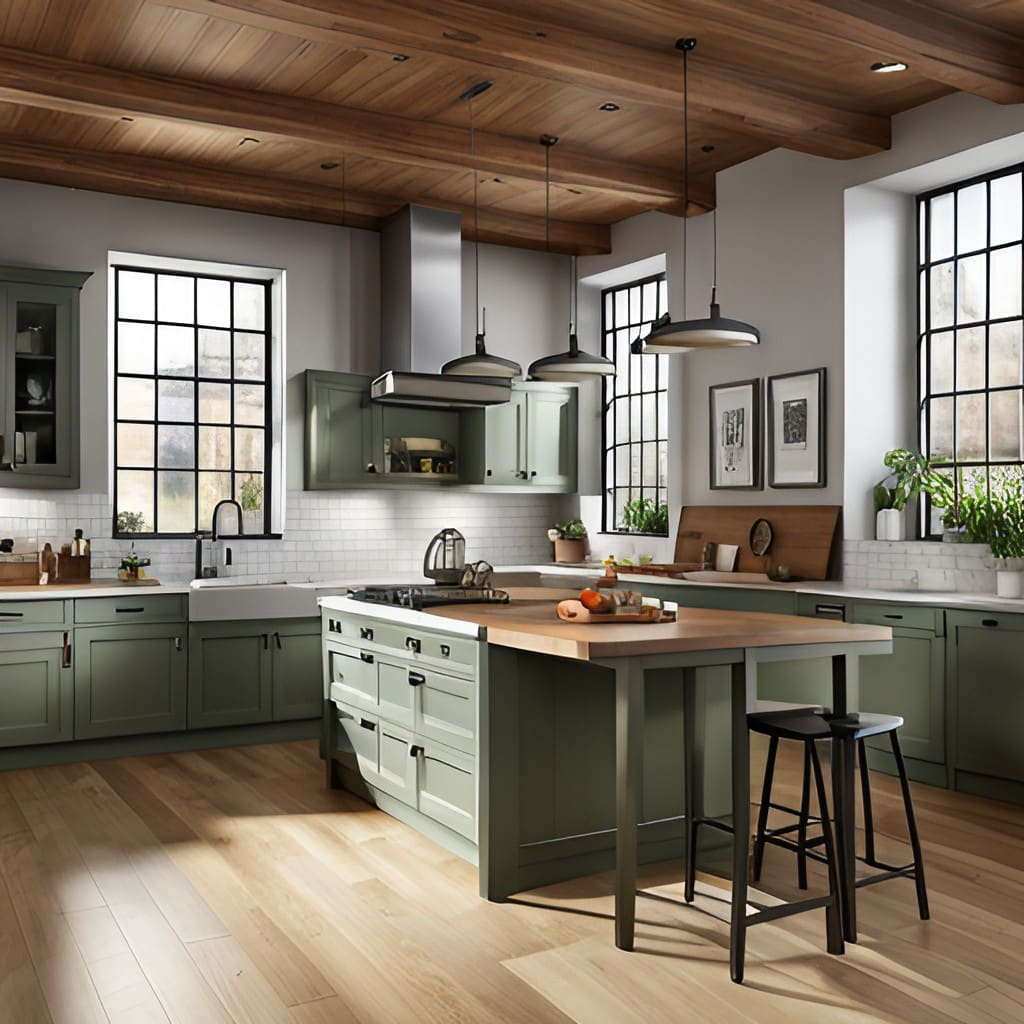
Multipurpose Kitchen Islands – The Heart of the Kitchen
Lastly, we have the multi-functional island, a trend that truly redefines kitchen functionality. Kitchen islands are evolving from being simple prep areas or breakfast bars to include additional features such as cooking zones, integrated appliances, and ample storage. This makes them a focal point in the kitchen and a hub of activity, perfect for cooking, eating, working, and socialising.
The Importance of Sustainable Kitchens
As the impacts of climate change become increasingly evident, the drive for sustainability is permeating every aspect of our lives – including kitchen design. In 2024, the trend towards eco-friendly kitchens is more prominent than ever, reflecting a deeper understanding and commitment to environmental responsibility from both the industry and consumers.
This shift is not just about choosing energy-efficient appliances or recycling waste; it's about a holistic approach that involves every element of the kitchen, from the materials used to the way the space is utilised. It's about creating kitchens that are not just aesthetically pleasing, but also kinder to our planet.
The Growth of Minimalist Kitchens
Minimalist kitchens are making their mark in 2024, embracing the ethos 'less is more'. This design trend emphasises clean lines, limited colour palettes, and uncluttered spaces, but it's more than just aesthetics; it's a lifestyle choice. By reducing clutter and focusing on functionality, minimalist kitchens promote a sense of calm and order, making the kitchen a more enjoyable place to spend time.
Additionally, minimalist kitchens often incorporate sustainable elements, with high-efficiency appliances and sustainable materials playing a key role. So, if you're yearning for a kitchen that combines style, functionality, and sustainability, the minimalist trend may be just right for you.
View this post on Instagram
Eco-Friendly Materials for a Greener Kitchen
In line with the growing trend towards sustainability, eco-friendly materials are also gaining popularity in kitchen design. From recycled glass countertops to bamboo cabinetry, homeowners have more options than ever before to create an environmentally conscious kitchen. These materials not only reduce your carbon footprint but also add unique textures and visual interest to your space.
The materials we predict will rule sustainable kitchen design include:
- Recycled Glass: Offering a contemporary look with a low environmental impact, recycled glass countertops are a stylish and sustainable choice. They are incredibly durable, heat resistant, and available in a variety of stunning colours to suit any kitchen design.
- Bamboo: Bamboo cabinetry is a fast-growing trend due to its rapid renewable properties. This material is not only robust and water-resistant but also offers a unique, warm aesthetic that can invigorate any kitchen space.
- Reclaimed Wood: Using reclaimed wood in your kitchen brings a rustic charm and a story to your space. Not only does it save trees from being cut down, but its natural variation in colour and texture adds a layer of depth and character.
- Cork: A renewable resource that's great for flooring, cork brings a unique texture and a soft, warm feel to your kitchen. It's also naturally water-resistant and provides a comfortable surface to stand on.
- Paper-Based Composite Slabs: Paper-based composite slabs are a less-known but incredibly eco-friendly countertop option. They are remarkably durable, easy to maintain, and available in a wide range of colours and finishes, making them a versatile choice for any kitchen.
- Stainless Steel: As it is recyclable and long-lasting, stainless steel is a great choice for sinks or countertops. Its sleek, modern finish suits a variety of kitchen styles, and its non-porous surface makes it hygienic and easy to clean.
- Bio-Glass: Made entirely from recycled glass, bio-glass is an environmentally friendly option that offers a sleek, modern look. It's non-porous, easy to maintain, and available in a range of subtle, earthy tones.
- Linoleum: Made from natural materials like linseed oil and cork dust, linoleum is an eco-friendly flooring choice. It's durable, easy to clean, long-lasting and available in a variety of colours and patterns to suit any kitchen design.
View this post on Instagram
Coming to a close, it's clear that kitchen design trends for 2024 are all about blending style, functionality, and sustainability. From layered lighting and warm hues to the dramatic use of marble and stone, kitchens are becoming more aesthetic while enhancing their practicality. The increasing trend towards eco-friendly kitchen designs underpins a commitment not just to our personal comfort and convenience but to the well-being of our planet as well.
In essence, the modern kitchen is no longer just a place for cooking; it's a personal statement of style, a hub of social interaction, and a conscious contributor to environmental sustainability. As we continue to evolve and adapt our lifestyles, these trends are likely to further shape the kitchens of the future. Whether you're planning a complete kitchen overhaul or just a few updates, keeping these trends in mind will ensure your kitchen is not just contemporary and chic, but also future-ready and eco-friendly.
Be sure to dive into the Hot Water Taps blog for more kitchen design tips, inspiration and practical advice.
Boiling water taps are swiftly becoming the latest must-have gadget in contemporary kitchens across the UK. With their promise of instant hot water, they offer a blend of practicality and style that's hard to resist. The market is bursting at the seams with a plethora of options, each with its unique features and aesthetics, making the choice simultaneously exciting and daunting.
Just look at the number of people searching 'boiling water tap' on Google and you can quickly see their explosion in popularity:

In this blog post, we’ll navigate together through this maze of boiling water taps. We'll delve into popular models, their distinctive features, safety aspects, and durability considerations. Together, we’ll turn the complex task of choosing the right boiling water tap into an enjoyable exploration.
The Benefits of a Boiling Water Tap
There's a reason boiling water taps (also called hot water taps) have rapidly become the must-have appliance in the UK kitchen. Boiling water taps bring a myriad of benefits to your kitchen, including:
- Convenience: With just a simple twist or push, these taps deliver steaming hot water instantly, eradicating the wait time associated with traditional kettles.
- Efficiency: They only heat the exact amount of water you need, reducing energy consumption and hence, are more eco-friendly.
- Space-saving: By eliminating the need for a kettle, you have more worktop space for your culinary activities.
- Safety: Taps often include safety features such as child locks and cool-to-touch technology, reducing the risk of accidental burns.
- Style: Available in a range of designs and finishes, boiling water taps add a touch of elegance to any kitchen, complementing your modern appliances.
- Versatility: Besides providing boiling water, some models offer additional features like delivering filtered and chilled water, making them a 3-in-1 or 4-in-1 solution.
In the sections that follow, we'll delve deeper into the types of boiling water taps available, helping you choose the perfect fit for your kitchen.
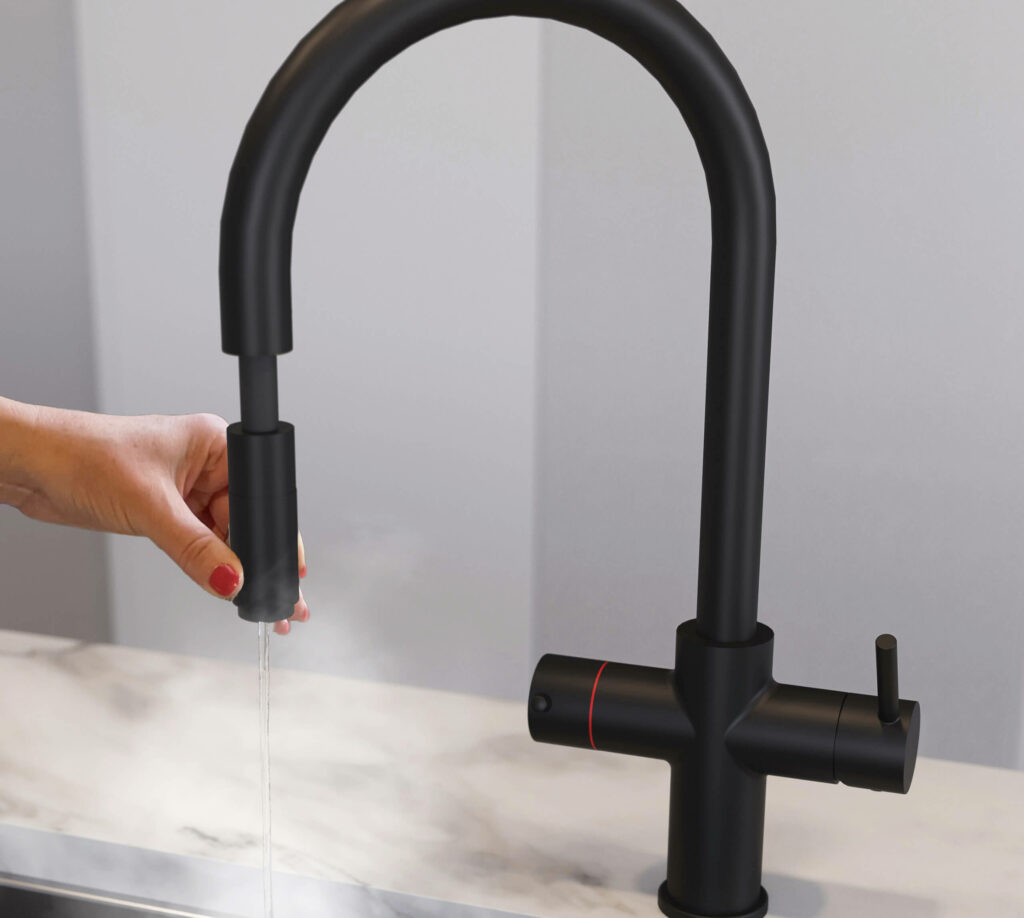
Different Types of Boiling Water Taps
Boiling water taps come in three main types: boiling-only, 3-in-1, and 4-in-1 taps. Each has unique functionalities designed to cater to different needs and preferences.
- Boiling-Only Taps: As the name suggests, these taps deliver only boiling water. They're a great choice if you primarily require hot water for beverages or cooking and already have separate taps for cold and regular hot water. Boiling-only taps are generally the most affordable of the lot, however, you still require a regular mixer tap, which can make them impractical - particularly in smaller kitchens.
- 3-in-1 Taps: These taps offer a step up in functionality. A 3-in-1 tap delivers cold, hot, and boiling water from a single spout, eliminating the need for separate taps. This multifunctionality makes it a perfect all-rounder for your kitchen, saving you space and reducing clutter. Shop the Avista 3-in-1.
- 4-in-1 Taps: The most versatile option is the 4-in-1 tap, which provides cold, hot, boiling, and chilled filtered water. The added benefit of filtered water makes these taps perfect for homes where water quality or taste is a concern. This feature ensures you have pure, great-tasting water for drinking, cooking, or making beverages, directly from your tap. Shop the Quantum 4-in-1.
Each type of tap comes with its own pros and cons, and the best choice often depends on your specific needs, preferences, and budget. In the next section, we will explore the various style options available for your boiling water tap.
Styling Options for Your Boiling Water Tap
Choosing the perfect boiling water tap is not just about functionality, it’s also about aesthetics. After all, your tap will be a focal point in your kitchen, so it's essential that it complements your kitchen's style and décor. Boiling water taps are available in a variety of finishes and shapes to suit any kitchen design:
- Finishes: The finish of your tap can dramatically affect the overall look of your kitchen. You can choose from a wide range of finishes such as brushed nickel for a sleek, modern look, matt black for a high-impact, ultra-modern look, or brushed gold for a touch of luxury. Each finish comes with its own set of benefits; for instance, chrome is known for its durability and easy maintenance, while brushed gold adds a luxe touch to your kitchen.
- Shapes: Boiling water taps come in a plethora of shapes from curved spouts for a soft, timeless look to square spouts for a sharper, contemporary style. Some taps also come with a pull-out spray head, making it easier to rinse dishes and fill pots.
Remember, when choosing the style of your boiling water tap, consider not only your kitchen's current design but also any future renovation plans. You want the tap to continue to fit in even if you decide to change up your kitchen décor. In the next section, we are going to discuss how to care for your boiling water tap to ensure its longevity and optimal performance.
Caring for Your Boiling Water Tap
Taking care of your boiling water tap goes a long way in preserving its quality, longevity, and performance. Regular maintenance doesn't have to be a daunting task, and here are a few simple steps you can take:
- Regular Cleaning: Clean your tap regularly to prevent build-up of limescale and bacteria. A mild, non-abrasive cleaning solution and a soft cloth will do the trick. Remember to never use harsh chemicals or abrasive sponges to avoid damaging the tap’s finish.
- Filter Replacement: If your tap has a filter to provide purified water, remember to replace it periodically as per the manufacturer's instructions. This will ensure you always have clean, great-tasting water.
- Prompt Repairs: In case of any malfunction or leak, call a professional to fix the issue promptly. Neglecting minor problems can escalate to serious issues or even damage your tap.
- Winter Care: In colder months, to avoid any freezing issues, you might need to insulate your tap or follow specific care instructions provided by the manufacturer.
By following these simple tips, you can ensure that your boiling water tap remains a valuable asset in your kitchen for years to come. Find out more about maintaining your boiling water tap here.
In the final section, we'll discuss some of the top boiling water taps available in the UK market today.
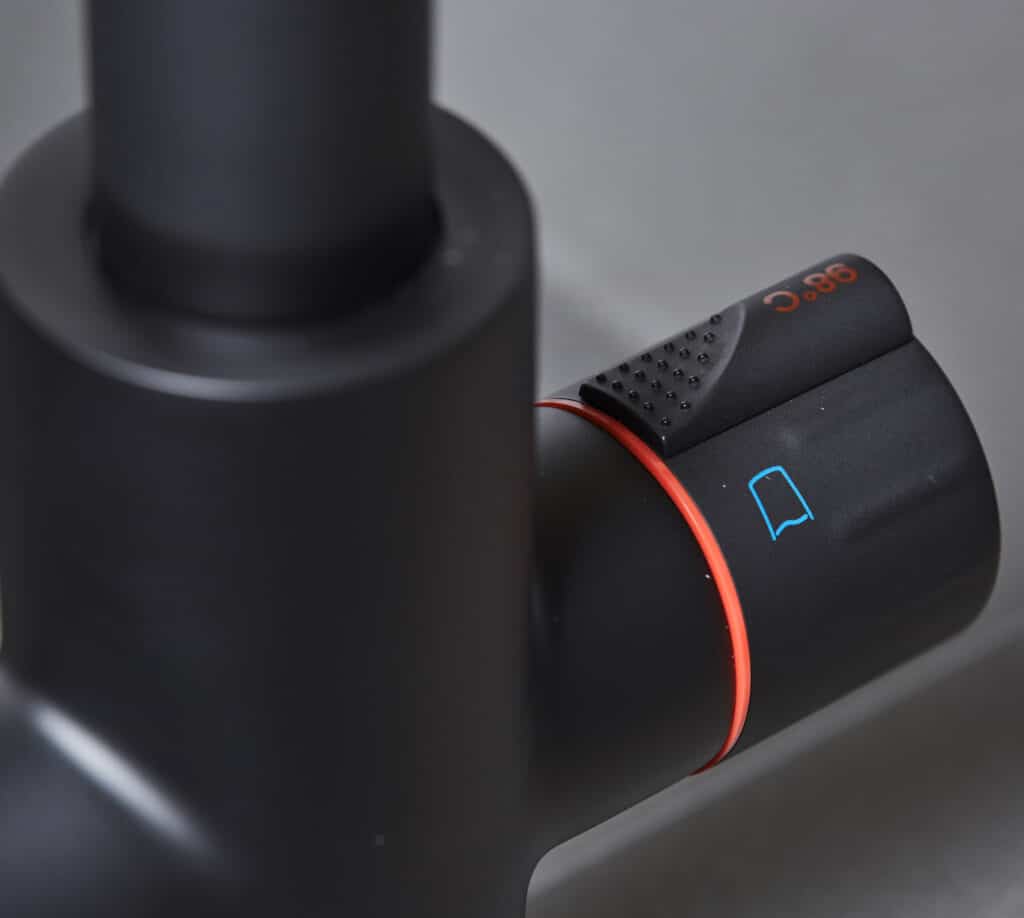
Prioritising Safety with Boiling Water Taps
While convenience and style are paramount when choosing your boiling water tap, safety should always be at the forefront of your decision-making process. Manufacturers like ourselves are aware of the potential risks and have incorporated various safety features into our designs:
- Child-Safe Locks: This feature ensures that boiling water can't be dispensed accidentally or by curious children. The locking mechanism is usually activated by a push-and-turn motion or even a touch-sensitive sequence, which can be complex for a child to operate.
- Cool-to-Touch Technology: To prevent accidental burns, many taps are designed so that they remain cool to the touch, even when dispensing boiling water. This feature is particularly useful if you have young children or elderly family members who are more susceptible to burns.
- Automatic Shut-off: Some models have an automatic shut-off feature that stops the flow of boiling water after a certain time or volume, preventing accidents and conserving energy.
Safety measures should be an integral part of your boiling water tap choice. Always ensure that your selected model incorporates these vital features to create a safe environment in your kitchen. Read more about safety when using boiling water taps here.
Making the Final Choice
Choosing the right boiling water tap hinges on a variety of factors, including your individual needs, kitchen setup, and style preferences. Here are some practical tips to help you make an informed choice:
- Assess Your Needs: Are you a tea enthusiast who requires boiling water at a moment's notice? Do you value the convenience of filtered water for drinking and cooking? Your unique requirements will determine whether a 3-in-1, boiling-only, or 4-in-1 tap is the best fit for you.
- Consider Your Kitchen Setup: The size of your under-sink cabinet can influence the type of water tap you can install. Some models require more space for the boiler tank, so check your under-sink space before making your decision.
- Match Your Style: Your tap should not only meet your functional needs but also contribute to your kitchen’s aesthetics. Consider the style of your kitchen and choose a tap shape and finish that complements your decor.
- Prioritise Safety: If you have children or elderly individuals in your home, prioritise safety features like child-safe locks and cool-to-touch technology.
- Think Long-Term: Opt for a tap from a reputable manufacturer that offers a good warranty. Also, consider the availability and cost of replacement filters if you opt for a tap with a purified water function.
Remember, the right boiling water tap will bring convenience, style, and safety to your kitchen. Be sure to consider all these factors for a choice that you'll be happy with for years to come. Learn more about the difference between boiling water taps here.
Staring at a glass of foggy water straight from your tap can be a bit disconcerting, can't it? We've all been there, and it's easy to jump to the worst-case scenarios. But before you panic, let us put your mind at ease. In the vast majority of cases, cloudy tap water in the UK isn't a health hazard - it's perfectly safe to knock back.
Our aim with this handy guide is to clear the air (or should we say, water?) on why your tap water might be looking a bit murky and how to tackle it. So take a deep breath, and let's dive into the nitty-gritty of cloudy tap water and its remedies!
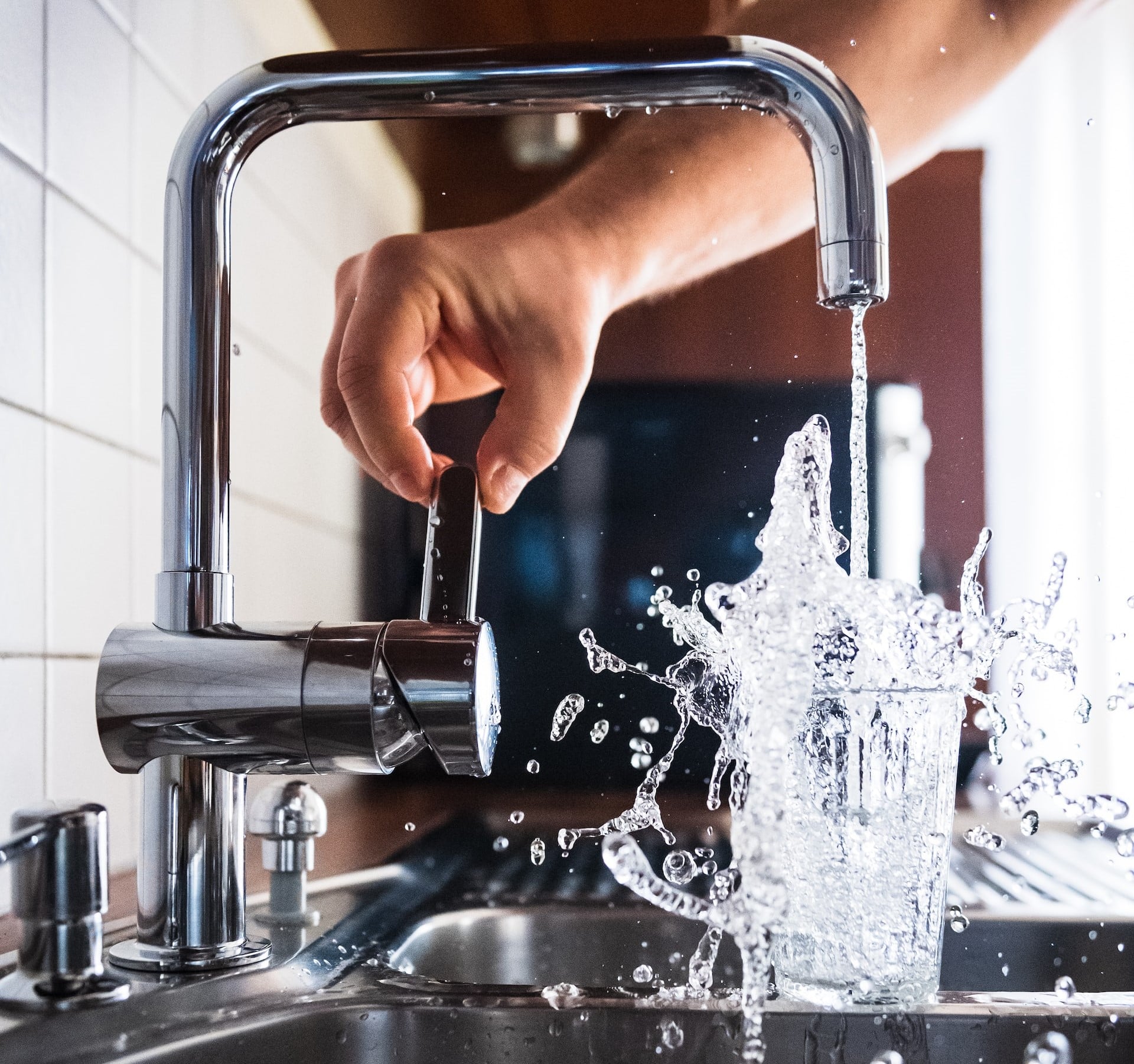
Aeration: The Most Common Cause of Cloudy Tap Water
Cloudy tap water is most commonly caused by the presence of tiny air bubbles, which can give the water a greyish or white appearance. This phenomenon is generally harmless and the cloudiness typically dissipates within a minute when the water is left to stand in a glass. This can often be attributed to changes in water pressure or aeration in your supply network and you should see the water clear within a minute or so.
Other Causes of Cloudy Water
If the water doesn't begin to clear over the course of a minute, there may be other causes behind the murky water you're seeing. These might include:
- High mineral content (Hard Water): Areas with hard water have high concentrations of minerals like calcium and magnesium. These minerals can make the water appear cloudy. The solution is to install a water softener or descaler in your home.
- Pipe corrosion: Old, corroded pipes can cause rust to enter your water supply, giving it a cloudy appearance. If this is the case, you may need to replace your home's plumbing. Learn more about pipe corrosion here.
- Water heater issues: If you only notice cloudy water when using hot water, the issue might be with your water heater. Sediment can build up in the tank over time and get stirred up when the hot water is used. Flushing your water heater can resolve this issue.
- Water works: If your local water supply is undergoing maintenance or repairs, it could stir up sediment and cause your water to become cloudy. This should resolve itself once the work is completed - though you can contact your council if you are concerned that it's affecting your water supply.
- Contaminants: Although rare, contaminants such as bacteria, algae, viruses, fungi, minerals, and man-made pollutants can cloud water. If you suspect this, it is best to get your water tested and then treated accordingly.
There are some simple steps you can take to investigate the cause of your cloudy water, if you suspect it's caused by something other than harmless air bubbles. Let's get into it...
Identifying the Cause
Identifying the cause of cloudy tap water can be as simple as making a few careful observations and conducting some easy home-based tests. Here are some tips to help you pinpoint the issue:
- Observe the speed of clearing: If the cloudiness clears from the bottom upwards within a few minutes, it's most likely due to tiny air bubbles. The cloudiness often disappears quickly when the water is left standing in a clear glass.
- Hot or cold?: If the cloudiness only appears in hot water, the issue could be your water heater. If it appears in both hot and cold water, pipe corrosion or high mineral content could be the culprits.
- Check for discolouration: If your water is a reddish-brown or yellow colour, this could indicate rust, suggesting that your pipes might be corroded.
- Does it smell?: Water contaminated with bacteria or algae often has a noticeable smell. If your tap water smells unpleasant, it's best to get it tested.
- Taste the water: Though it's not the most delightful method, tasting the water can also give you some clues. If it has a metallic taste, it could be due to high iron content or rust in your water.
Remember, if you're ever unsure about the safety of your water, it's best to seek professional advice You can contact your local water supplier for further assistance or arrange for a water quality test from a plumber.
What's Involved in a Water Quality Test?
A water quality test conducted by a professional plumber or your local water supplier involves a comprehensive analysis of your tap water. The professional takes a water sample from various points within your home, like the kitchen tap, bathroom tap, and even straight from your water meter. This sample is then sent to a certified laboratory for examination.
The lab analyses the water sample for a variety of criteria, including pH level, hardness, and the presence of bacteria, algae, and other contaminants. You then receive a detailed report outlining any issues detected during the test. Depending on your results, the plumber or water supplier will recommend the best course of action to rectify any issues and ensure you have clean, safe tap water.
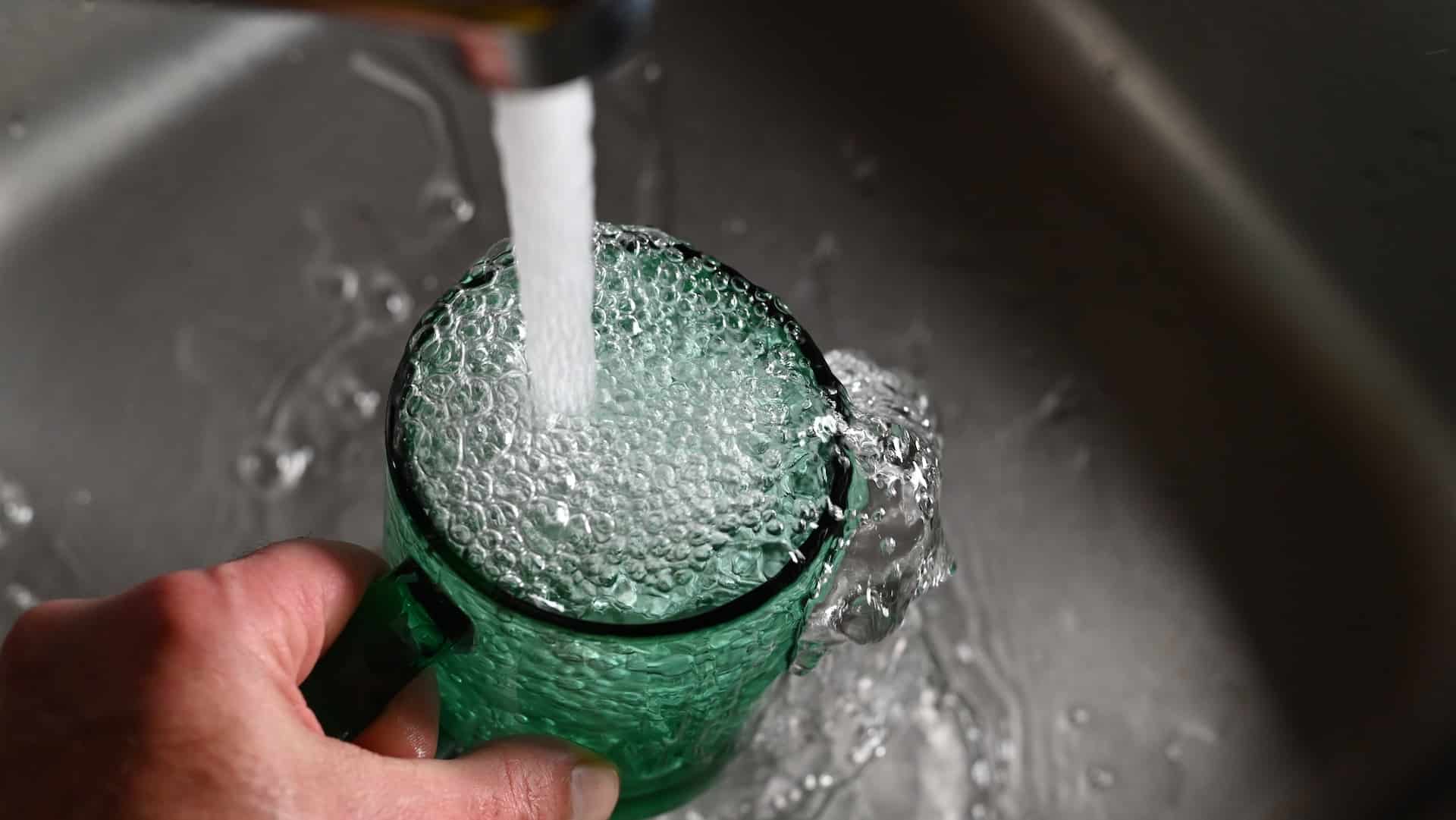
Is Tap Water Safe to Drink?
Yes, British tap water is overwhelmingly safe to drink. The DWI (Drinking Water Inspectorate) monitors tap water and regulates suppliers to ensure that it meets the highest quality standards. You can read more about the DWI’s role in keeping drinking water safe here.
Why Would You Filter Tap Water?
Though tap water is safe to drink, many people prefer the taste of filtered water. Installing a tap water filter at home can help reduce unpleasant tastes, smells, and chlorine in your water supply - plus it's a more cost-effective and eco-friendly option than buying bottled water.
Filters also offer extra protection against potential contaminants that may slip through the DWI’s rigorous standards. While these levels are safe for consumption, some people prefer to err on the side of caution and use a filter for their tap water. Read more about ways to filter tap water here, including through the use of a 4-in-1 kitchen tap.
To Conclude...
While cloudiness in your tap water might initially raise concerns, it's important to remember that it is typically harmless and often attributed to air bubbles or changes in water pressure. However, if the cloudiness persists, it could indicate issues such as high mineral content, pipe corrosion, water heater sediment, local water works, or, although rare, contaminants.
Rest assured, UK tap water is heavily regulated and safe to drink, with water filters offering additional peace of mind for those who prefer an extra layer of protection.
Welcome to your guide on mastering the art of kitchen safety! From the simple slice of a knife to the steamy hiss of a boiling water tap, the kitchen is filled with potential hazards. But fear not, this article will transform you from a kitchen novice to a safety guru. We'll delve into each aspect - be it handling knives like a pro, becoming a whizz at fire safety, or getting your head around safe food practices.
And let's not forget about the little ones - their safety is paramount, so we'll cover that too. So, grab a cuppa and read on, because making your kitchen a safe haven is easier than you might think.
The Imperative of Kitchen Safety
Why is kitchen safety so important, you may ask? Well, the kitchen can be a place of creativity and joy, a heart of the home where meals are prepared and memories are made. However, it can quickly turn into a dangerous place if safety rules are not adhered to.
Firstly, kitchen accidents happen more frequently than you might think. According to the Royal Society for the Prevention of Accidents, there are approximately one million visits to A&E due to accidents in the kitchen in the UK alone each year. These incidents range from minor burns to life-threatening injuries.
Secondly, prevention is always better than cure. By educating ourselves about potential hazards and how to prevent them, we can significantly reduce the risk of accidents. Here is a list of common kitchen hazards:
- Misuse of knives
- Fire from unattended cooking
- Scalds from boiling water or steam
- Food contamination
- Trips over clutter
Lastly, children are also at risk. They can easily access low cupboards or drawers storing potentially harmful objects or substances. Moreover, children are naturally curious and may reach out to hot pots or boiling water taps.
In short, a lack of knowledge and carelessness in the kitchen can result in dire consequences. But don't fret - the upcoming sections will equip you with all the necessary knowledge to ensure that your kitchen remains a safe and enjoyable space for everyone.
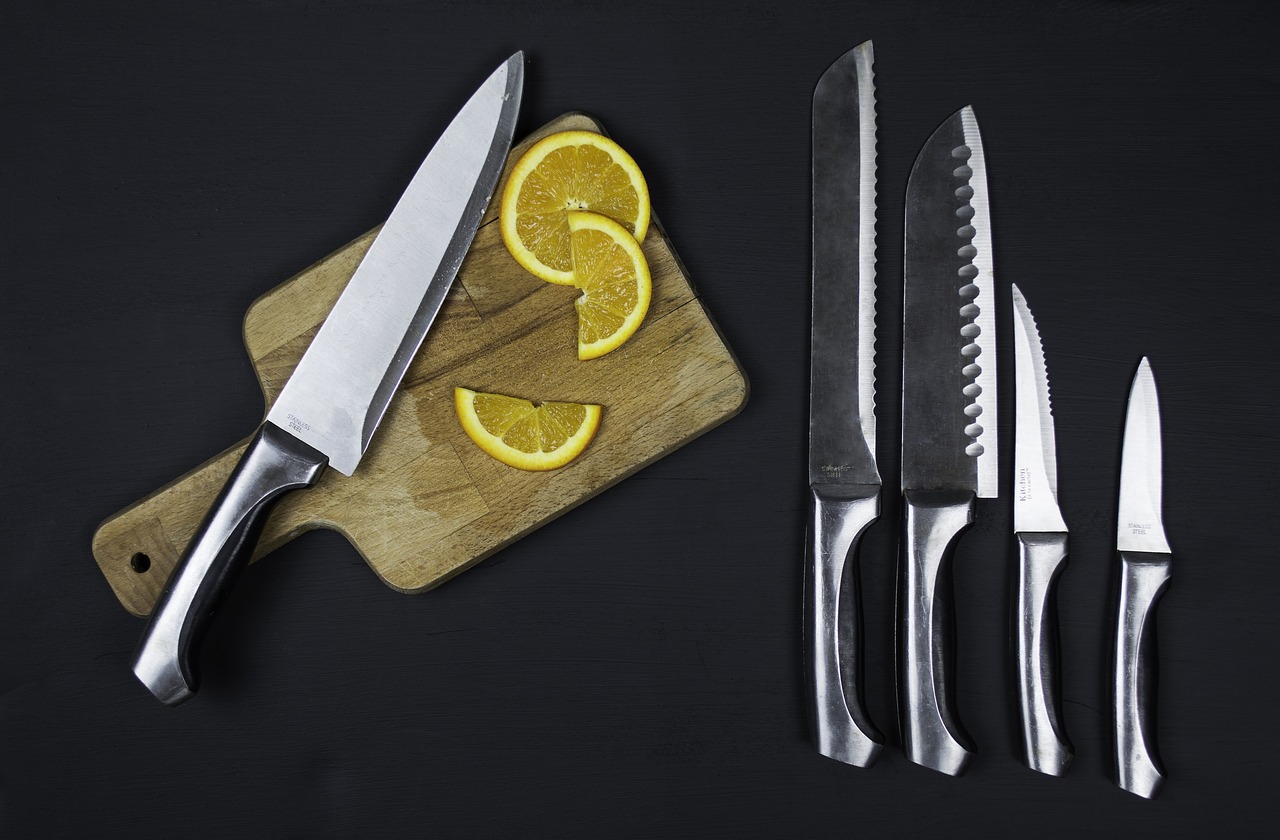
Safe Usage of Knives and Sharp Tools
Knives and other sharp tools are indispensable in any kitchen, aiding us in the essential tasks of chopping, slicing, and dicing. However, these useful utensils can quickly become hazards if not handled properly. The most common risks associated with kitchen knives include accidental cuts and wounds, often due to improper grip, distraction, or lack of knife maintenance.
Techniques for Safely Handling Knives
Here are some handy tips to help you navigate the potentially risky business of handling kitchen knives:
- Hold the knife correctly: Grasp the handle close to the blade and with your thumb and index finger on opposite sides. This gives you better control of the knife.
- Use the right knife for the job: Each knife is designed for a specific purpose. For example, serrated knives are perfect for cutting bread, while chef’s knives are ideal for chopping vegetables and meats.
- Keep your knives sharp: It may seem counterintuitive, but a sharp knife is safer than a blunt one. Blunt knives require more force to cut, increasing the chance of slipping and causing an injury.
- Cut on a flat surface: Always prepare your food on a flat and stable surface. This ensures that whatever you're cutting doesn't move unexpectedly and cause an accident.
- Never leave knives in a filled sink: Leaving knives in a filled sink can lead to accidental cuts when reaching in. Always wash knives separately and immediately after use.
- Store knives properly: Keep them in a knife block or on a magnetic strip, out of reach from children.
Remember, the key to safe knife usage is awareness and care. When handled with respect, your kitchen knife will remain an instrument of culinary creation, far from the danger zone.
Mastering Fire Safety
In a setting where heat and flame are necessary tools, fire safety is of utmost importance. Cooking is the primary cause of home fires and fire injuries, so learning how to prevent them and knowing what to do in case of a fire are crucial. Common fire-related hazards in the kitchen include flammable objects near the cooker, overheated oil, faulty appliances, and unattended cooking.
Fire Prevention: Tips and Techniques
Here are some practical tips to help you stay one step ahead of fire hazards:
- Stay in the kitchen while cooking: Always pay full attention when you're cooking, especially if you're using high temperatures or cooking something that catches fire easily like oil.
- Keep your cooker clean: Built-up grease and fat can ignite and cause a fire, so ensure your cooker and oven are clean and free from grease.
- Keep flammable items away: Tea towels, oven gloves, paper towels, and other flammable items should be kept away from the cooker.
- Install a smoke alarm: This can alert you early to any potential fires, providing you with crucial extra time to respond.
- ,: Regularly check your appliances for any signs of damage to the cables, plugs or the appliance itself.
In case a fire does break out, remember the key safety advice: Get out, stay out, and call the emergency services. Try to close doors behind you as you leave to help hinder the spread of fire and smoke. Never use water for oil or electrical fires; instead, use a fire blanket or a suitable fire extinguisher. If you’re unsure, don’t take any risks – leave it to the professionals.
The Essentials of Food Safety and Hygiene
Food safety and hygiene are fundamental aspects of kitchen safety. Ignoring them can lead to foodborne illnesses, caused by harmful bacteria and viruses. Contamination can occur at any stage, from food preparation to storage, making it essential to understand and follow correct food handling practices. Common food safety hazards include improper cooking temperatures, cross-contamination between raw and cooked foods, and incorrect food storage.
Ensuring Safe and Hygienic Food Handling
Here are some practical tips to maintain high standards of food hygiene in your kitchen:
- Wash your hands: Always wash your hands thoroughly with soap and warm water before and after handling food, especially raw meat, poultry, and fish.
- Avoid cross-contamination: Use different chopping boards and knives for raw and cooked foods to prevent the spread of harmful bacteria.
- Cook at the right temperature: Ensure food is cooked thoroughly to kill any harmful bacteria. Use a food thermometer to check the internal temperature of your dishes.
- Refrigerate promptly: Store leftovers in the fridge within two hours of preparation to slow down the growth of bacteria.
- Follow the 'Use-by' date: Always consume food before its 'Use-by' date. Past this date, it's not safe to eat even if it looks and smells fine.
Remember, food safety is a crucial aspect of kitchen safety. By following these guidelines, you can protect yourself and your family from foodborne illnesses, enjoying your culinary adventures with peace of mind.

Using Boiling Water Taps Safely
Boiling water taps are becoming increasingly popular in modern kitchens due to their convenience and efficiency. They provide instant boiling water, making them a great tool for speeding up cooking and preparation tasks. However, like any kitchen appliance, it's crucial to use them safely to prevent accidents like burns or scalding.
Staying Safe with Boiling Water Taps
While boiling water taps are incredibly safe, here are some safety measures you can take to ensure accidents don't happen:
- Be aware of the tap’s function: Always remember that the water coming out of this tap can be extremely hot. Make sure all family members, especially children, understand this.
- Install safety features: Many boiling water taps come with safety features like childproof handles and insulated sides. Make sure these are always activated and functional.
- Use carefully: Ensure hands, particularly of children, are kept at a safe distance from the tap when it's in use to avoid burns.
- Respond quickly to spills: If boiling water spills, clean it quickly and carefully to prevent injuries.
- Regular maintenance: Keep the tap and its parts, like the tank and filter, in good working order through regular maintenance.
By adhering to these guidelines, you can enjoy the benefits of your boiling water tap without compromising safety. Remember, the key to kitchen safety is awareness, carefulness, and the correct use of appliances.
Understanding How Boiling Water Taps Work
Boiling water taps are a marvel of modern kitchen technology, providing on-demand hot water with a simple twist of a handle. But how do these ingenious appliances work?
In essence, a boiling water tap is connected to a compact, under-sink tank that stores and rapidly heats water to near-boiling temperatures. When you turn on the tap, hot water is drawn from the tank and replaced with cold water, which is then heated for future use. This continuous cycle ensures a ready supply of hot water at your fingertips, anytime you need it.
For safety, many models include a two-stage safety mechanism to prevent accidental operation, as well as insulated bodies to protect against burns. The tanks are well-insulated too, so they retain heat efficiently without consuming excessive energy. They’re an eco-friendly and convenient addition to any kitchen.
If you'd like to delve deeper into the mechanics of boiling water taps, we've got you covered. Visit our comprehensive guide on how boiling water taps work for a detailed understanding.

Keeping Kids Safe in the Kitchen
The kitchen can be a fascinating place for children, filled with intriguing gadgets, enticing aromas, and the hustle and bustle of meal preparations. However, it's also a place where potential hazards lurk, from sharp utensils to hot surfaces and boiling water. As parents, we must balance our little ones' curiosity and learning with ensuring their safety.
Nurturing a Safe Environment for Children
Here are some practical tips to help you create a safer kitchen environment for your children:
- Supervise: Always keep an eye on your kids when they are in the kitchen, especially if they're helping with meal preparation. Never leave them alone in the kitchen.
- Teach them about kitchen safety: Educate your kids about the potential hazards in the kitchen, like hot surfaces, sharp objects, and electrical appliances.
- Keep dangerous items out of reach: Ensure that sharp knives, cleaning products, and other potentially harmful items are stored well away from children's reach.
- Use childproof locks: Install childproof locks on drawers, cupboards, and appliances to prevent curious little hands from accessing dangerous items or areas.
- Set safety boundaries: Establish and enforce kitchen safety boundaries, like keeping a safe distance from the cooker and not touching the boiling water tap.
- Use stool with supervision: If children are helping with meal prep, make sure they're safely standing on a sturdy stool and not climbing on potentially unstable surfaces.
Remember, child safety in the kitchen is not just about setting rules and restrictions; it's about fostering an environment where they can learn and explore safely. By following these tips, you can encourage your children's culinary curiosity while ensuring their safety. After all, a safe kitchen is a happy kitchen!
Conclusion: The Key Takeaways for a Safer Kitchen
In conclusion, the key to a safer kitchen lies in knowledge, vigilance, and proper equipment use. By understanding the potential hazards associated with cooking appliances, such as boiling water taps, and by adhering to safety guidelines, you can significantly minimise the risk of accidents.
For children's safety, supervision, education, and creating a kid-friendly environment are essential. We've covered some of the fundamental aspects of kitchen safety, but knowledge is power, and there's always more to learn. To delve deeper into kitchen safety, check out the Health and Safety Executive's guide or the Food Standards Agency's food hygiene tips. Remember, a safe kitchen is the foundation of a happy home.
Welcome to our comprehensive guide to the fascinating world of water filtration! If you've ever taken a sip from your tap and wondered about the quality of water you're consuming, you're not alone. Many of us are turning our attention to how we can ensure our tap water is as healthy and clean as possible.
In this article, we'll be exploring five popular methods of filtering tap water at home, each with its own unique characteristics, benefits, and drawbacks. We'll discuss how each process works and weigh up its pros and cons to help you make an informed decision about which method will suit your particular situation. So, fill up your glass and join us on this hydrating journey!
Introduction to Water Filtering
Before we dive into the methods, it's worth mentioning that while filtering tap water at home isn't a necessity, many people prefer the taste and feel of filtered water. It can help improve the flavour of your favourite brew, and make drinking water a more pleasant experience. With a variety of options to choose from, let's start our journey into the ins and outs of home water filtration systems.
Is Filtering Tap Water Necessary?
In the UK, tap water is indeed safe to drink; it undergoes rigorous testing and treatment protocols to ensure it meets the high standards set by the Drinking Water Inspectorate. However, it's also important to note that the water quality can vary, largely due to geographical differences. In particular, those living in areas with 'hard' water, characterised by a higher concentration of minerals such as calcium and magnesium, may notice a distinct chemical or minerally taste in their tap water.
This not only impacts the taste when drinking it straight from the tap but can also subtly alter the taste of food and beverages prepared with it. Therefore, while not a necessity, using a water filter in these areas can lead to a noticeable improvement in the taste of tap water, contributing to better-tasting food and drink - who wouldn't want that?!

#1) Using a Built-In Water Filter
Built-in water filters are a popular option for many homes across the UK. These devices are integrated directly into your existing water supply system, providing a seamless transition from regular tap water to filtered water. There are several types of built-in filters, including reverse osmosis systems and boiling water taps that come with a filter attached to the tank.
Reverse Osmosis Systems
Reverse osmosis systems are one of the most sophisticated types of water filters. They work by forcing water molecules through a semi-permeable membrane, leaving behind impurities and contaminants, thereby providing clean, filtered water. This system is highly effective at removing a broad range of contaminants, including harmful substances like lead and arsenic.
Boiling Water Taps with Attached Filters
A boiling water tap with an attached filter is another innovative solution for filtering tap water. These specialised taps not only filter your tap water but also provide instant access to boiling water. The filter, usually attached to the tank, filters out common impurities such as chlorine and lead, improving the taste and smell of your tap water.
In the next sections, we'll delve into the pros and cons of these built-in filters to guide you in making an informed decision.
Pros of Built-In Water Filters:
- Comprehensive filtration: Built-in water filters, particularly reverse osmosis systems, are capable of removing a wide range of contaminants, ensuring you have access to clean, safe drinking water.
- Convenience: Once installed, these filters provide a seamless transition from regular tap water to filtered water, without the need for extra steps or equipment.
- Longevity: Built-in filters tend to have a longer lifespan than other types of filters, meaning you won't need to replace them as frequently.
- Improved taste: Both reverse osmosis systems and boiling water taps with filters significantly improve the taste and smell of your tap water, which can enhance your culinary and beverage experiences.
Cons of Built-In Water Filters:
- Initial cost: The initial cost of purchasing and installing a built-in water filter can be quite high, making it a significant investment.
- Maintenance: While these filters have longer lifespans, they do require regular maintenance and occasional filter replacement, which can add to their lifetime cost.
- Slow filtration process: Depending on the system, the filtration process can be slow, which might not be ideal if you need large amounts of filtered water quickly.
- Wastage: Reverse osmosis systems in particular can waste a significant amount of water in the filtration process. For every litre of filtered water produced, several litres of water can be wasted.
In conclusion, built-in water filters offer comprehensive filtration, convenience, and longevity. They can significantly improve the taste and smell of tap water, enhancing your culinary and drinking experiences. However, their high initial cost, maintenance needs, potentially slow filtration process, and significant water wastage (especially in the case of reverse osmosis systems) are important factors to consider.
For more insights and detailed information on boiling water taps, we recommend checking out our Ultimate Guide to Boiling Water Taps, where you can delve deeper into their features, installation process, and maintenance requirements.
#2) Commercial Water Filters
Commercial water filters, a familiar sight in UK homes, offices, and businesses, provide a straightforward approach to elevating the quality of your tap water. With their diverse range, including jug filters, under-sink filters, and refrigerator filters, these filters are engineered to strip water of various contaminants and impurities. Now, let's delve into the specifics of each type.
How Commercial Water Filters Work
Commercial water filters work by using a combination of physical and chemical filtration methods to remove impurities from your water.
Jug Filters
Jug filters, or pitcher filters, are among the most common and straightforward ways to filter tap water. They utilise activated carbon or sometimes ion-exchange resin to remove impurities from the water. Water is poured into the top of the jug, where it slowly seeps through the filter, leaving behind contaminants and flowing into the main compartment of the jug. The activated carbon within the filter traps pollutants, such as chlorine, improving both the taste and odour of the water.
Refrigerator Filters
Refrigerator filters are built into refrigerators equipped with water and ice dispensers. These filters work similarly to the systems above, using activated carbon to trap common impurities, like chlorine and lead. The result is cleaner and more refreshing water and ice directly from your fridge.
Under-Sink Filters
Under-sink filters, as the name suggests, are installed under your kitchen sink and directly connected to the cold water supply. They utilise a combination of activated carbon and other filtering materials to remove a wide range of contaminants from your tap water. As the water flows through the filter, impurities such as chlorine, heavy metals, and bacteria are trapped, leaving you with clean, filtered water dispensed straight from your standard kitchen tap.
Pros and Cons of Commercial Water Filters
Pros of Commercial Water Filters:
- User-Friendly: Commercial water filters are generally simple to use. Whether it's filling up a water jug or replacing a refrigerator filter, these systems are designed for user convenience.
- Affordability: Compared to built-in systems, commercial water filters are typically much more affordable. They offer a cost-effective solution for those seeking cleaner, tastier tap water.
- Variety of Options: With jug filters, refrigerator filters, and under-sink filters, there is a wide variety to choose from, allowing you to find a solution that best fits your needs.
- Improved Taste: Like built-in systems, commercial filters also remove impurities that negatively affect the taste and smell of tap water.
Cons of Commercial Water Filters:
- Frequent Filter Replacement: Commercial filters often require more frequent filter changes than built-in systems. This can add to the long-term cost and can also be inconvenient.
- Limited Filtration: Depending on the type, some commercial filters might not filter out as many contaminants as built-in systems. For example, standard jug filters might not remove certain heavy metals or bacteria.
- Slow Filtration: Jug filters, in particular, can take a while to filter a full pitcher of water.
- Space Requirements: For under-sink filters and some refrigerator filters, you'll need enough space to accommodate the system.
So, to sum things up, commercial water filters are like the friendly neighbourhood superhero of tap water, offering an easy-to-navigate and budget-friendly solution to make your tap water better. They've got a whole crew - from simple jug filters to the more advanced under-sink systems - there's a hero for every kind of water need you may have. But remember, every superhero has a kryptonite.
In this case, it's the possible need for frequent filter swapping, the somewhat limited power of some models to banish all water villains, a little bit of a slow pace in filtration, and a need for their own personal bat cave (read: storage space). So keep these in mind when you're picking your water-saving superhero.
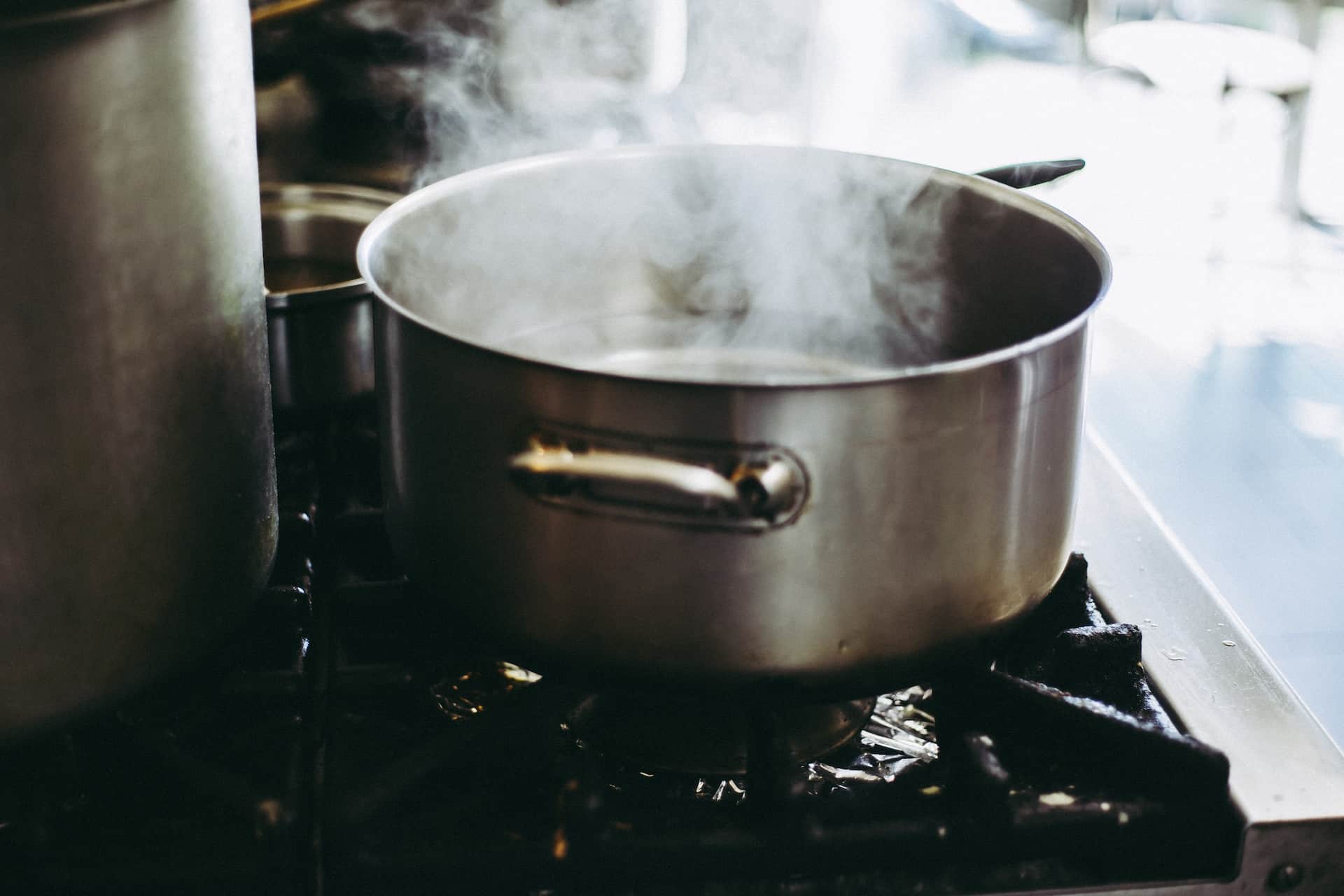
#3) Boiling Water
Boiling water is an age-old method of treating water, and is still commonly used in households worldwide. This cost-effective and straightforward method doesn't require any specialised equipment, making it a popular choice for many. However, it's not without its limitations. Let's take a closer look at how boiling water can help improve its safety and taste, and weigh up the pros and cons.
What Does Boiling Water Do?
Boiling water is a physical method of purification that kills bacteria, viruses and parasites that could cause illness. This is achieved by heating the water to a high temperature, usually at or near boiling point, for a specified period of time. The heat destroys or inactivates harmful organisms, making the water safer to drink.
Despite its effectiveness against many types of pathogens, boiling does have some limitations. First and foremost, while it can kill bacteria and viruses, it does not remove chemical contaminants, heavy metals or solid impurities that might be present in the water e.g. chlorine.
What's more, boiling water can be energy-intensive, especially when done on a large scale or over a long period. It also requires access to a reliable heat source. Finally, the taste of boiled water is often considered flat and unappealing due to the loss of dissolved oxygen.
Pros of Boiling Water:
- Simplicity: Boiling water is a simple and accessible method that doesn't require any complex equipment or technical knowledge.
- Effectiveness: It is highly effective at killing many types of harmful bacteria, viruses, and parasites.
Cons of Boiling Water:
- Limited Purification: Boiling cannot remove chemical contaminants or solid impurities from water.
- Energy Use: It can be energy-intensive, particularly when it's necessary to boil water for extended periods.
- Taste: The taste of boiled water is often considered flat and less refreshing due to the loss of dissolved oxygen.
In a nutshell, boiling water is a bit like a reliable old friend - dependable, and straightforward but somewhat limited in capabilities. It's a tried-and-tested way to kill off most of the bad guys in your water, but it won't necessarily catch them all, especially if they're of the chemical variety. Plus, it can be a bit of an energy drain and might leave your water tasting a tad bland. But for a quick and simple solution, it has stood the test of time.
#4) Sand Purification Method
The sand purification method, also known as slow sand filtration, is a natural process that has been used for centuries to purify water. This old-school method employs a simple yet effective process to filter out impurities from water. It's a bit like having a mini water treatment plant right in your backyard! Without the need for chemicals or complex equipment, it's a sustainable, environmentally-friendly choice for those looking to reduce their carbon footprint.
How does Sand Purification Work?
The sand purification process utilises a bed of fine sand and sometimes layers of gravel, creating a natural filtration system. When water is poured into the sand filter, it slowly trickles down through the layers of sand and gravel. As it moves through the layers, impurities such as sediment, particles and some bacteria are trapped and retained in the sand, resulting in cleaner, safer water at the bottom.
This method also includes a biological layer known as the 'schmutzdecke' (a German word meaning dirty skin), which forms at the top layer of sand. The schmutzdecke hosts beneficial microorganisms that further aid in the purification process by digesting and trapping bacteria and other pathogens.
Although the sand filtration system is an effective, natural method for purifying water, it does have some limitations. It's not as quick or convenient as other modern filtration methods, and it may not remove all types of contaminants, especially chemicals and viruses. It also requires periodic maintenance to clean and replace the sand.
Pros of Sand Purification:
- Natural and Eco-friendly: It's a chemical-free, natural process that is kind to the environment.
- Affordability: Once set up, the ongoing costs are minimal as it only requires the replacement of sand occasionally.
Cons of Sand Purification:
- Limited Filtration: While it can handle sediment and some bacteria, it may not fully remove chemical contaminants and viruses.
- Maintenance: Requires regular maintenance to clean and replace the sand.
In essence, the sand purification method is the eco-warrior of water filtration methods. It’s a natural, low-cost option that is kind to the environment. But like all warriors, it has its strengths and weaknesses. While it can tackle sediment and some bacteria, it might struggle against chemical contaminants and viruses. Plus, it does need a bit of care and attention now and then for it to perform its best.
#5) UV Water Filtration
Ultraviolet (UV) water filtration is a modern, chemical-free method of purifying water. This technology uses UV light to kill or inactivate harmful microorganisms, ensuring that your water is safe and clean to drink. It's a bit like having a microscopic army of light warriors zapping away the bad guys in your water!

How Does UV Water Filtration Work?
UV water filtration works by exposing water to UV light, which is a powerful disinfectant. When water passes through a UV system, the light targets the DNA and RNA of microorganisms, inactivating them and preventing them from reproducing. This method effectively kills harmful bacteria, viruses, and parasites without adding chemicals or altering the taste and odour of the water.
However, UV filtration does have its limitations. Firstly, it does not remove dissolved solids, minerals, or chemicals from water. Additionally, the water must be clear for the UV light to effectively reach all the microorganisms, meaning that any sediment or turbidity can reduce its effectiveness. It also requires electricity to run, which could be a limitation in some situations.
Pros of UV Water Filtration:
- Effectiveness: UV filtration is highly effective at killing many types of harmful microorganisms.
- Chemical-free: It does not use any chemicals, making it a safe and natural method of purification.
- Taste: This method does not alter the taste or odour of the water.
Cons of UV Water Filtration:
- Limited Purification: UV filtration does not remove dissolved solids, minerals, or chemicals from water.
- Clarity Required: The effectiveness of UV filtration can be reduced if the water is not clear.
- Electricity Dependence: It requires electricity to work, which might not be available in all situations.
In summary, UV water filtration is like the high-tech superhero of water purification methods. It's fast, effective, and chemical-free, ensuring that your water is safe to drink without altering its natural taste. However, like any superhero, it does have its Achilles heel. It isn't able to remove dissolved solids or chemicals, and it requires both clear water and a reliable electricity source. Nevertheless, for a high-tech, chemical-free solution, it certainly shines a light on water purification!
Conclusion
In summary, the choice of water filtration method depends on several factors including the level of purification required, speed, cost, maintenance needs and eco-friendliness.
- Built-in filters are reliable and long-lasting but are expensive upfront.
- Boiling is a quick, low-cost method but may not remove all contaminants.
- Activated charcoal and sand purification are good for certain impurities and are eco-friendly, but may not be fully effective against all contaminants.
- Reverse osmosis offers a high level of purification but can be costlier and less eco-friendly.
- UV filtration is quick and very effective against microorganisms, but requires clear water and electricity, and does not remove chemical contaminants.
Choosing the Right Filtering Method for Your Needs
The process of choosing the right water filtration method ultimately comes down to your individual needs and circumstances. For those who are environmentally conscious, methods such as sand purification or activated charcoal may be appealing due to their eco-friendliness. If you live in an area with unstable electricity, UV filtration may not be the best choice, while those with a larger budget may opt for the reverse osmosis method due to its high efficiency.
It's important to consider factors like maintenance, cost, and efficiency, as well as the nature of contaminants in your local water supply when making your decision. Whatever method you choose, remember that the goal is to ensure that your tap water is clean, safe, and suitable for you and your family's daily needs.
Are you tired of waiting for the kettle to boil? Do you daydream about instant cups of tea or coffee at the turn of a tap? If so, boiling water taps might just be your cup of tea - pun intended!
In this article, we’re going to take a deep dive into the world of boiling water taps - how do they provide boiling water in an instant, what makes them tick, and why might you consider installing one in your own kitchen? Trust us, by the end of this, you'll be as excited about boiling water taps as we are!
What Are Boiling Water Taps and How Do They Work?
A boiling water tap operates through a specialised system installed beneath your sink, connected to both the mains and your home's water supply. The heart of this system is a dedicated tank that not only heats the water but also maintains it at a precise temperature.
As a result, every time you activate the tap, you have immediate access to hot water, eliminating the wait time typically associated with traditional heating methods. This instant availability of boiling water is what sets these taps apart in modern kitchen designs.
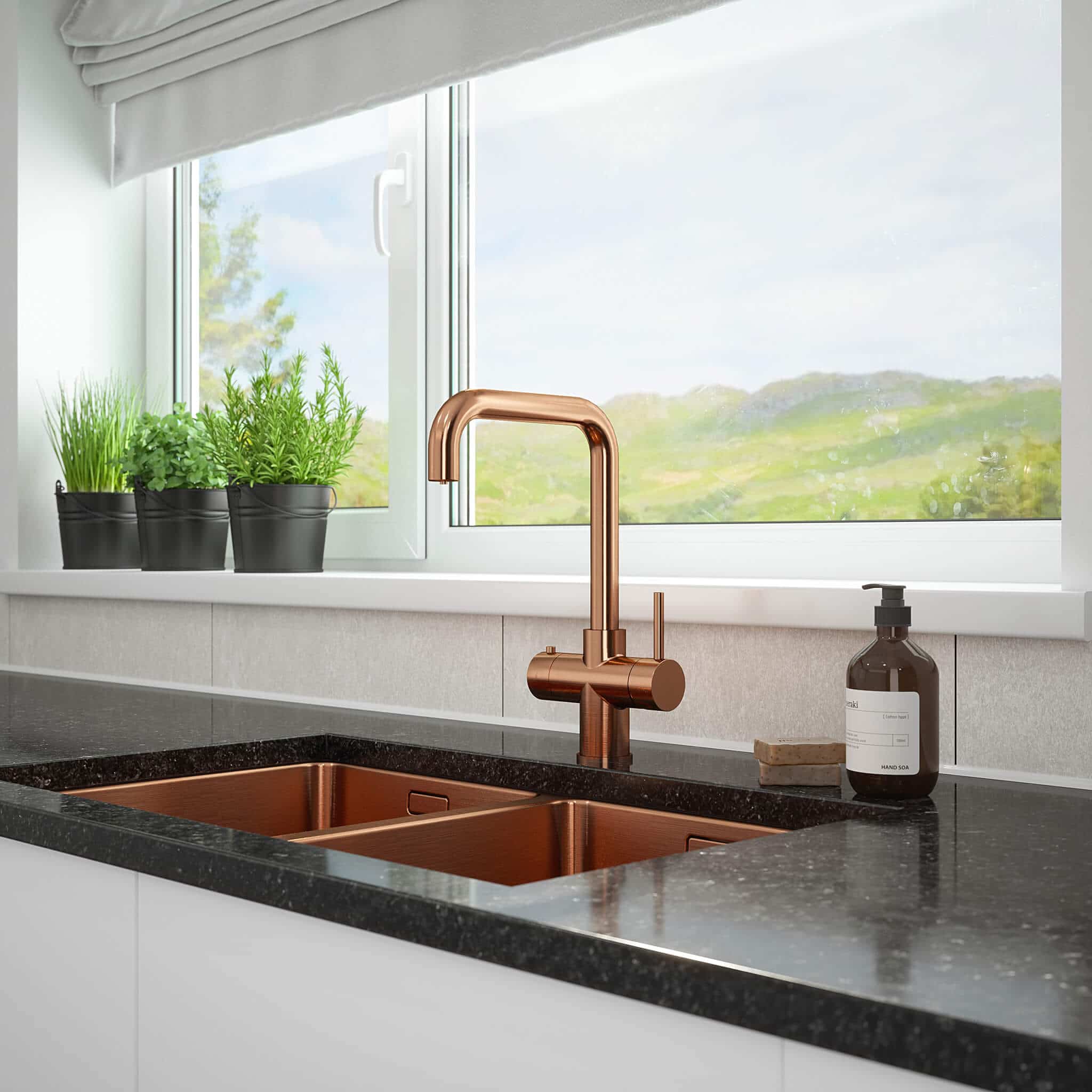
Components of a Boiling Water Tap
Let's delve into the key components that make a hot water tap function as it does:
- The Boiler Tank: This is the engine room of a boiling water tap system. It's typically a compact unit that fits neatly under your sink and heats the water to a near-boiling temperature. The boiler tank maintains the water at this temperature so that it's ready to go whenever you need it.
- The Filter: The filter plays a crucial role in ensuring the water you get from your tap is as clean and pure as possible. It removes any impurities and contaminants from the water before it reaches the boiler tank, providing you with a healthier and tastier hot drink.
- The Tap: The tap is the final point of contact between you and your hot water. Most boiling water taps are designed with safety in mind, featuring child-safe handles and insulated sides to prevent anyone from getting scalded accidentally. The tap typically has two separate flow controls – one for regular cold and hot water, and another for instant boiling water. 4-in-1 taps may have an additional control for chilled filtered water.
By combining these components, a boiling water tap provides a seamless and efficient way to access hot water instantly, all from the convenience of your kitchen sink.
The Installation Process
Installing a boiling water tap might seem like a daunting task, but with the right preparation and a step-by-step approach, it can be quite straightforward. Always remember to follow the manufacturer's instructions and consult a qualified professional if in doubt. Here are the general steps involved in the installation process:
- Choosing the Right Space: The first step in installing a boiling water tap is identifying the right spot in your kitchen. You'll need a spot near your sink and an accessible area beneath it to house the boiler tank and filter.
- Turn Off the Water Supply: Before starting with the installation, make sure to turn off the water supply to avoid any water damage. It's always a good idea to clear out the area under the sink to give yourself plenty of room to work.
- Install the Boiler Tank and Filter: Now, it's time to install the boiler tank and the filter inside the cabinet under your sink. Each model will have specific instructions, so ensure you follow these to the letter. Typically, you'll mount these securely to the side or the base of the cabinet.
- Connect the Water Supply: Once the tank and filter are in place, you’ll need to connect them to your water supply. This usually involves attaching a T-piece to your cold water pipe, which will split the water flow between the main tap and the boiler tank.
- Fit the Tap: With the tank and filter fitted, you can now install the new tap in your chosen position. You'll need to fix the tap to the sink or worktop and connect the tap to the boiling water system using the hoses supplied.
- Turn on the Water Supply: Once everything is connected and tightened, you can turn the water supply back on. Check for any leaks and make sure the tap is working properly.
- Power Up and Test: Finally, plug in the boiler tank and turn it on. It might take a short while before the system heats up. Once it has reached the correct temperature, test the tap to ensure you get a steady flow of boiling water.
For more detailed instructions, including demonstration videos, head to our installation page.
Maintenance and Energy Efficiency
Boiling water taps are designed with user-friendly maintenance in mind:
- Filter Changes: Regularly changing the filter, typically every 6 to 12 months as advised by the manufacturer, ensures your tap water remains clean and fresh. This also contributes to the longevity of the tap and boiler tank.
- Indicator Lights: Some models come equipped with an indicator light to signal when it's time for a filter change.
- Leak Checks: Conducting periodic checks for leaks, particularly after filter changes, can help prevent potential damages.
- Leave it On: It's best to leave the boiling water tap on overnight, only switching it off via the boiler tank when it will be left for 2 weeks or longer.
Read more about maintaining a boiling water tap here.
Are boiling water taps energy efficient?
In terms of energy efficiency, boiling water taps excel:
- Insulated Boiler Tank: The insulated boiler tank maintains water at near-boiling temperatures without excessive energy use, providing hot water on demand.
- Efficiency Over Traditional Methods: This is more energy-efficient than a standard kettle, which often heats more water than necessary, leading to wasted energy.
- Energy and Carbon Footprint Reduction: By only heating the amount of water you need, a boiling water tap can conserve energy and decrease your carbon footprint.
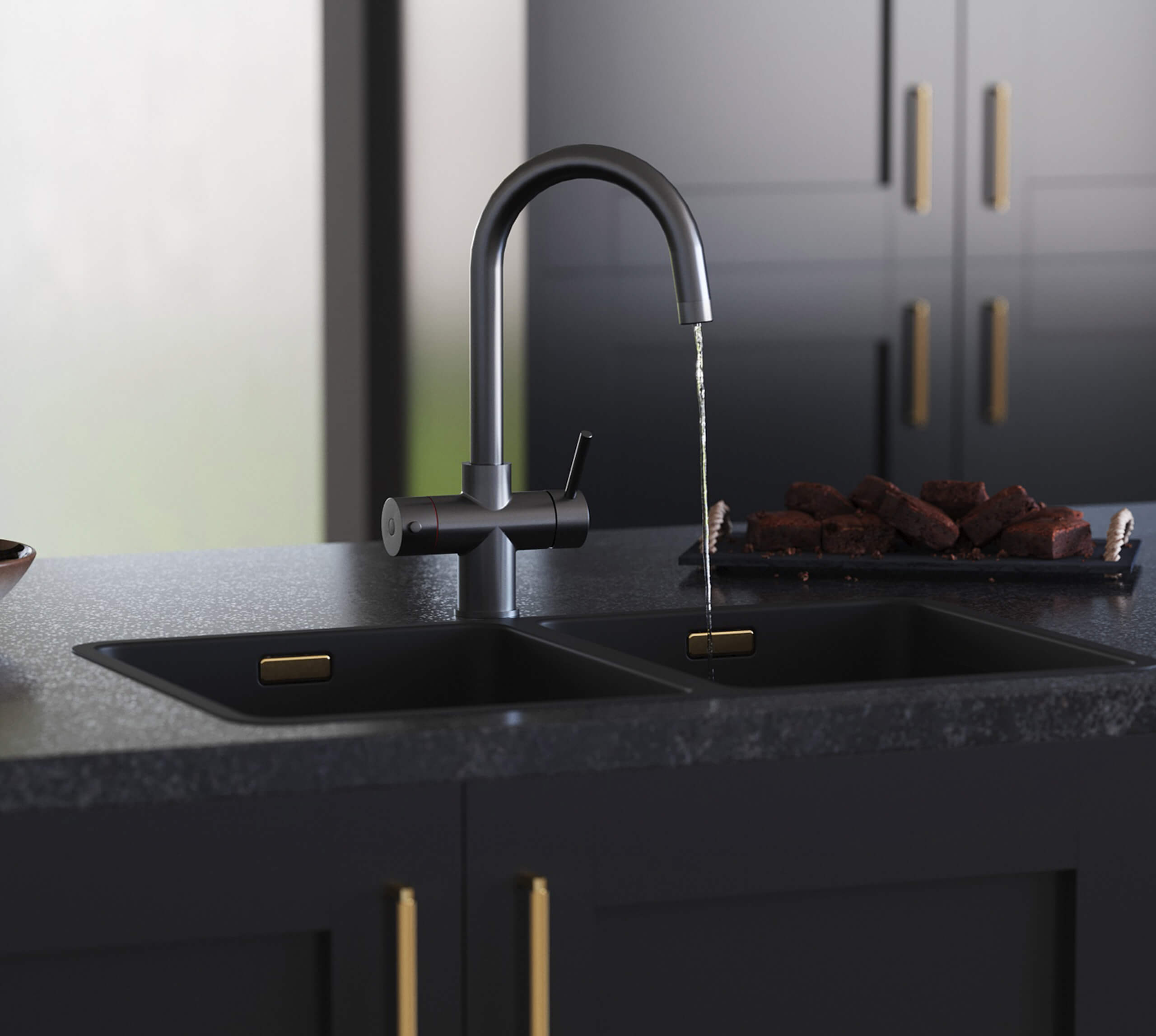
Final Thoughts
In a nutshell, boiling water taps are the triple threat of kitchen fixtures: they're convenient, stylish, and energy-efficient. And guess what? We happen to sell them right here at Hot Water Taps! For a deep dive into why these taps are revolutionising the British kitchen, check out our Ultimate Guide to Boiling Water Taps.
Did you ever stop to consider how much electricity your boiling water tap uses? Or how it stacks up against the common kettle? Well, buckle up, because you're about to embark on a journey into the nitty-gritty of boiling water taps.
We've packed this guide with everything you need to know—from how these modern gizmos work to their energy efficiency and comparisons with traditional kettles. Whether you're thinking about upgrading your kitchen fixtures or simply curious about the energy usage of these taps, we've got you covered. So, let's delve in, shall we?
Introduction to Boiling Water Taps
Boiling water taps, as their name suggests, deliver hot water on demand, removing the need for a kettle. They're a modern kitchen luxury, offering convenience and sleek design – but how do they fare on the energy efficiency front?
Energy consumption is a hot topic these days, and for good reason. We're all looking for ways to reduce our carbon footprint and save on those pesky energy bills. As such, understanding the energy usage of household appliances, like boiling water taps, is vital.
In fact, it's especially relevant for potential boiling water tap users to understand their energy usage before making the investment. After all, while these taps offer a great deal of convenience, they're only truly worth it if their running costs and environmental impact align with your expectations and lifestyle.

Understanding Boiling Water Taps
The working mechanism of boiling water taps is quite fascinating. Underneath the shiny tap you see on your kitchen worktop, there's a complex assembly designed to deliver hot water instantly. At the heart of this system is a heating unit, often tucked away underneath the sink. This unit, also known as a boiler or tank, is filled with water from your mains supply.
When you activate the tap, the water is rapidly heated to near boiling point by the unit's heating element. This process takes place almost instantaneously, which is why you can get hot water on demand. The water is then pushed up through the tap and voila - you have boiling water at your fingertips.
These taps come with various features that enhance their functionality and safety. For example, many models have child safety locks to prevent accidental activation and potential burns. Others may have an insulated spout to ensure the tap stays cool to the touch even when hot water is flowing.
Additionally, high-end models (all of our taps bar Avista) also offer temperature control, allowing you to adjust how hot the water gets. This is especially handy for making delicate teas that require a specific water temperature.
Understanding how these taps work is the first step in appreciating their efficiency and knowing how to calculate their energy usage. Now, let's move on to comparing their energy consumption with that of traditional kettles.
How Much Electricity Do Boiling Water Taps Use?
Now that we've got a grip on how boiling water taps operate, let's tackle the key question: how much electricity do they actually use? Well, to keep water at a piping hot temperature, these taps utilise approximately 10 watts of energy. Doesn't sound like much, does it? To put things into perspective, consider the humble kettle, which gobbles up a whopping 2 to 3 kilowatts every time you flick the switch.
Now, let's imagine you're a tea or coffee enthusiast who savours about six cups a day. If each kettle boil takes about five minutes, you'll be spending roughly half an hour each day just waiting for your water to boil. Sound familiar? Here's the kicker - this daily routine uses about 15 times more energy than an instant hot water tap would.
That's right, by replacing your kettle with an instant hot water tap, you could significantly reduce your energy consumption, even if you're someone who can resist a hot cuppa every hour! So, in terms of energy efficiency, the boiling water tap clearly comes out on top.
Measuring Your Boiling Water Tap's Electricity Consumption
While boiling water taps are generally more energy-efficient than traditional kettles, it's helpful to calculate your device's exact energy usage to ensure it aligns with your household's energy goals. So, how can you measure your boiling water tap's electricity consumption? Let's break it down into a simple step-by-step guide:
- Identify the tap's power rating: You can find this information in the user manual or on the label of the tap's heating unit. It's typically expressed in watts (W).
- Calculate the tap's hourly usage: The power rating gives the energy consumed per hour. For instance, if your tap's power rating is 10 watts, it uses 10Wh (watt-hour) of electricity every hour.
- Estimate daily usage: Multiply the hourly usage by the number of hours the tap is on each day. For a tap that's always on (24 hours), the calculation for our example would be: 10Wh x 24 = 240Wh.
- Convert to kilowatt-hours: Electricity companies bill in kilowatt-hours (kWh), so convert your figure from watt-hours to kilowatt-hours by dividing by 1,000. In our example: 240Wh ÷ 1,000 = 0.24 kWh per day.
- Estimate annual consumption: Multiply the daily consumption by the number of days in a year (365) to get the annual consumption. In our example: 0.24 kWh x 365 = 87.6 kWh per year.
- Calculate cost: Multiply the annual consumption by your energy rate (found on your electricity bill) to get the annual cost. If your rate is 15p per kWh, for example, the annual running cost would be: 87.6 kWh x £0.15 = £13.14
Remember, these steps provide a rough estimate. Actual electricity consumption may vary based on factors such as the tap model, usage habits, and the precise temperature of the hot water.
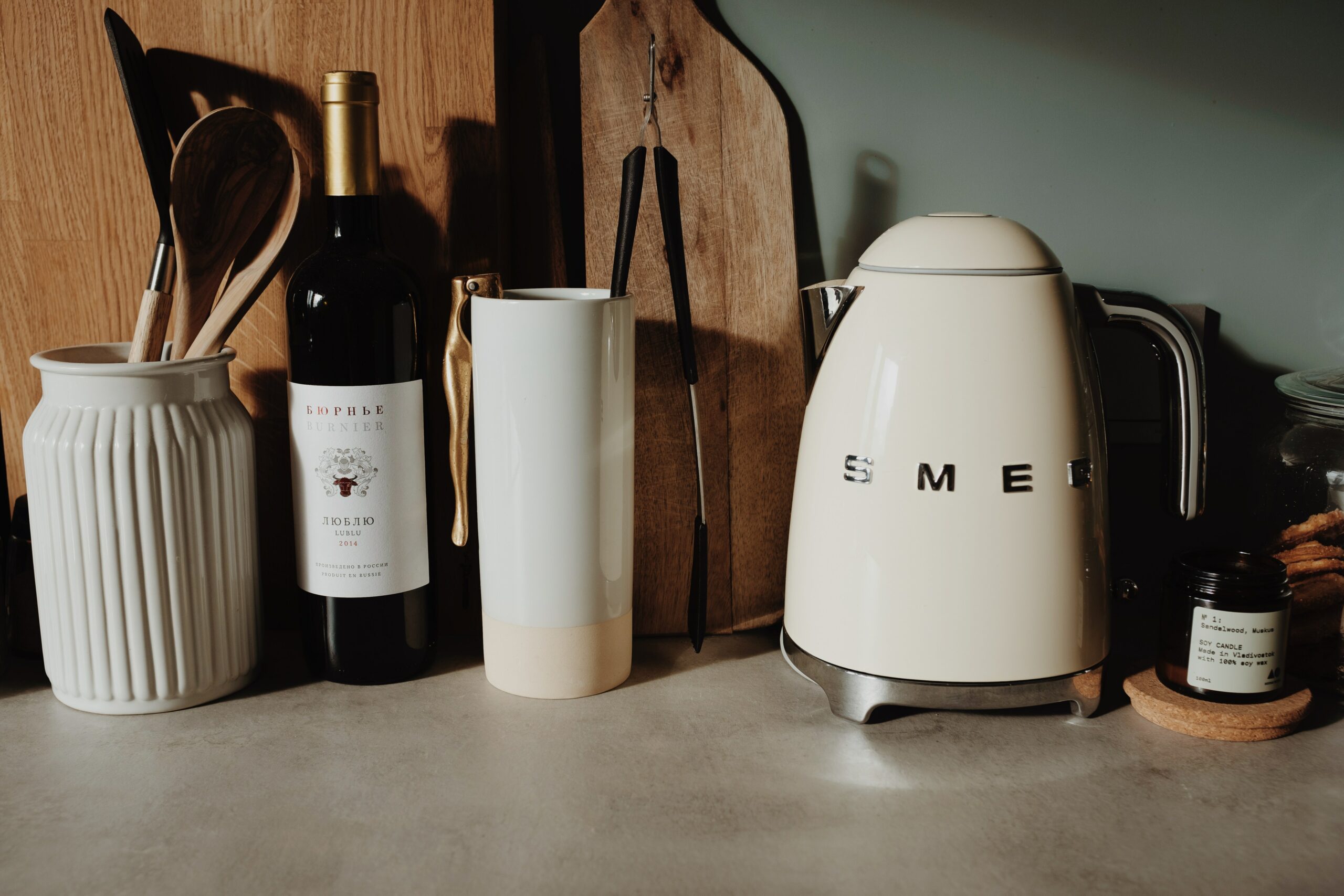
Should I Turn My Tap Off to Save Electricity?
Interestingly, while it might seem logical to turn off your boiling water tap to save energy when it's not in use, this isn't actually the most efficient approach. You see, turning the tap off means that every time you want hot water, the system has to heat up from cold. This requires significantly more energy than maintaining the water at a steady hot temperature.
Therefore, in general, it's better to leave your boiling water tap on, even when you're not using it. The one exception to this rule is if you're leaving your house for an extended period, say, two weeks or longer. In such cases, turning off your boiling water tap can help to save electricity and reduce your energy bills. So, unless you're packing for a holiday, it's best to let your boiling water tap do its thing and keep your water hot and ready for use.
Final Thoughts
In conclusion, boiling water taps are a fantastic, energy-efficient alternative to traditional kettles, using just a fraction of the electricity and saving you significant time and energy in your daily routine. With boiling water taps, you get convenience, efficiency, and a hot cuppa whenever you fancy, all at your fingertips.
Want to dive deeper into the world of boiling water taps? Check out our comprehensive Ultimate Guide to Boiling Water Taps for more information.
Boiling water taps have become a game changer in our daily lives, haven't they? From brewing a cuppa to speeding up your morning routine, these nifty devices bring convenience right to your fingertips.
In this blog post, we'll dive into the pros and cons of turning off your boiling water tap, helping you make the best decision for your home and lifestyle. So, let's get started!
Should You Turn Your Boiling Water Tap Off?
If you're wondering whether you should leave the boiler tank of your boiling water tap on overnight, you should know that it's more energy-efficient to keep it running, as it takes more power to reheat the water from a cool temperature than to simply maintain its warmth.
However, there are a couple of exceptions:
- If you're jetting off on holiday for more than a week or so
- If the room housing the tank is about to get seriously chilly (i.e. below freezing)
Besides the two exceptions above, there's really very little reason to switch your tap off. If safety is a concern, you can rest assured that our tanks constantly monitor water temperature and switch off in the case of a fault.
So, what exactly is a boiling water tap?
Imagine having instant boiling water at your fingertips – that's what a boiling water tap brings to your modern family home. No more waiting for the kettle to boil or a pan to heat up, these taps make blanching veggies, cooking pasta or noodles, and brewing tea and coffee a breeze.
These nifty gadgets are gaining popularity in home kitchens, thanks to their sleek design and cutting-edge technology. They heat up in a flash, with minimal noise or fuss. Plus, they come with safety features like childproof lock systems to prevent any accidental scalds from hot water. And let's not forget the temperature control settings that guarantee the perfect cuppa every time. What's not to love?
You can read more about our boiling water taps here.
Advantages of a boiling water tap
For all you home cooks out there, this clever gadget is an absolute game changer. Not only does it make whipping up hot drinks like coffee or tea a piece of cake, but it's also a lifesaver for meal prep that calls for boiling water (think soups, pasta, and more). In busy family homes, a boiling water tap saves precious minutes every day, whether you're rinsing veggies, boiling eggs, or cooking up some noodles.
And guess what? Some boiling water taps, like our 4-in-1 models, even come with a filtered cold water feature. That means you get crisp, cold drinking water on demand, too! How brilliant is that?
The cost of running a boiling water tap
You might be thinking, "Surely boiling water taps must be expensive to run?" Well, you're in for a pleasant surprise! They actually cost around 4-10p a day, or between £1-£4 a month. That's pretty much what you'd spend on boiling a kettle a few times daily, so it's unlikely to make a dent in your energy bills.
And let's not forget the savings on gas when you no longer need to heat pans of boiling water on the hob. With the boiler tank storing enough hot water for even the most demanding cooking needs, it's a win-win situation!
Health and safety concerns
Of course, safety is a top priority when it comes to boiling water taps. While they're designed with safety in mind, it's crucial that you use your tap responsibly, just like you would with a kettle. Hot water can cause nasty burns if mishandled, leading to skin injuries, infections, and scarring.
But don't worry – our boiling water taps come with a child-safe spring lock that also turns off the tap when you step away from the sink. This nifty feature ensures you won't have to fret about scalding accidents, giving you peace of mind while enjoying your hot water tap's benefits. The spout itself is also insulated to prevent its surface from becoming hot to the touch, and the tank monitors the system's temperature to prevent overheating.
How to Maintain a Boiling Water Tap
Boiling water taps are a dream come true when it comes to convenience, and the good news is they require minimal maintenance. However, like any appliance, they need some TLC to keep performing at their best over time. Here are a few tips to help you maintain your boiling water tap:
- Check connections: Regularly inspect the connections to ensure they're fully tightened.
- Replace filters: Swap out the filter every 6 months to prevent scale buildup, which can impede water flow.
- Clean the tap: Gently clean the tap with a mild detergent solution and buff it dry using a microfibre cloth. This ensures your tap stays looking great while maintaining hygiene.
- Avoid harsh cleaners: Steer clear of bleach or abrasive scrubbers, as these can damage your tap's finish.
Our boiling water taps are not only affordable and durable, but they also save you precious time every day. Want to learn more about how a boiling water tap works? Dive into the world of instant hot water and discover the advantages for yourself!


